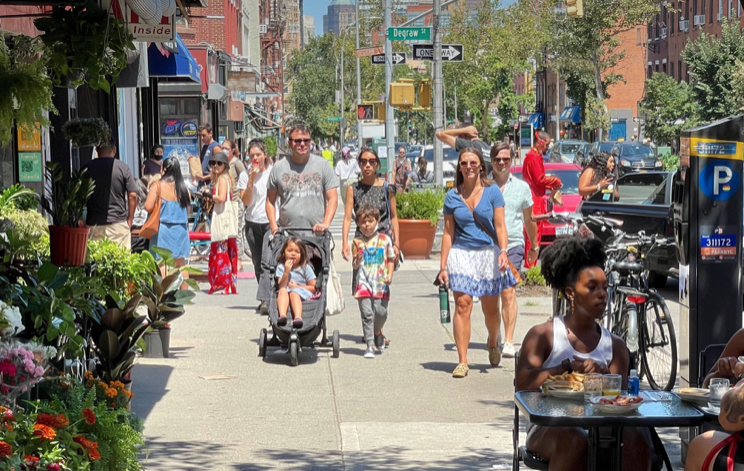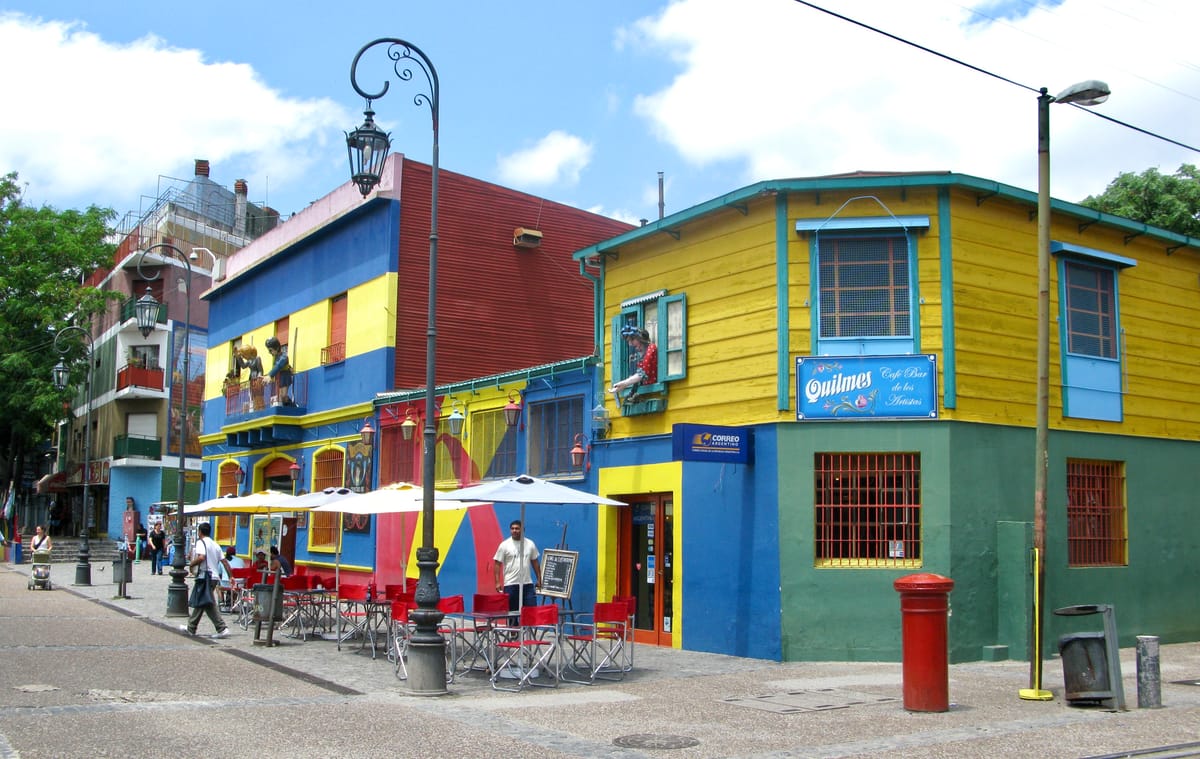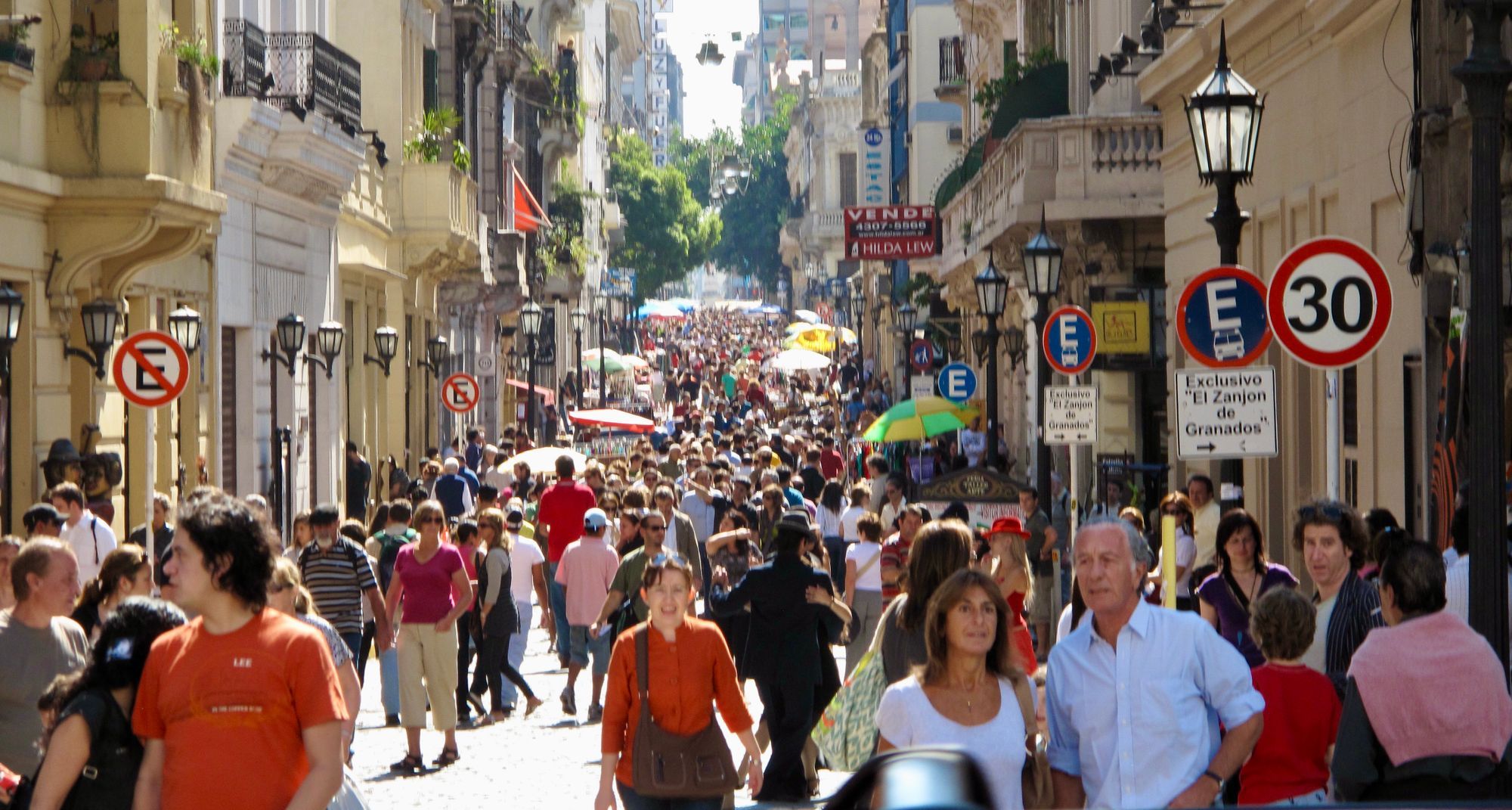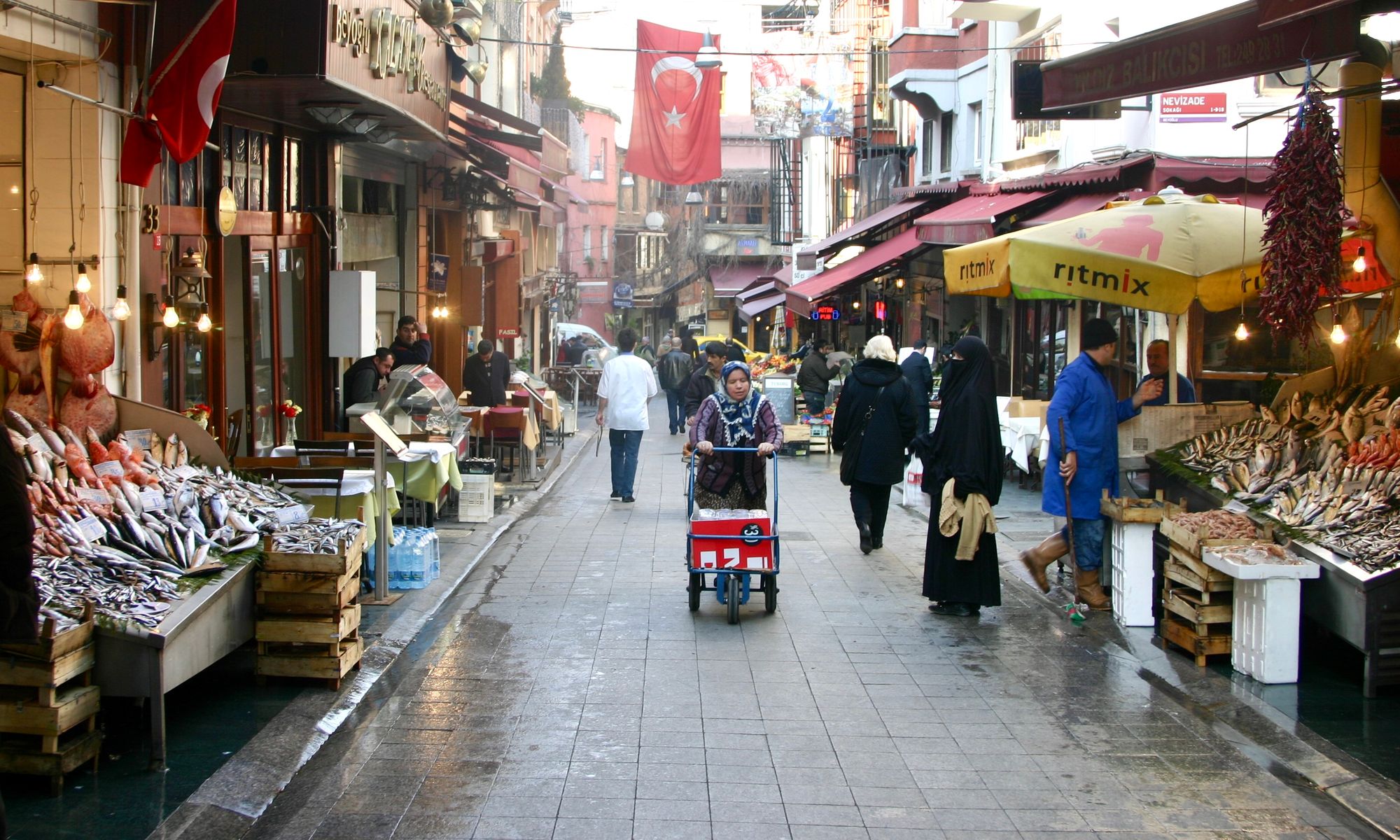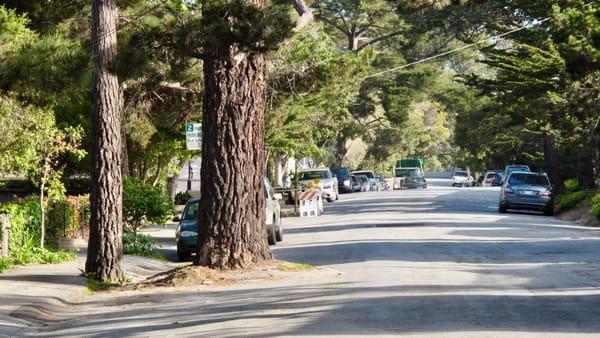Inspiration from Gdansk, Buenos Aires, Paris, Istanbul and San Diego's Prado in Balboa Park.
This article was originally posted in July of 2020. Much has changed since, as has our thinking about streets in general. To us, the power of sidewalks is becoming more clear and evident.
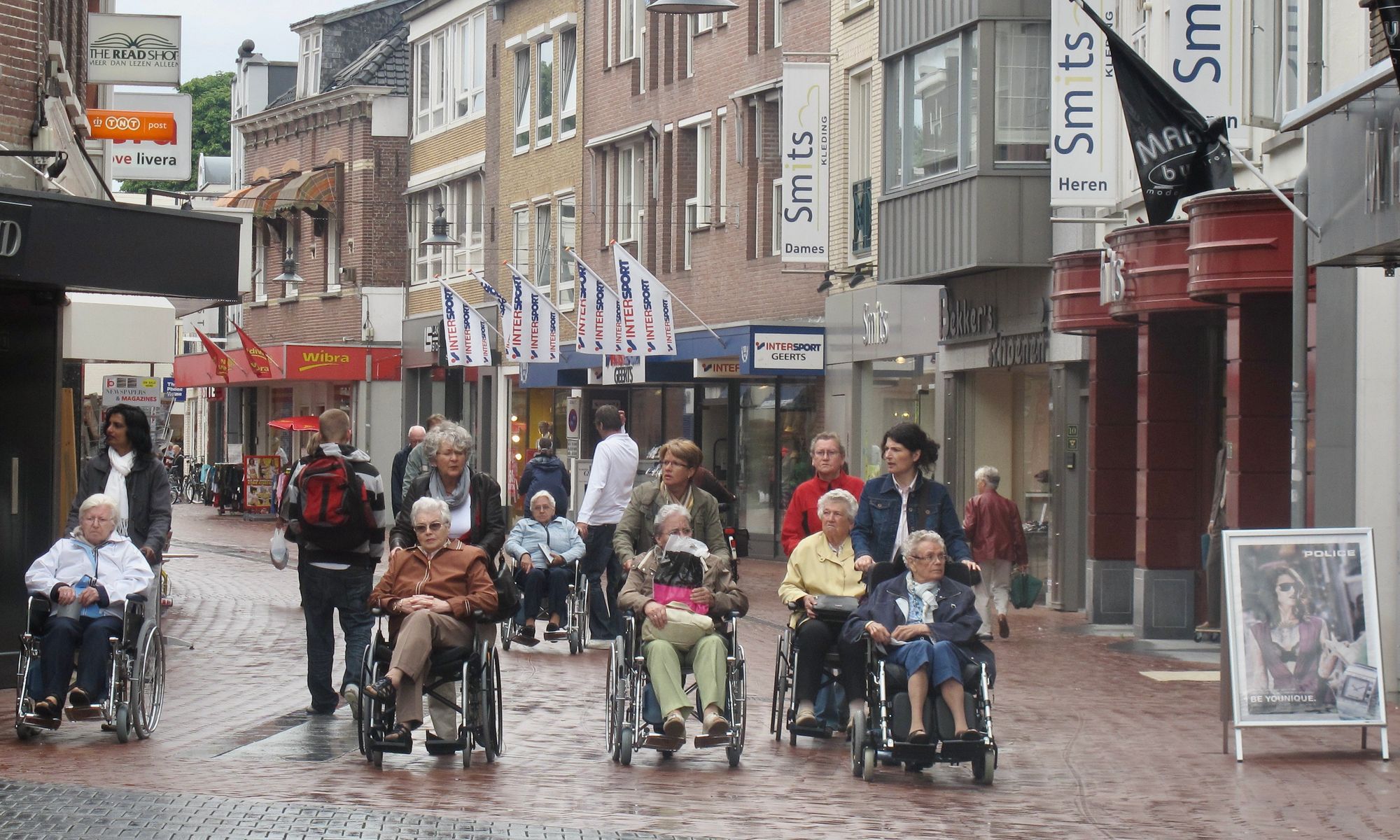
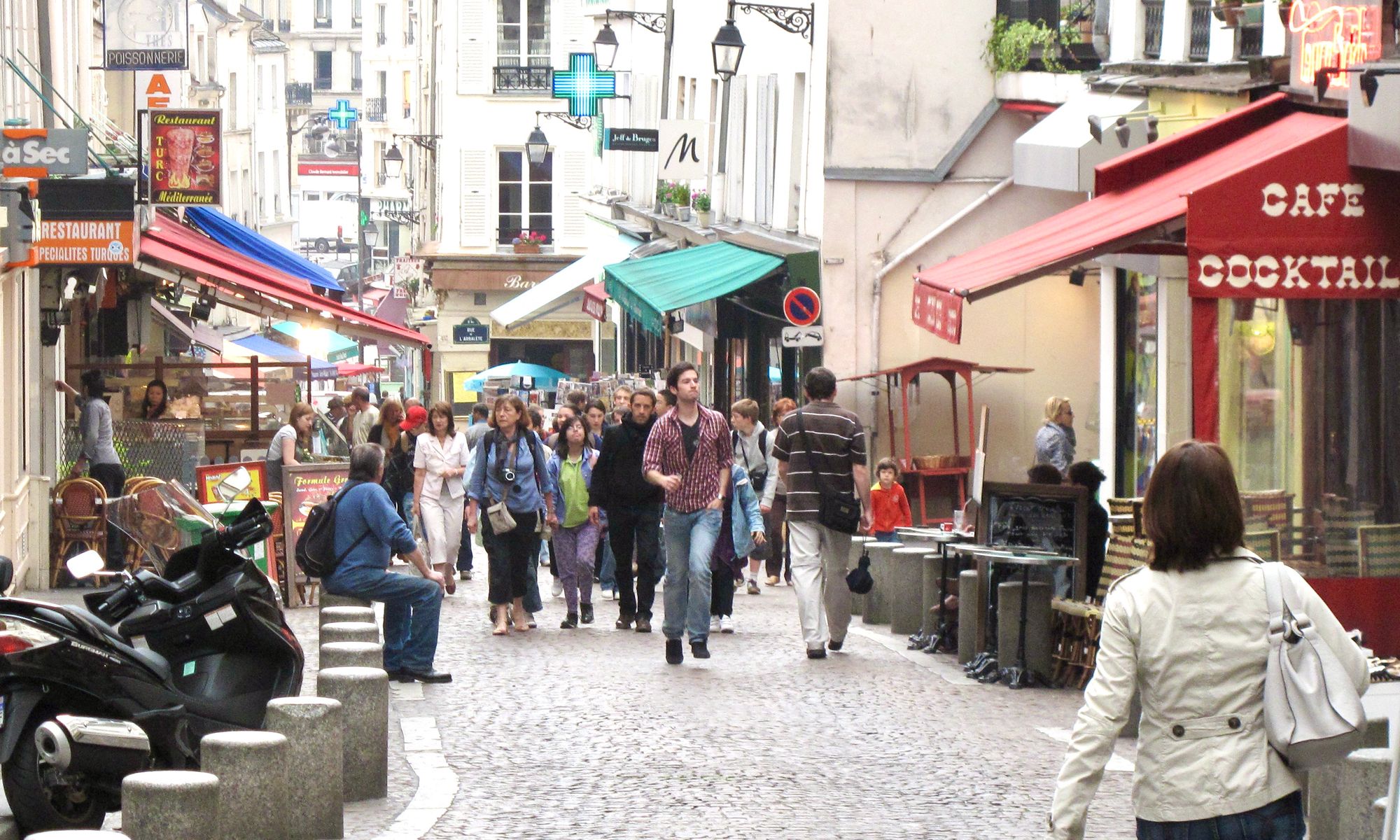
Rich street life is no frill. It is an expression of the most ancient function of a city—a place for people to come together, all kinds of people, face-to-face. — William "Holly" Whyte
You know a great street when you see one, even if you can't explain why. There's just something about it that lifts your spirits. And you notice other people feel the same way—their posture is more upright, their step bouncier, their eyes more alert, their faces relaxed.
The world's best streets feel like living rooms—a place primarily for people, not a conduit for cars. But great streets are not all alike—in fact, each has its own distinct identity shaped by the range of activities that draw people there. What they do share in common is one key quality—they allow people to easily connect on a number of levels: seeing and being seen, eye contact, a nod, a greeting, a conversation, a hug, an outright display of affection.
The promise of spontaneous encounters is what we want from streets, even if we think we're there just to run an errand or get a snack or take a walk. These tasks are usually excuses to be somewhere that makes us happy.
This photo gallery presents some of the finest streets in the world, focusing on Gdansk, Buenos Aires, Paris, Istanbul and The Prado in Balboa park, San Diego; all of which offer lessons we can apply to city streets in our own communities.
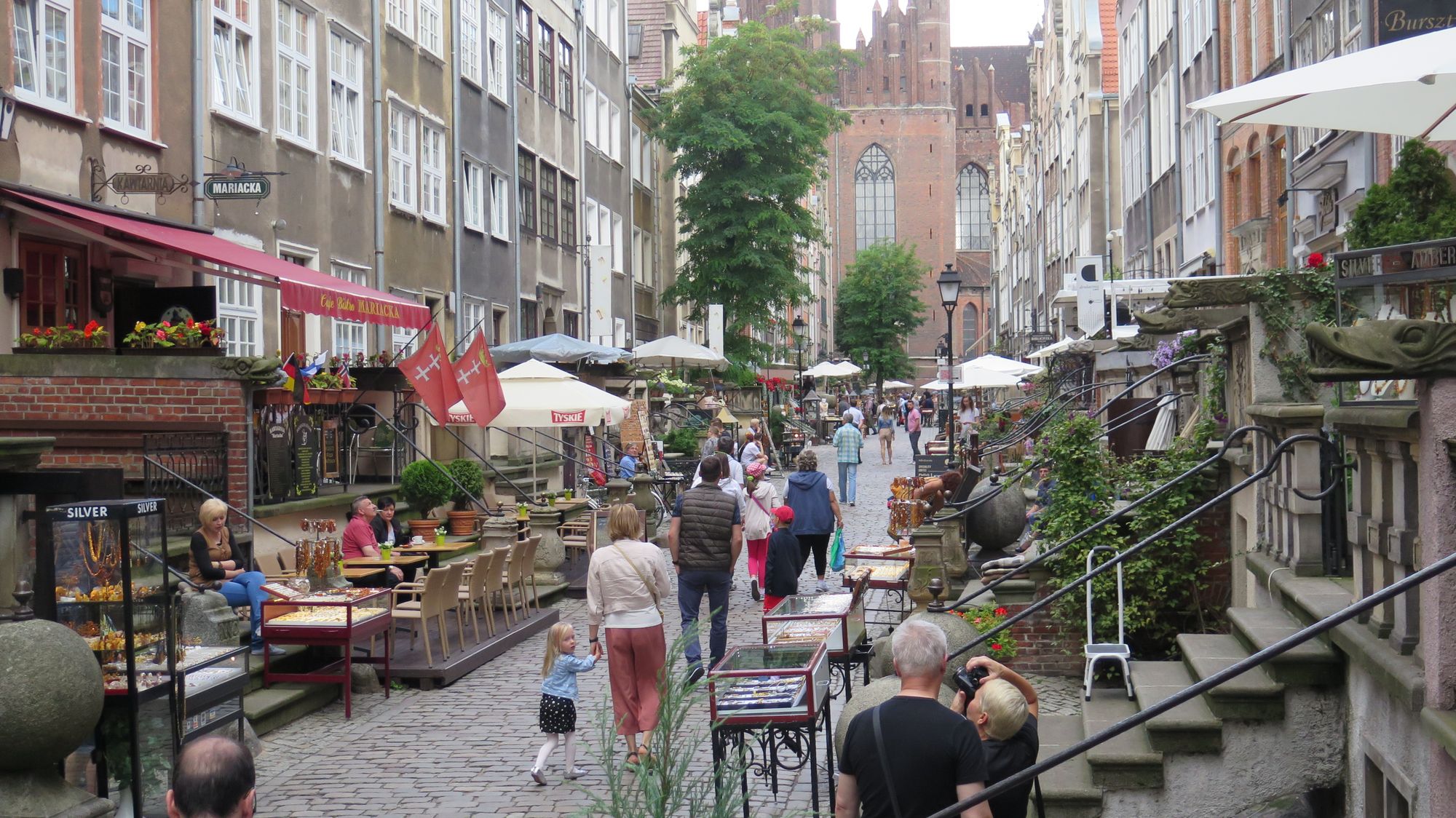
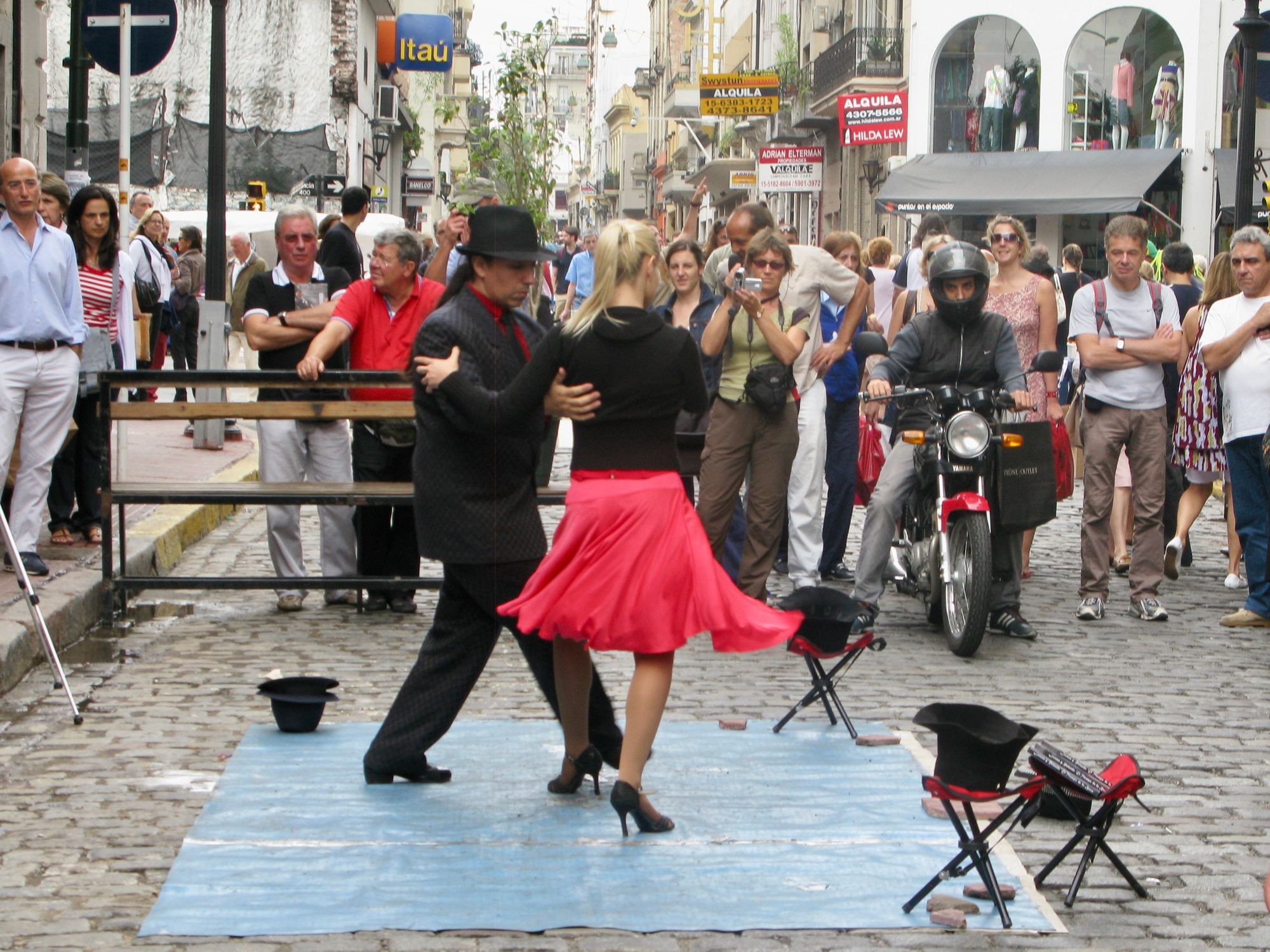
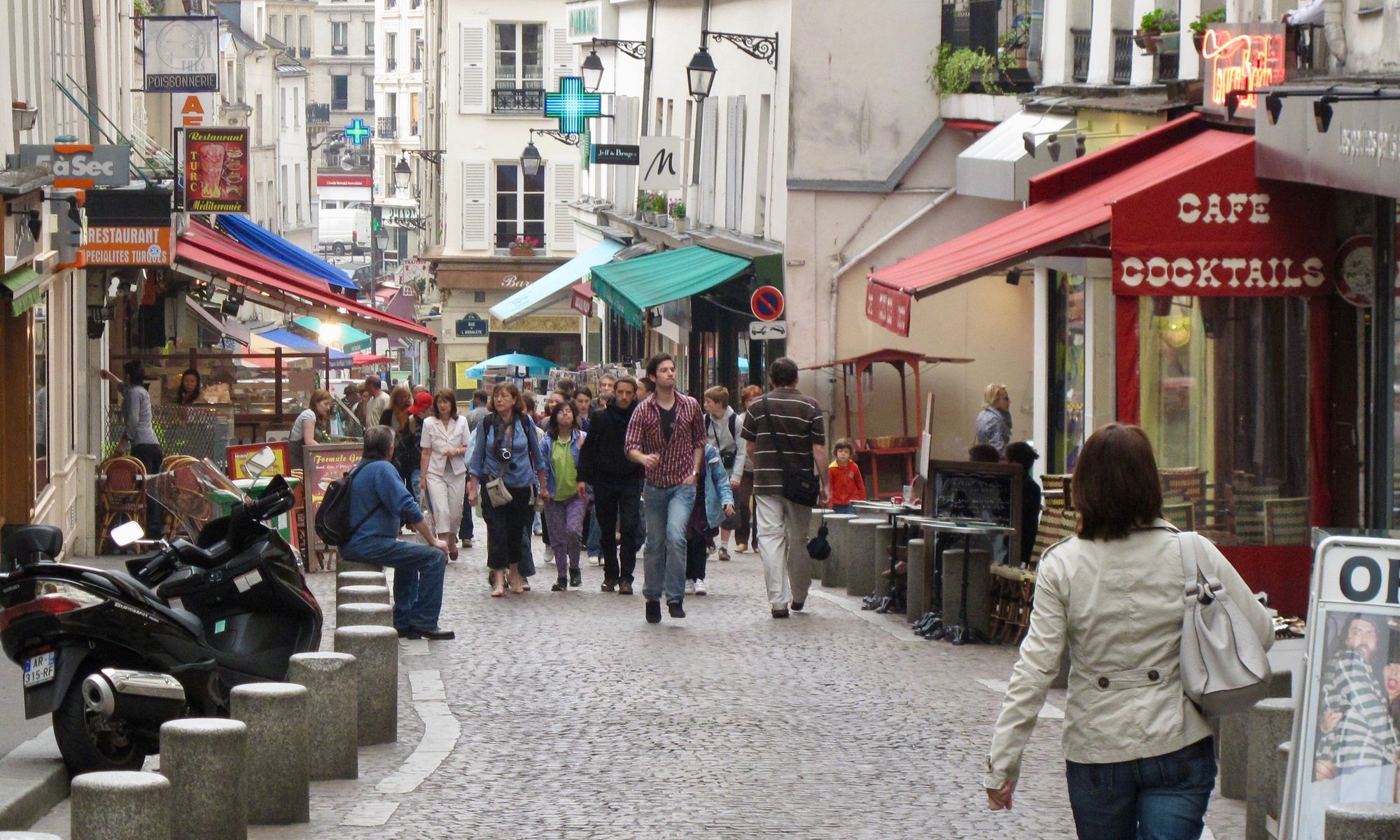
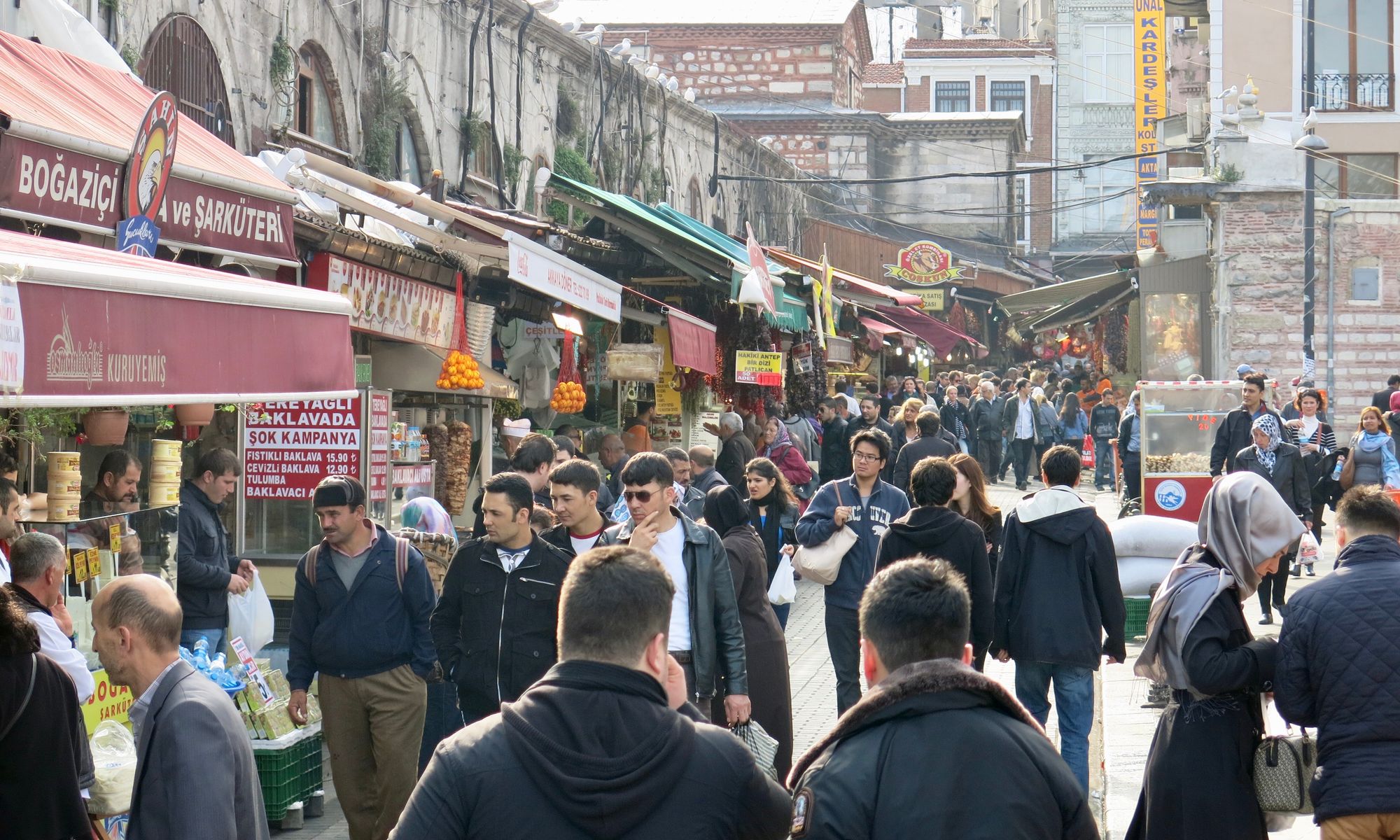
Gdansk's Highly Sociable Street
Ulica Mariacka is one of the world's best and most engaging streets. The raised terraces in front of the street's buildings were once front porches, when the buildings were the homes of merchants and goldsmiths. These terraces stimulate vital social interaction on three levels: the terrace, the street and the basement steps. It is a perfect setting for outdoor dining, retail displays, stages for musicians to perform and a spot to watch people strolling past.
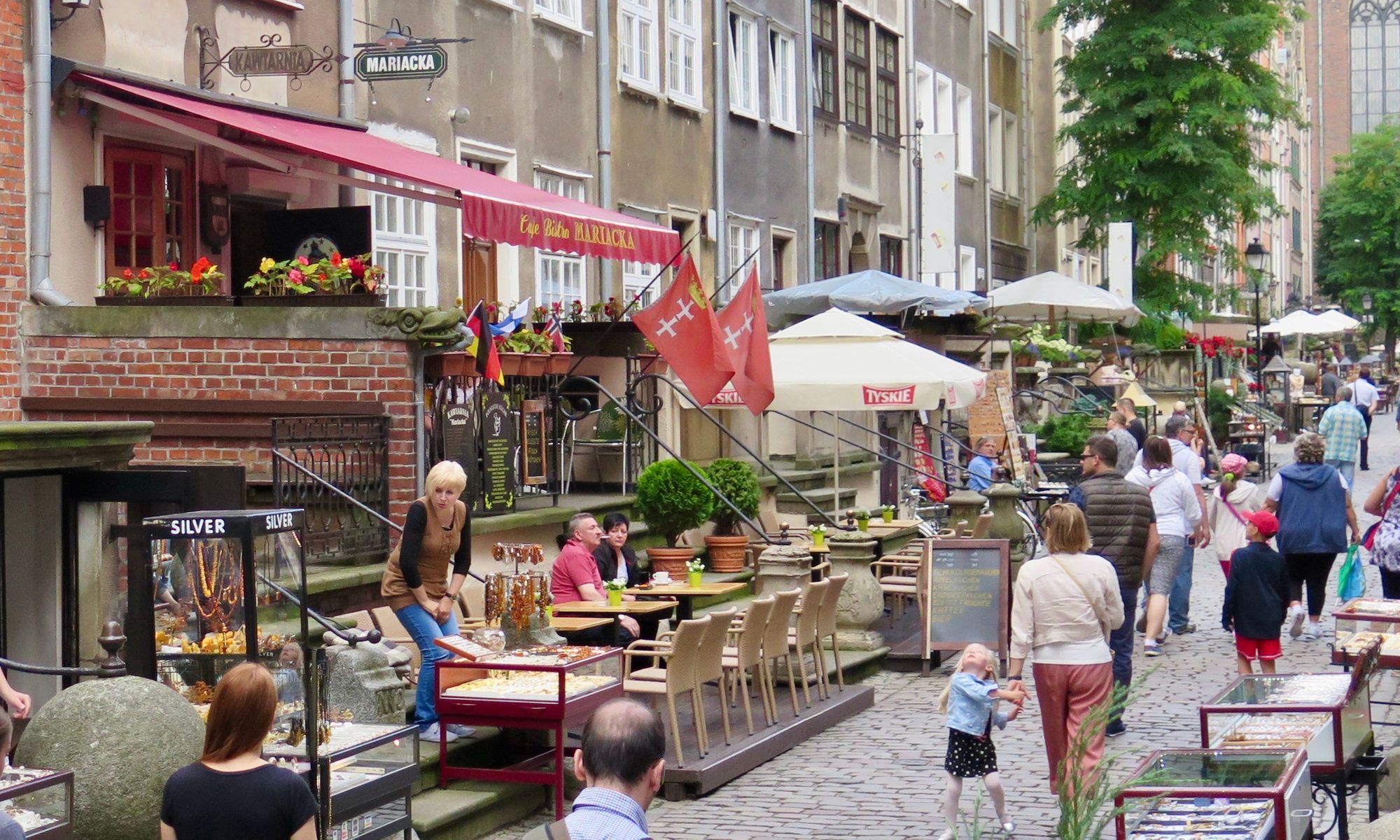
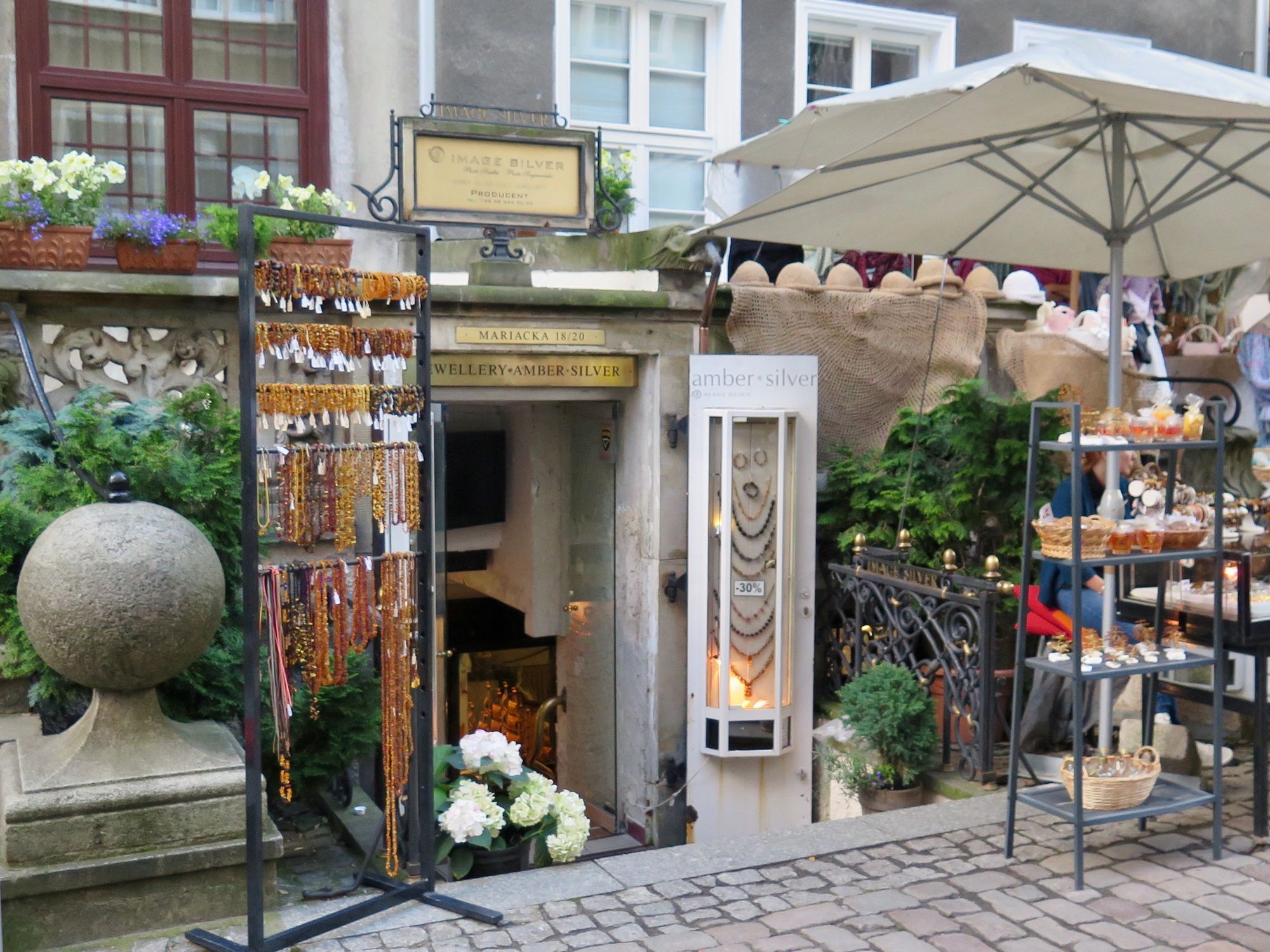

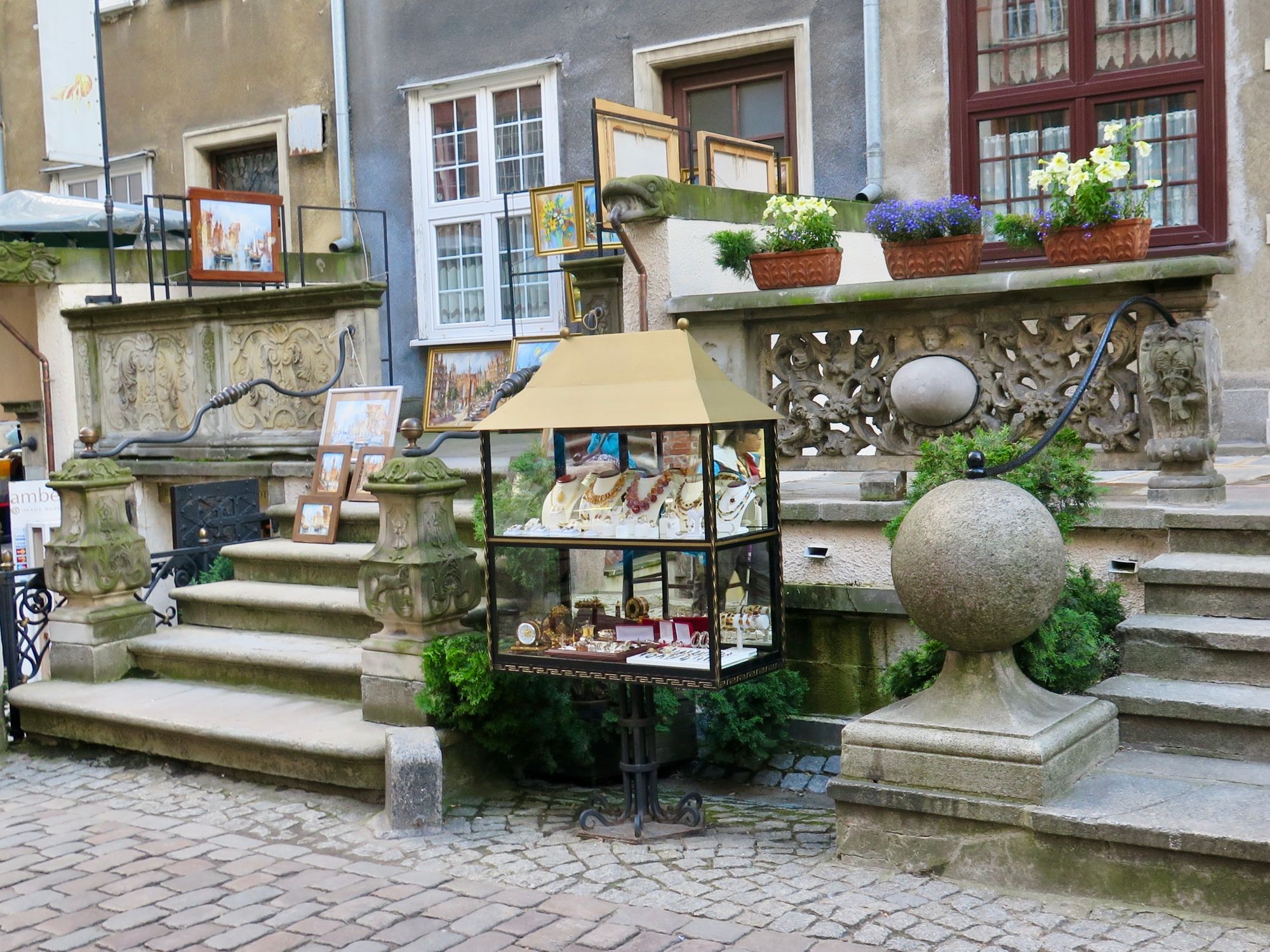
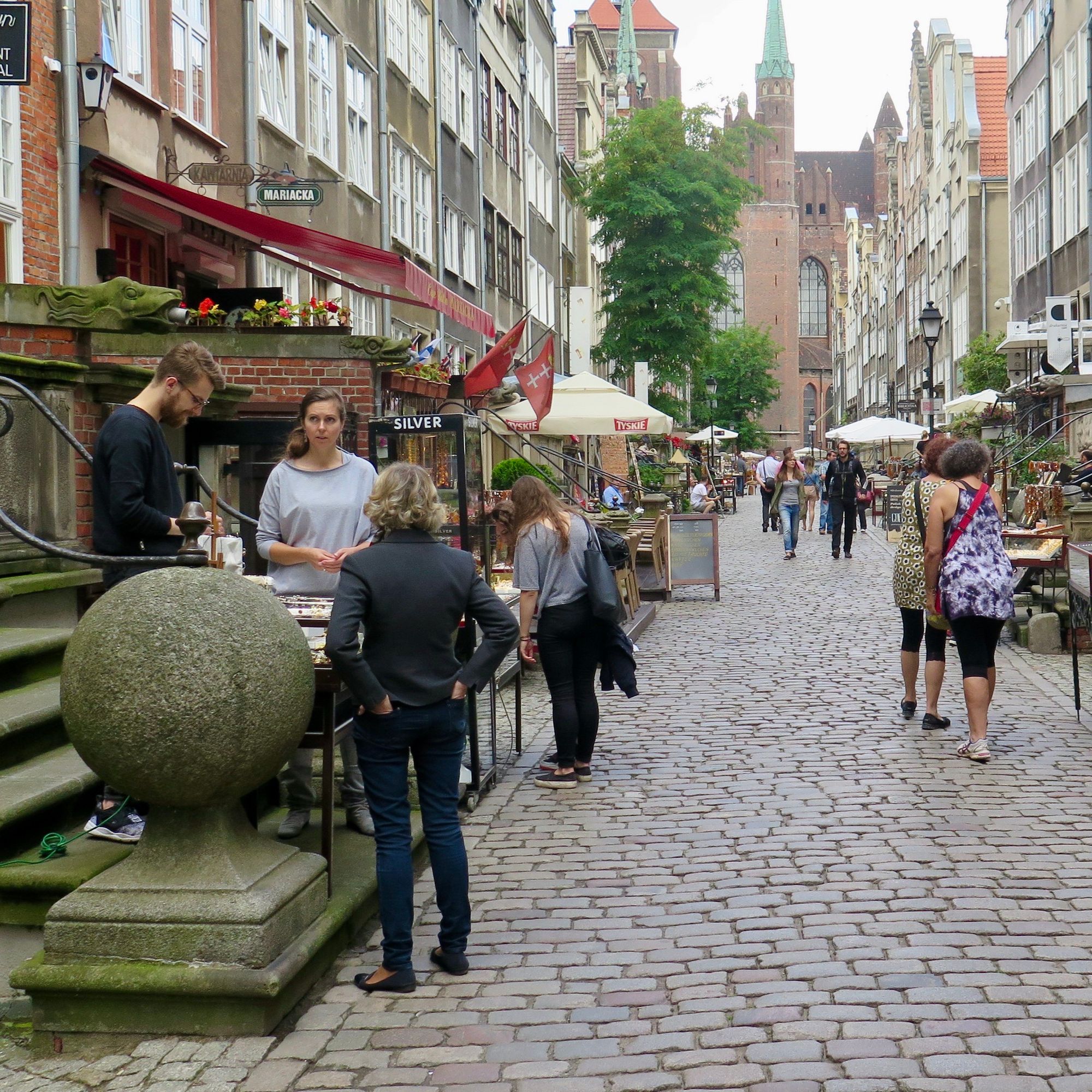
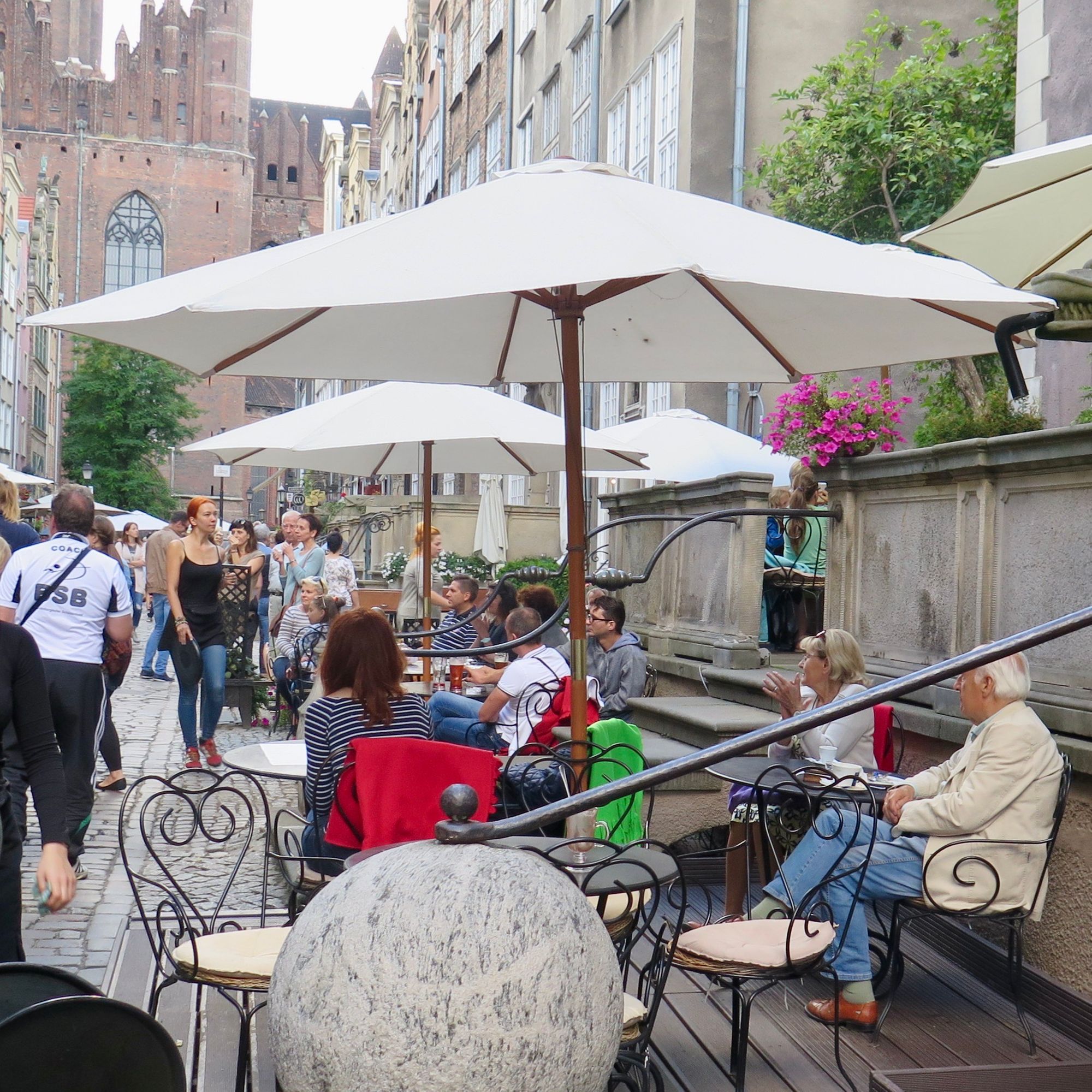
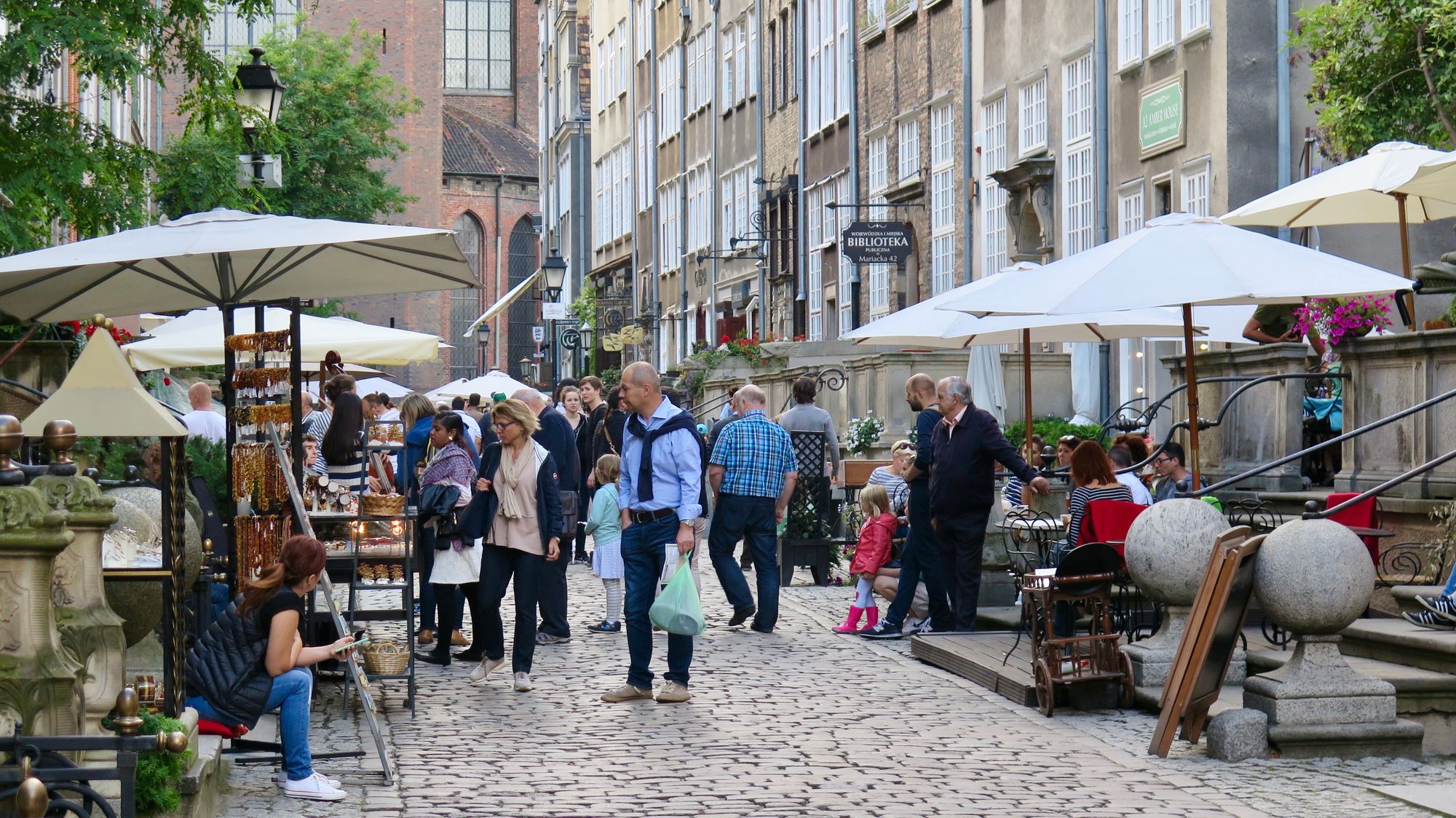
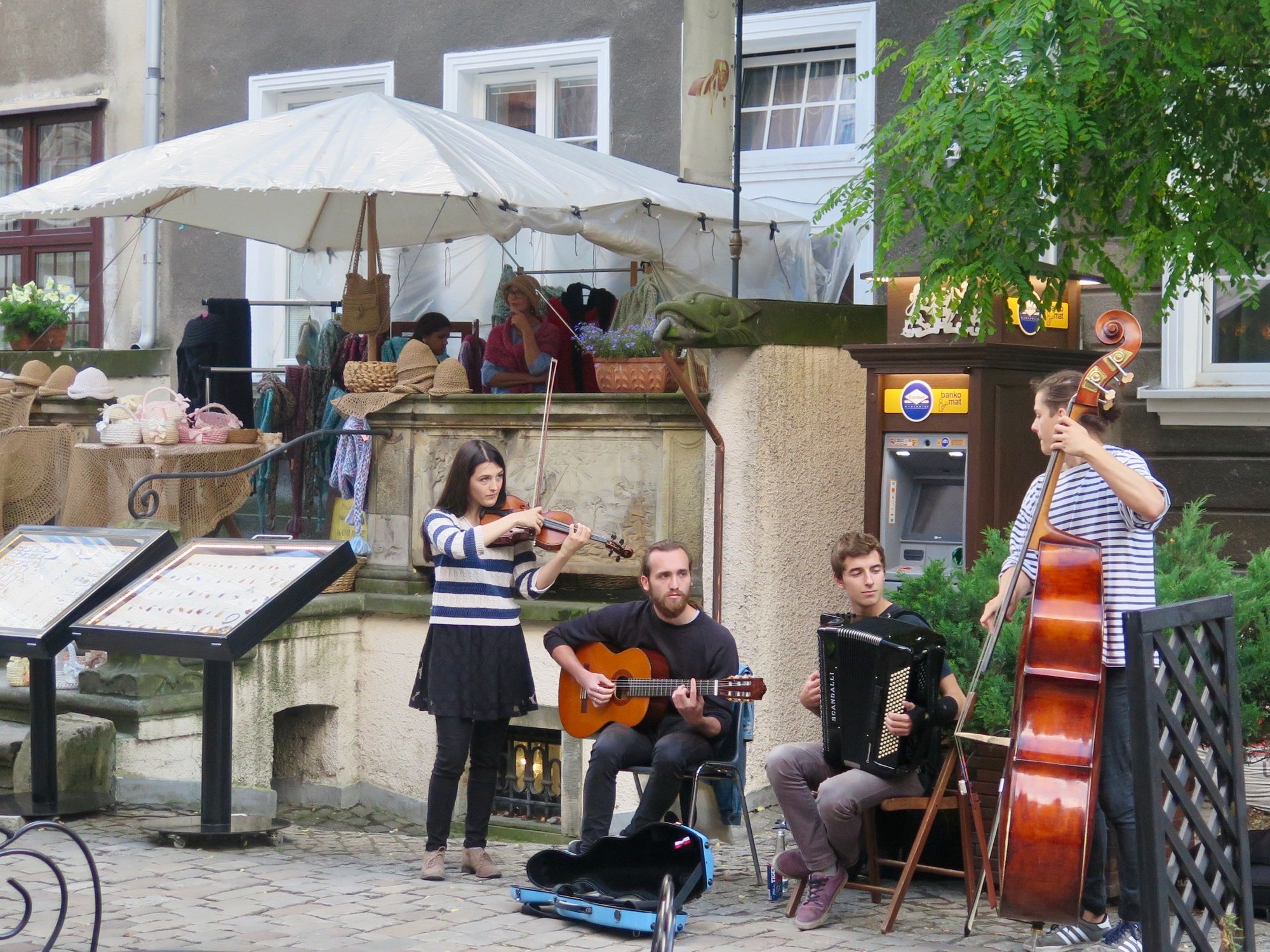
Buenos Aires's Bustling Heart
Calle La Defensa is a memorable street any day—but especially Sundays, when crowds gather to walk, shop, dance, eat and have fun interacting with the street performers. Toward the south end of the street is Plaza Dorrego, with a market that includes antiques and locally made souvenirs.
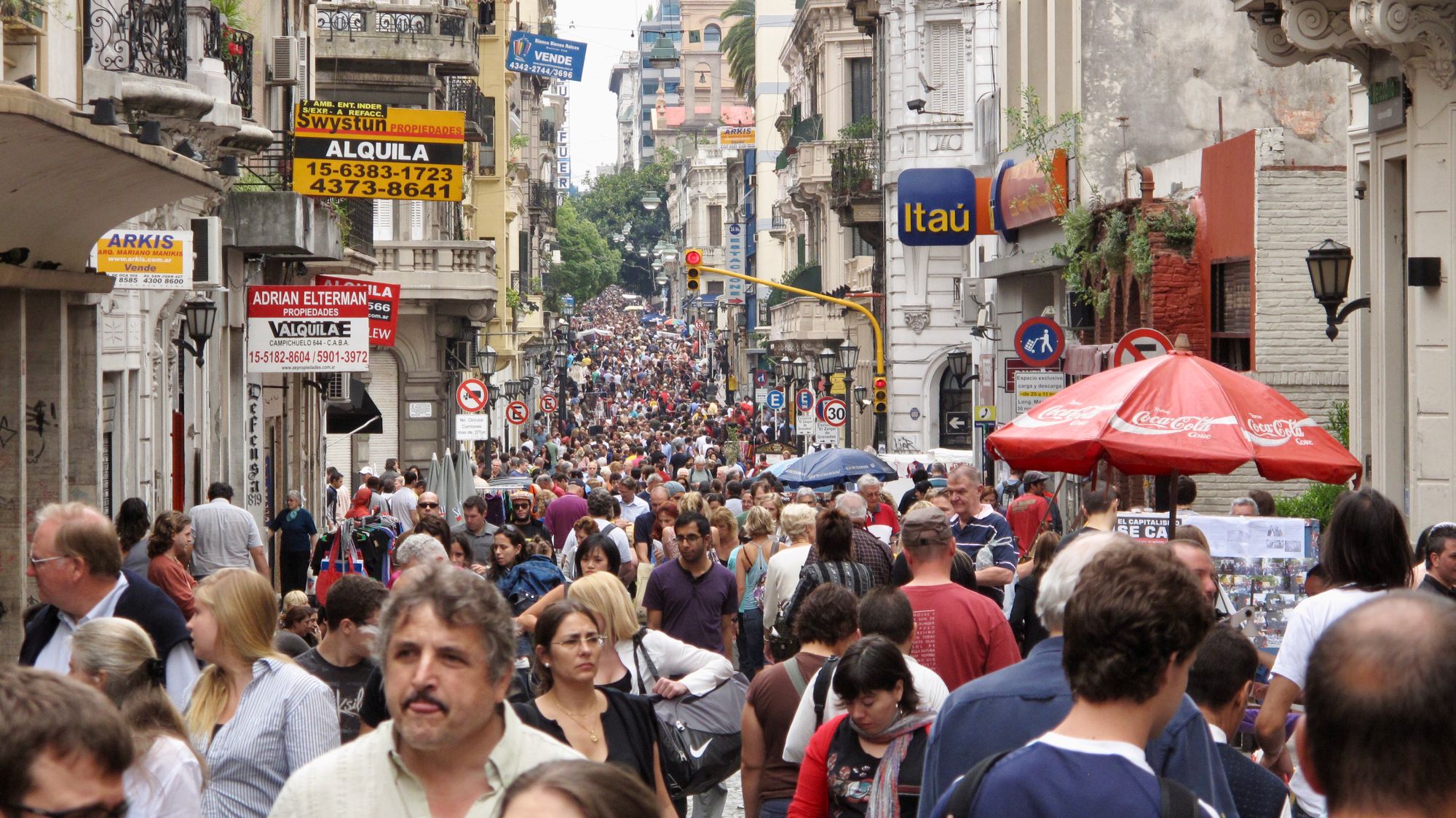
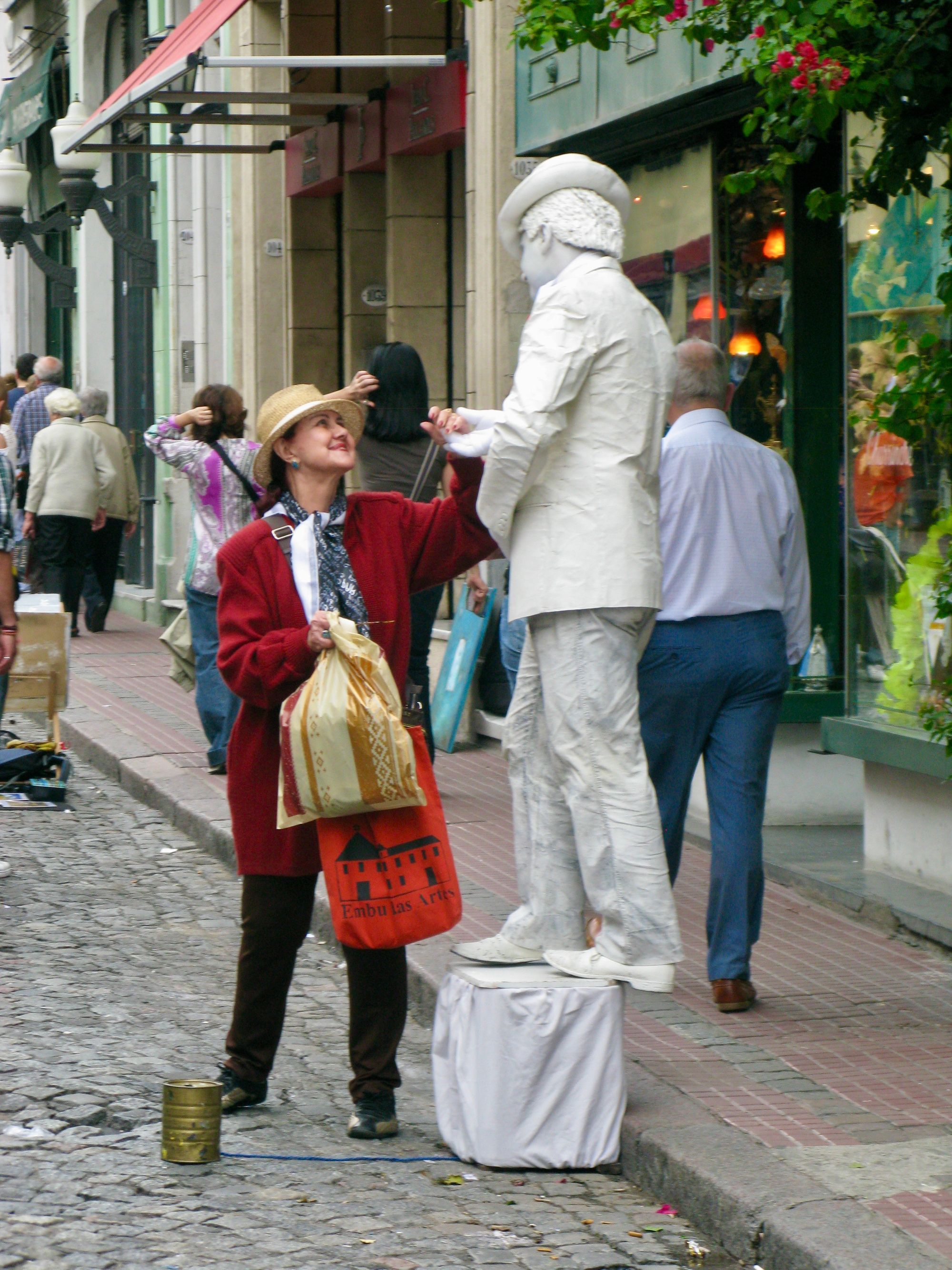
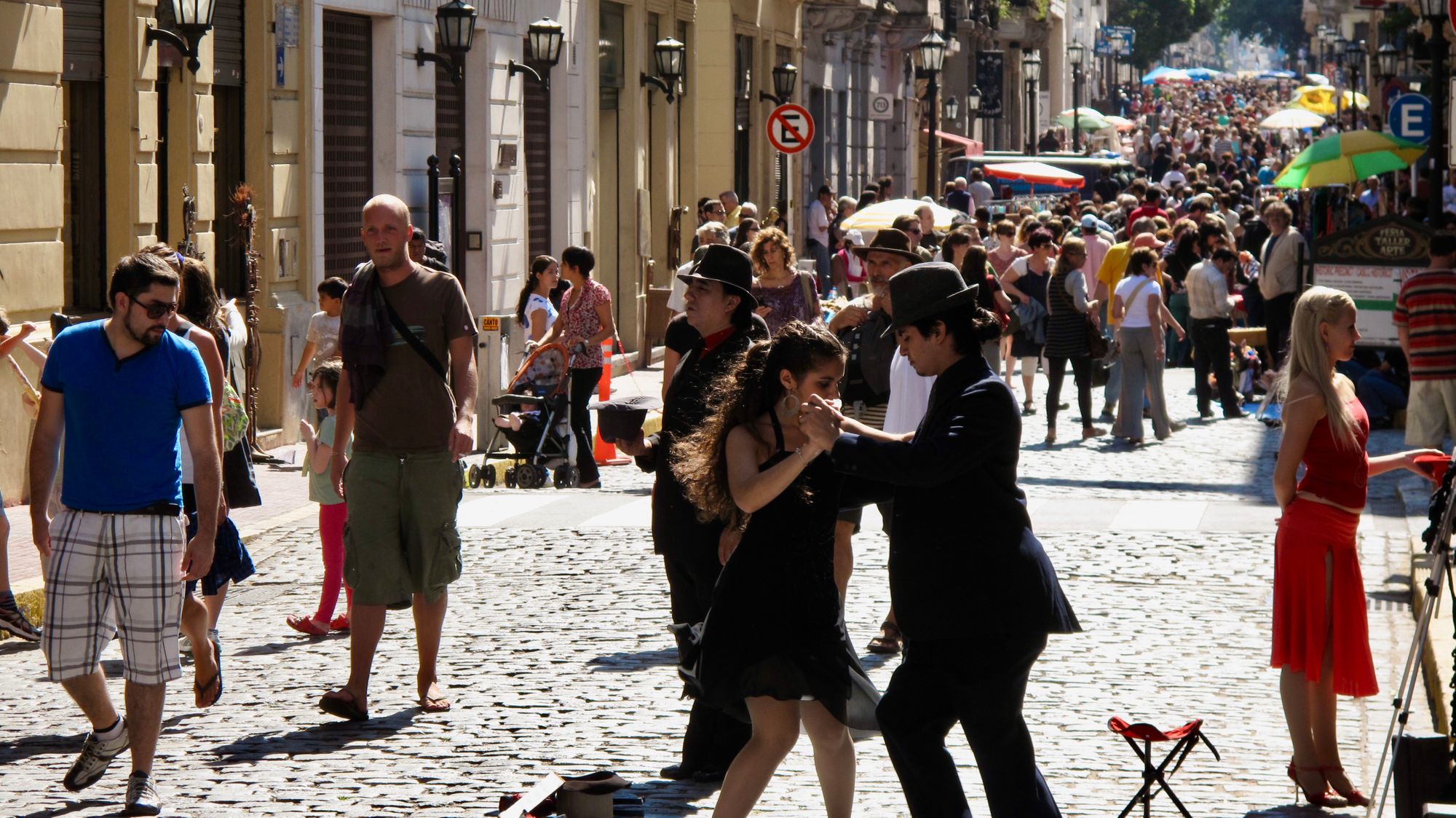
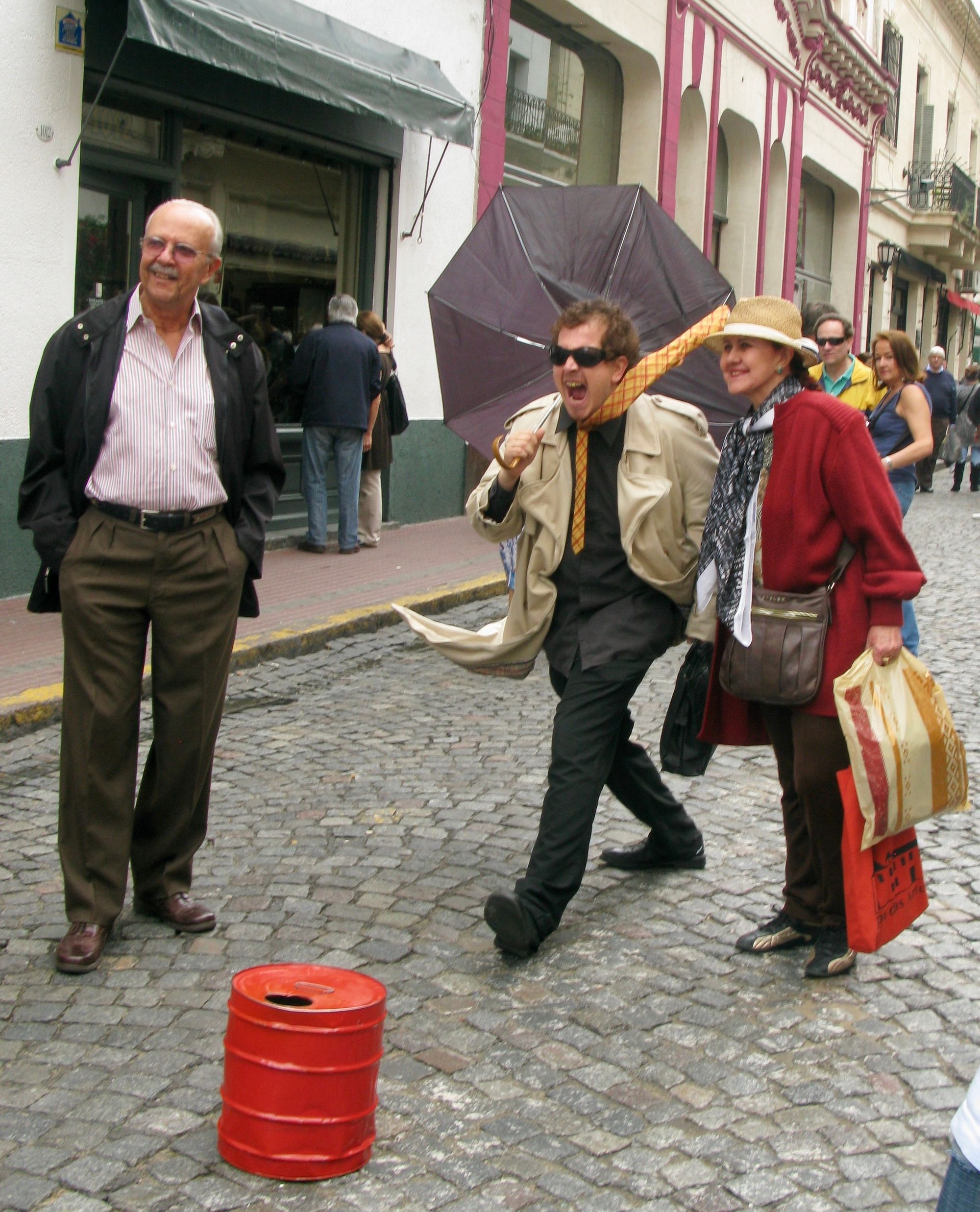
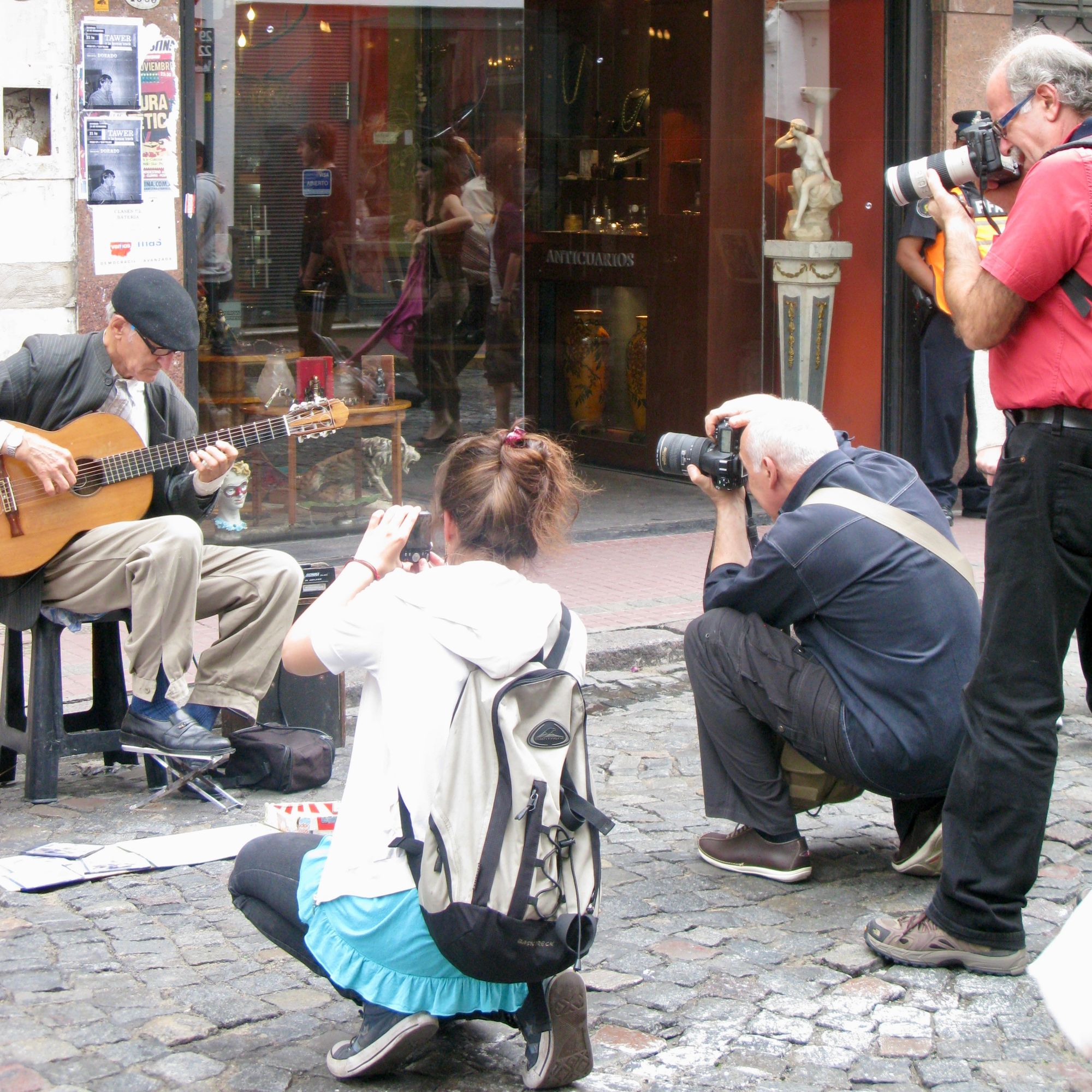
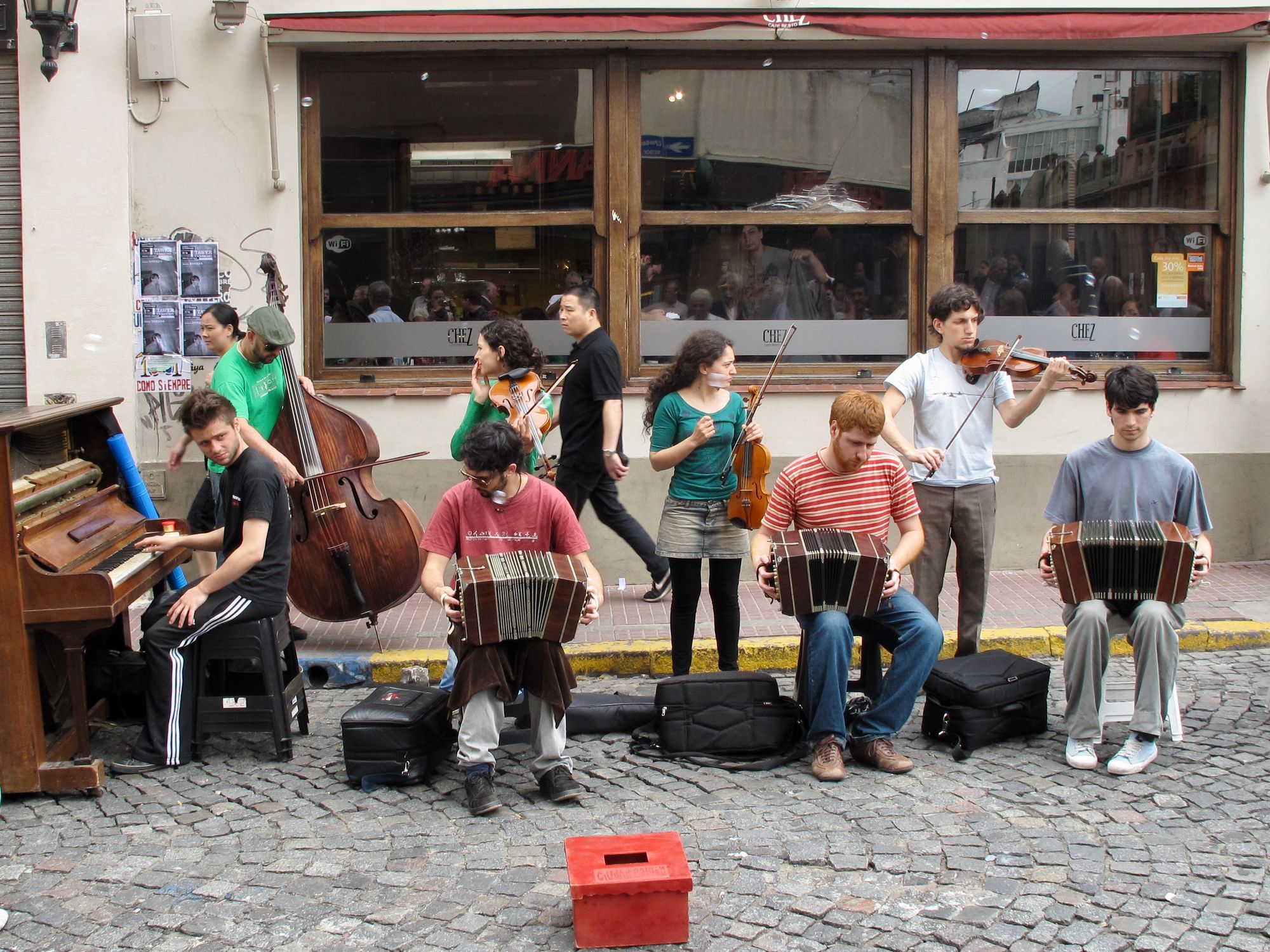
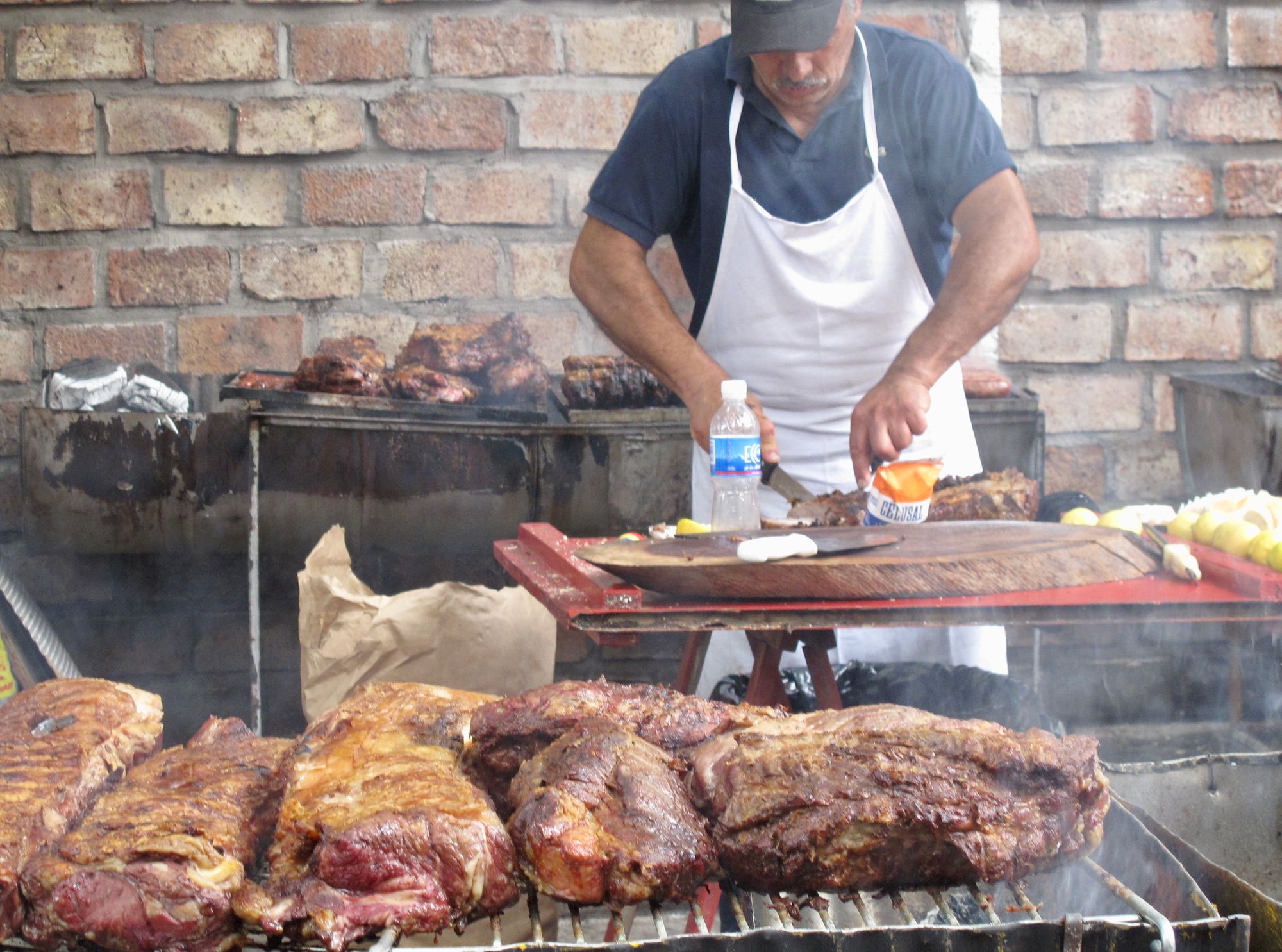
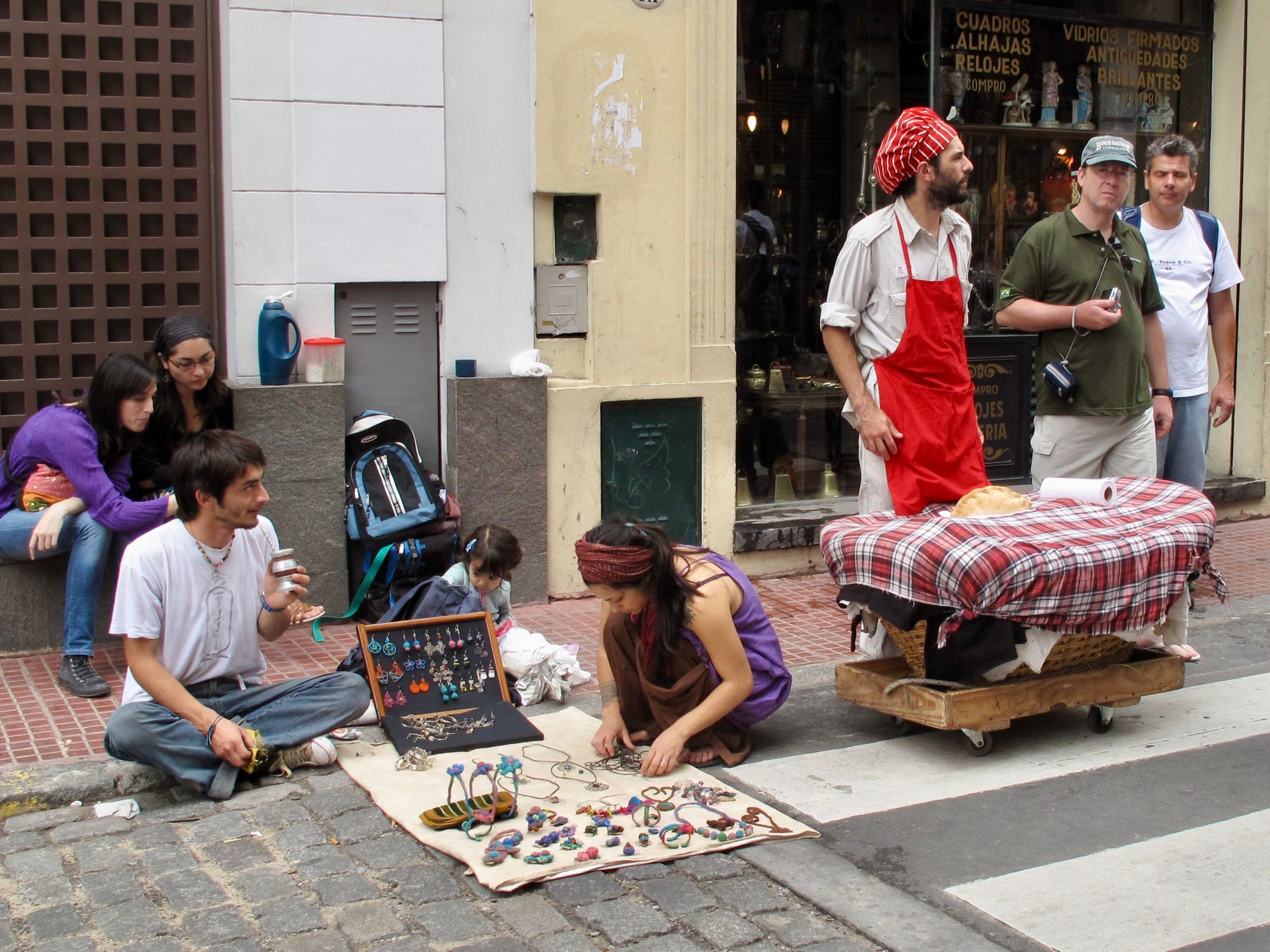
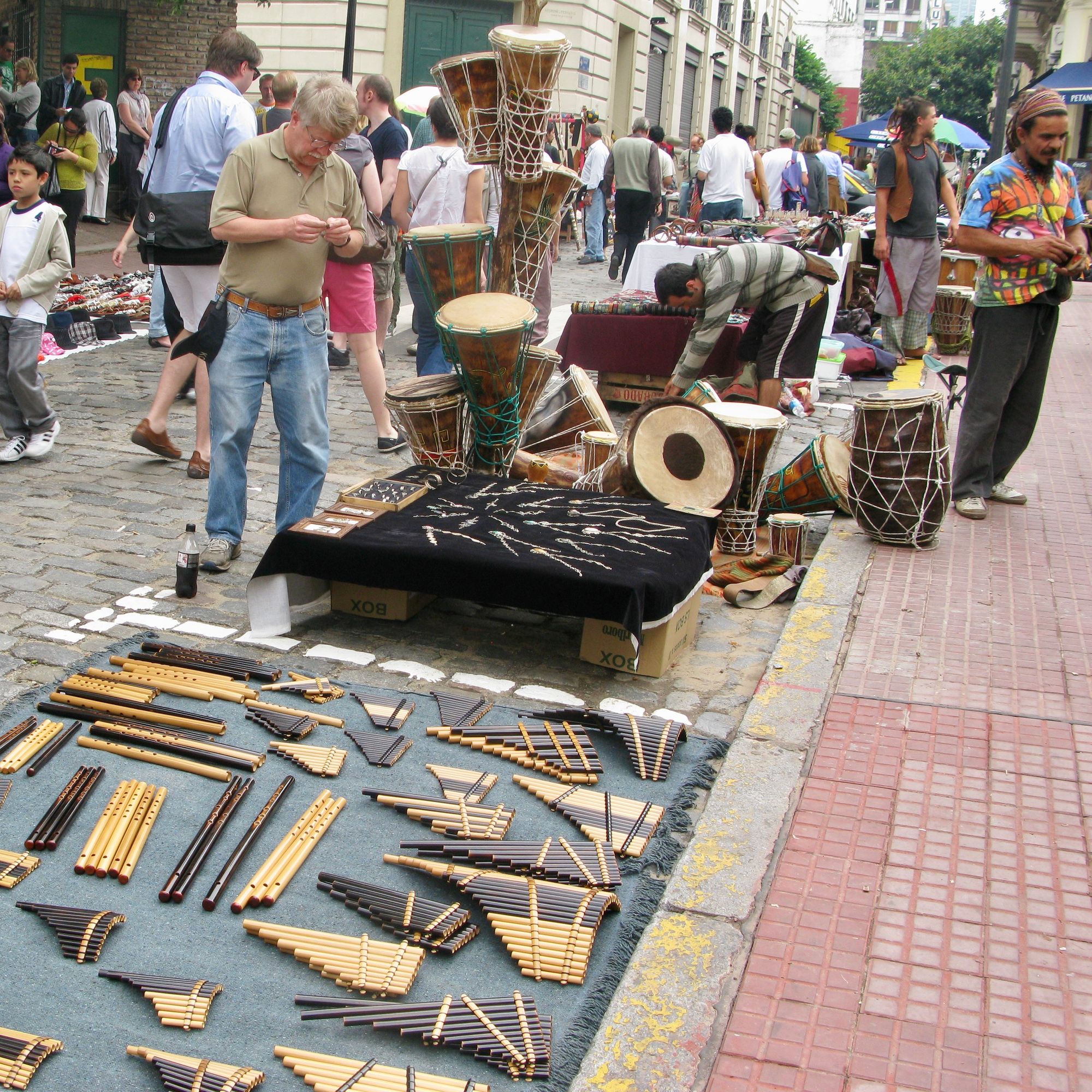
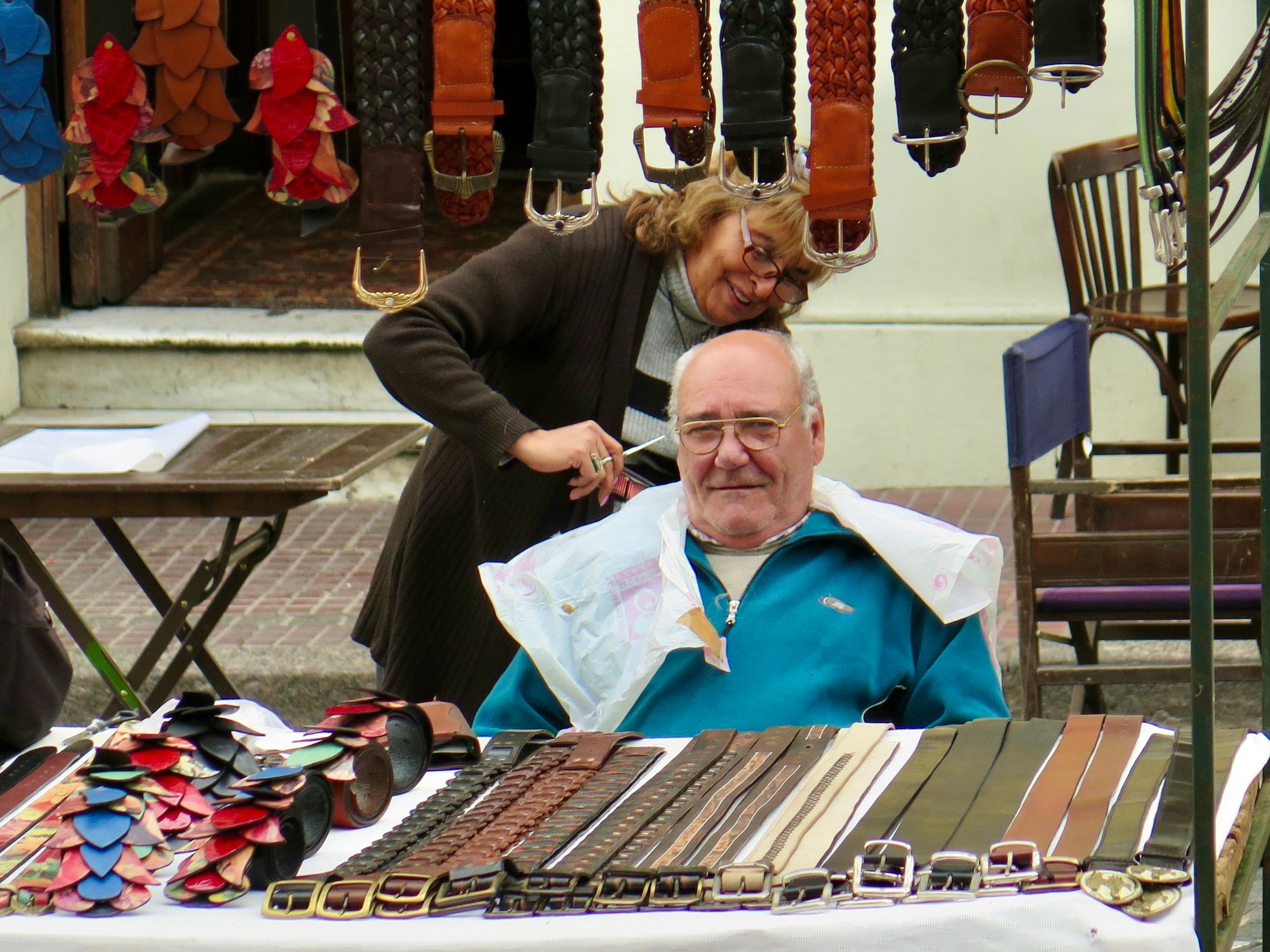
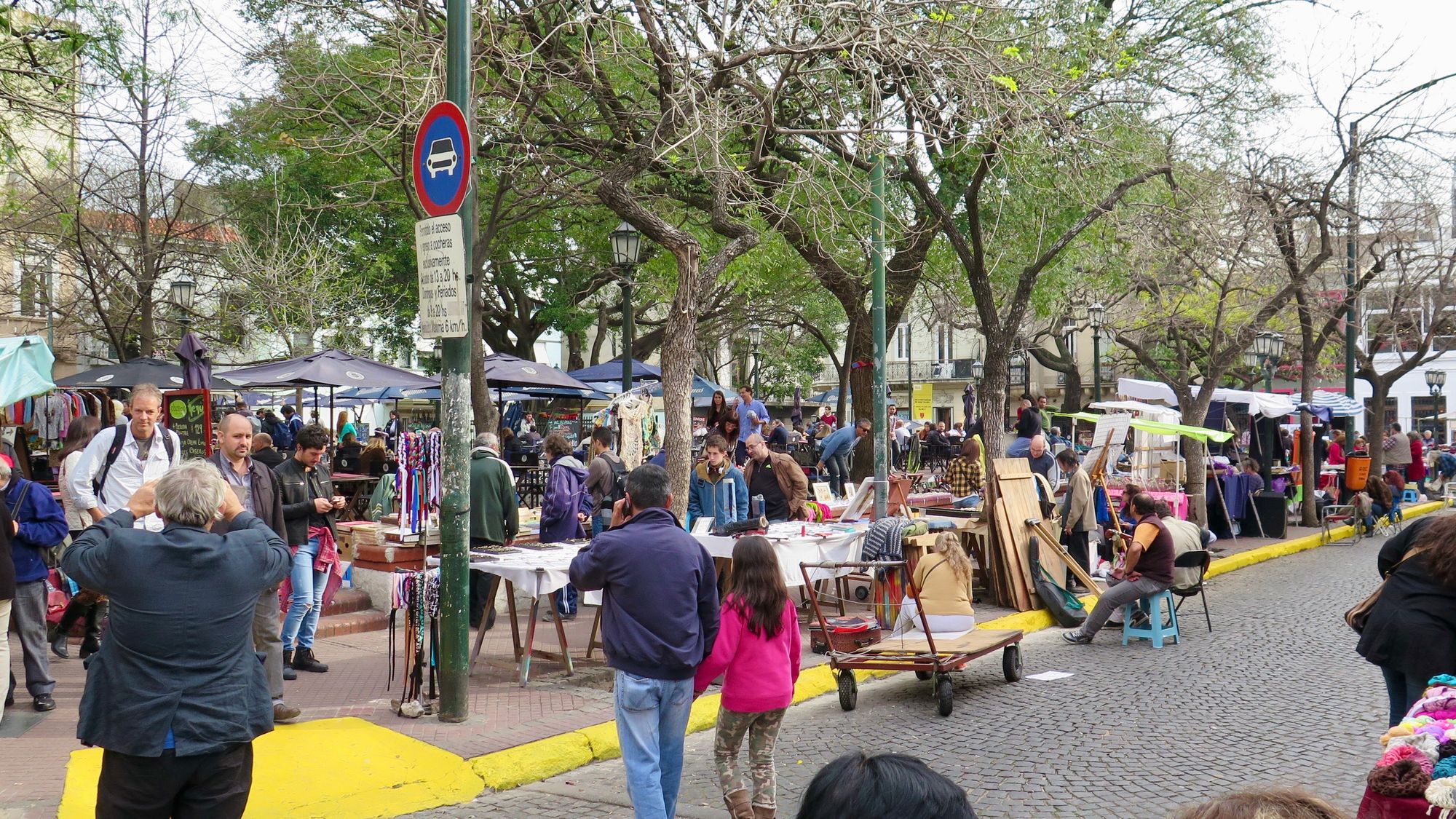
In Buenos Aires's Palermo Neighborhood, Intersections Become Public Squares
This intersection in Buenos Aires' Palermo neighborhood holds several lessons for making sure streets serve people on foot, not just motor vehicles. The most important insight to take away from this example is the value of expanding the sidewalk to stimulate more life on the corner, which also encourages motorists to drive more safely. This extra space allows impromptu socializing and sidewalk cafes to flourish.
The absence of stoplights and signs at intersections also helps slow down the traffic (as the Dutch traffic engineer Hans Monderman recommended). Drivers must come to a stop, taking in all the activity on the street, before pulling into the intersection. Entrances to corner buildings are canted at an angle, opening on to both streets at the same time, which adds to the town square feel of corners.
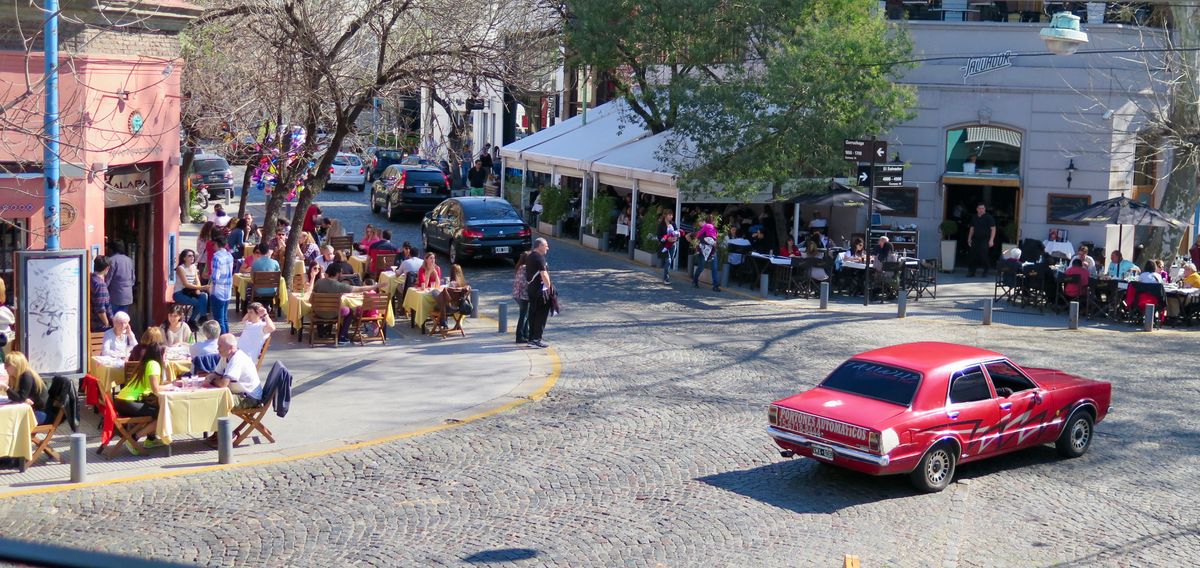
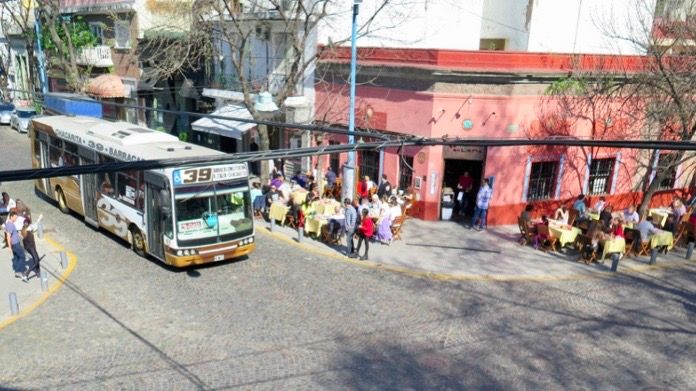
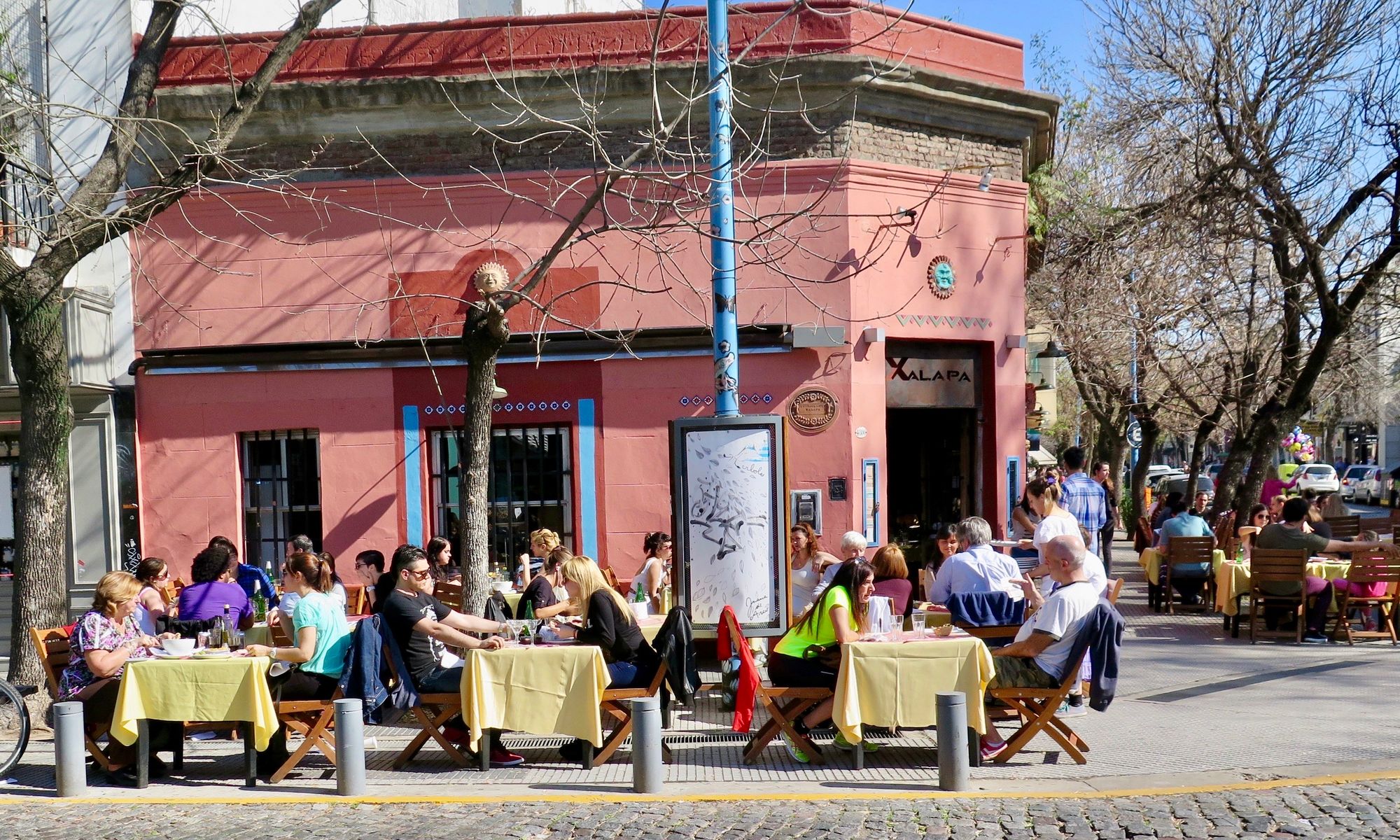
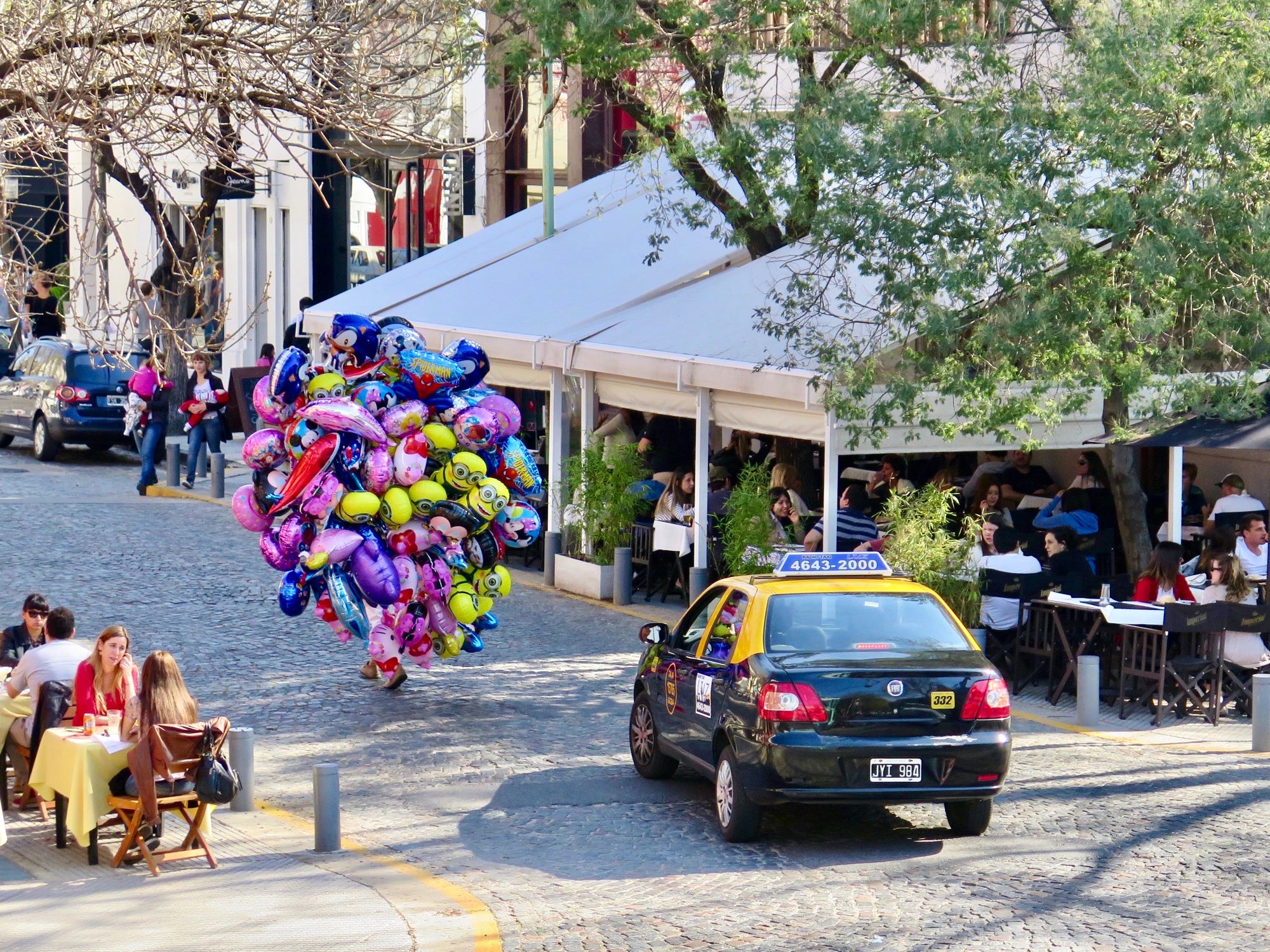
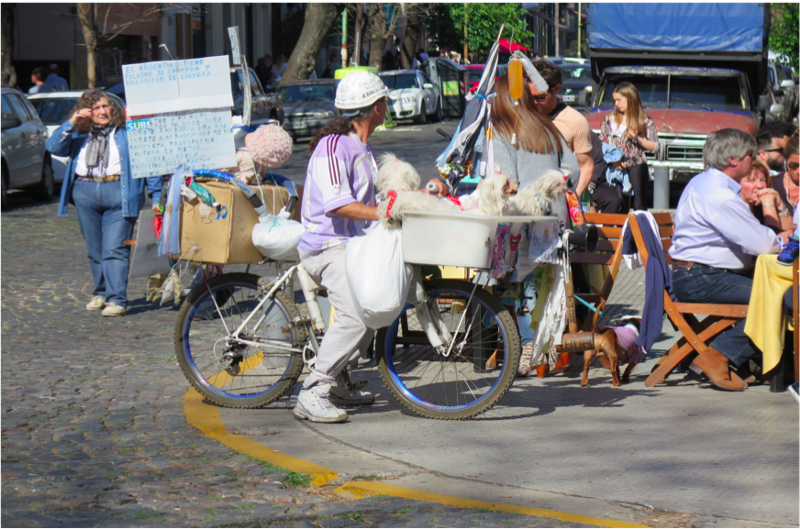
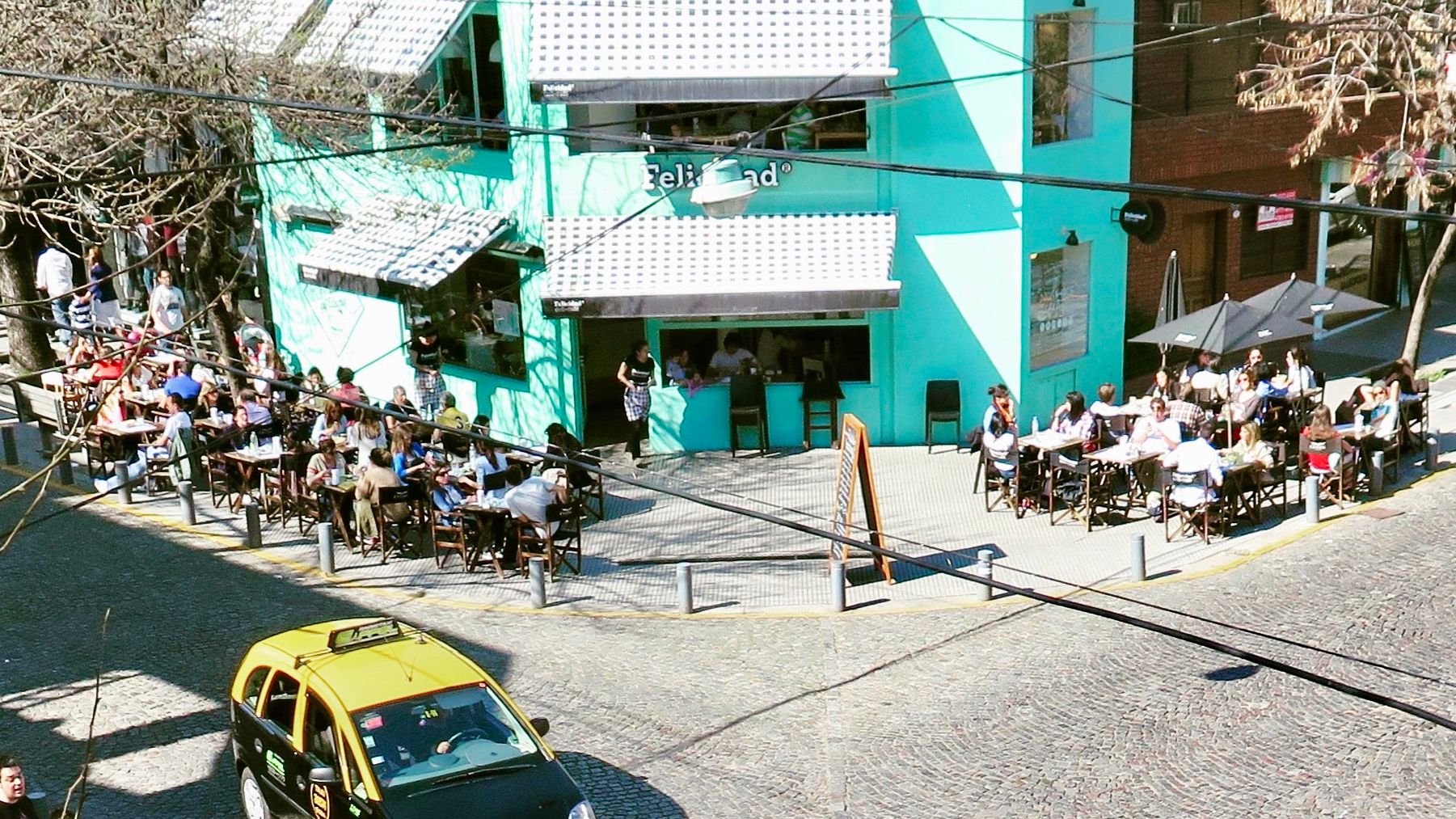
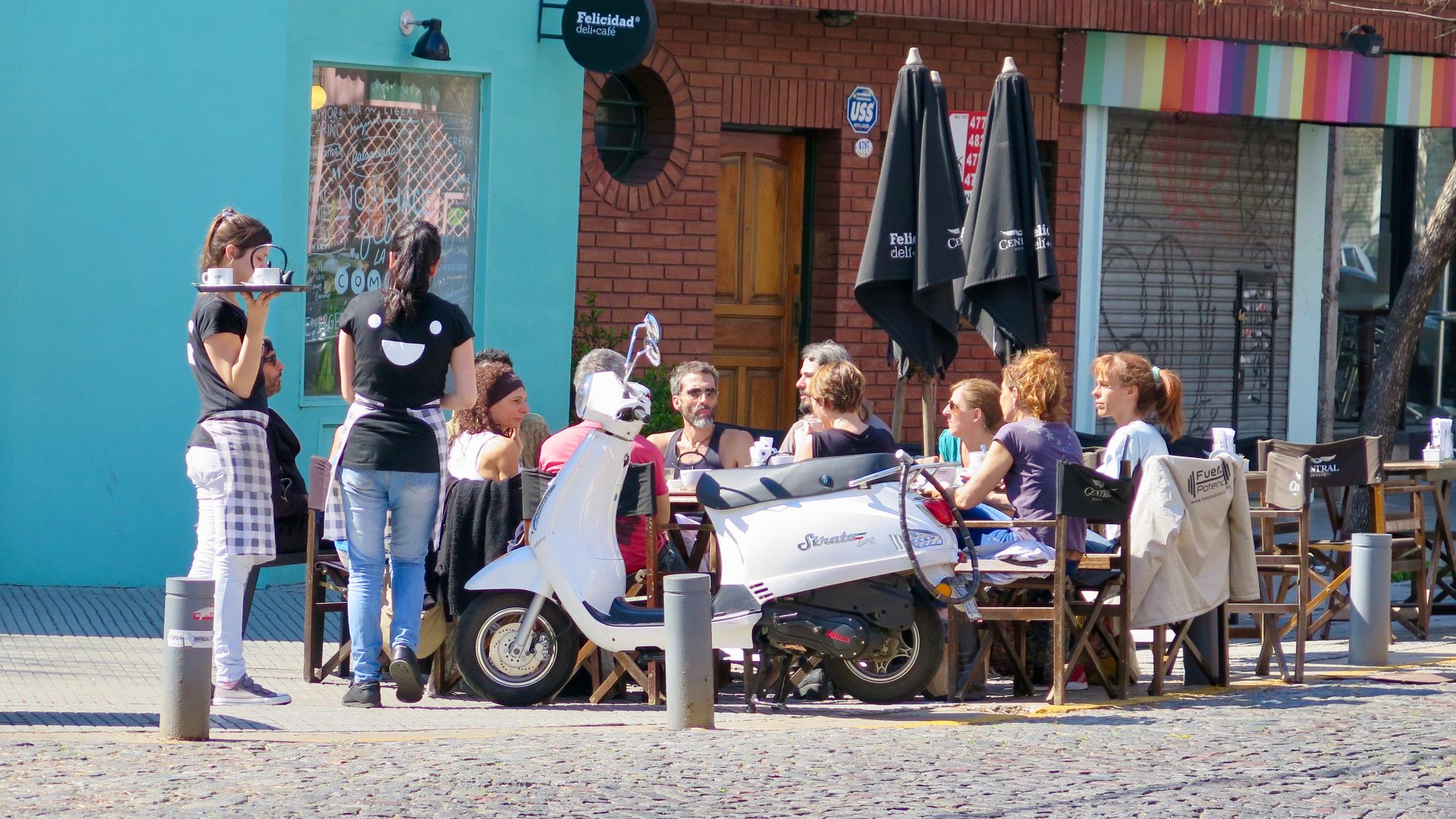
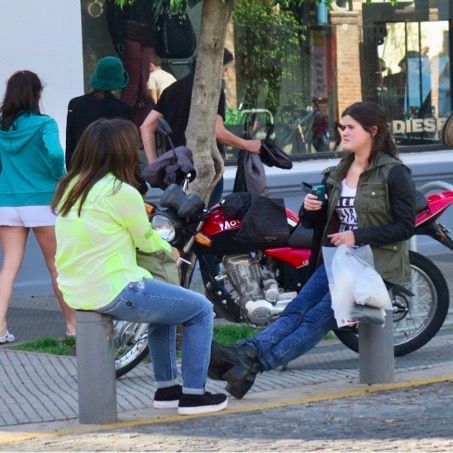
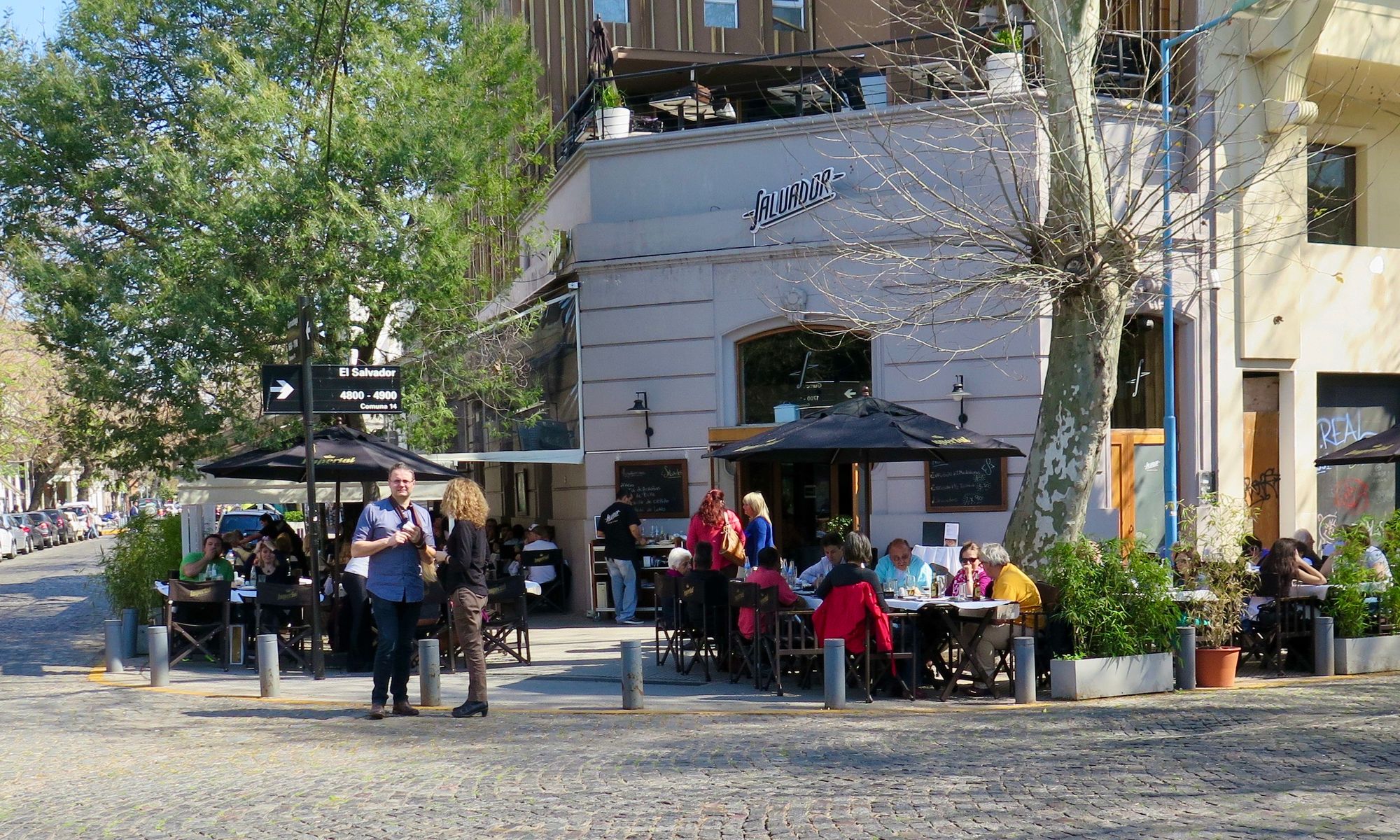
Street corners in Buenos Aires' popular Palermo neighborhood foster a lively social life
Paris: Three Streets That Show the Wonder of Their Neighborhoods
Most Parisienne neighborhoods feature streets that function as both main streets and neighborhood squares. We highlight three of the most compelling: Rue de Buci, Rue Mouffetard and Rue Montorgueil, each of which illustrates the qualities that make a good street in any community.
For more on Paris' streets:
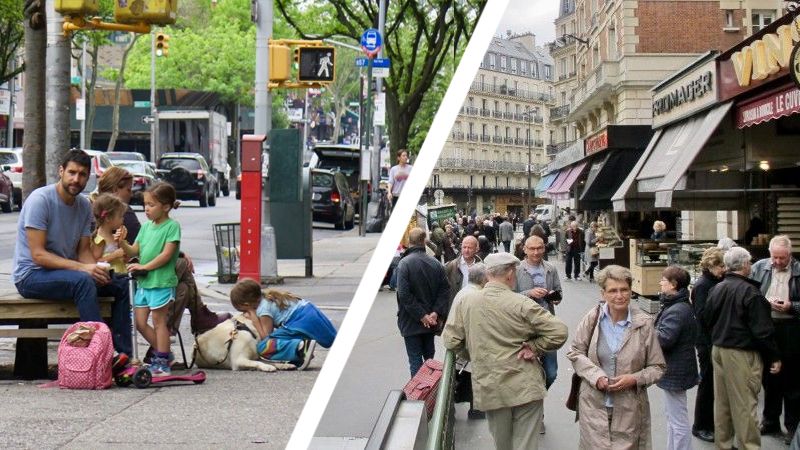
Rue de Buci on the Left Bank
This block (immediately below) on Rue de Buci provides ample space for people to spontaneously meet, socialize and enjoy a memorable experience. The curved design of the roadway allows access to both pedestrians and vehicles (although few motorists drive here because the number of people strolling slows them to a crawl). A healthy mix of shops, cafes, hotels and other businesses make it a place people want to go.
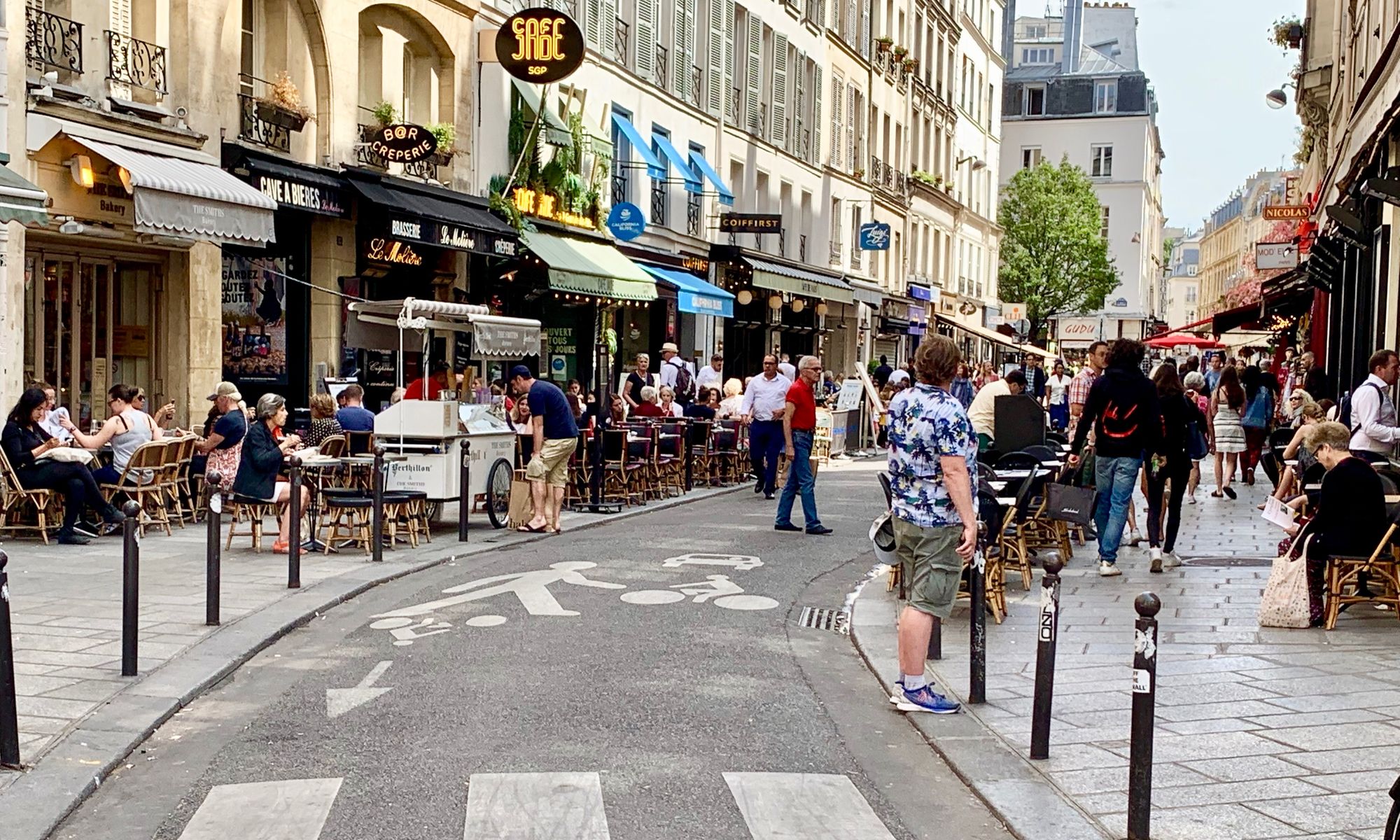
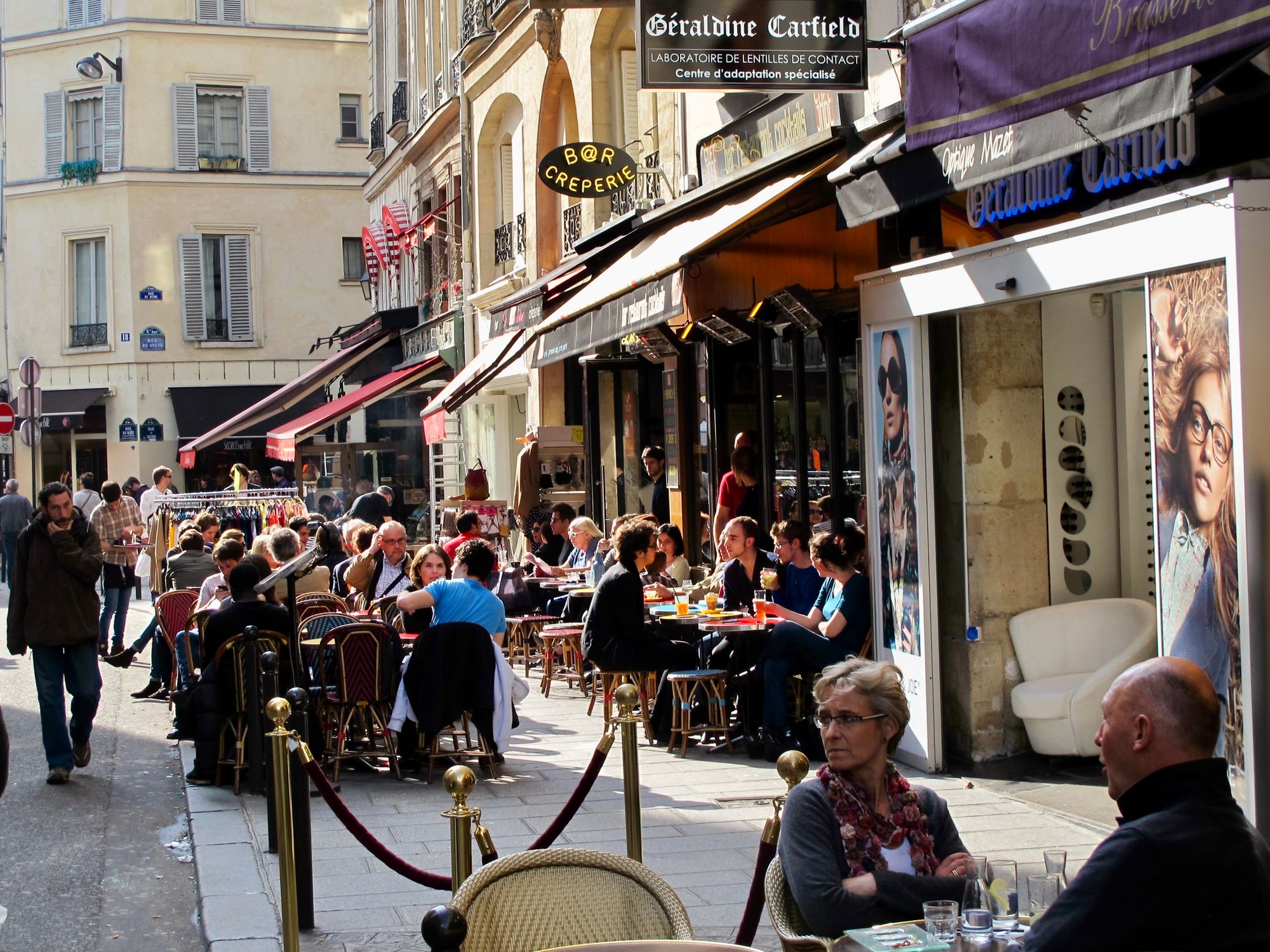
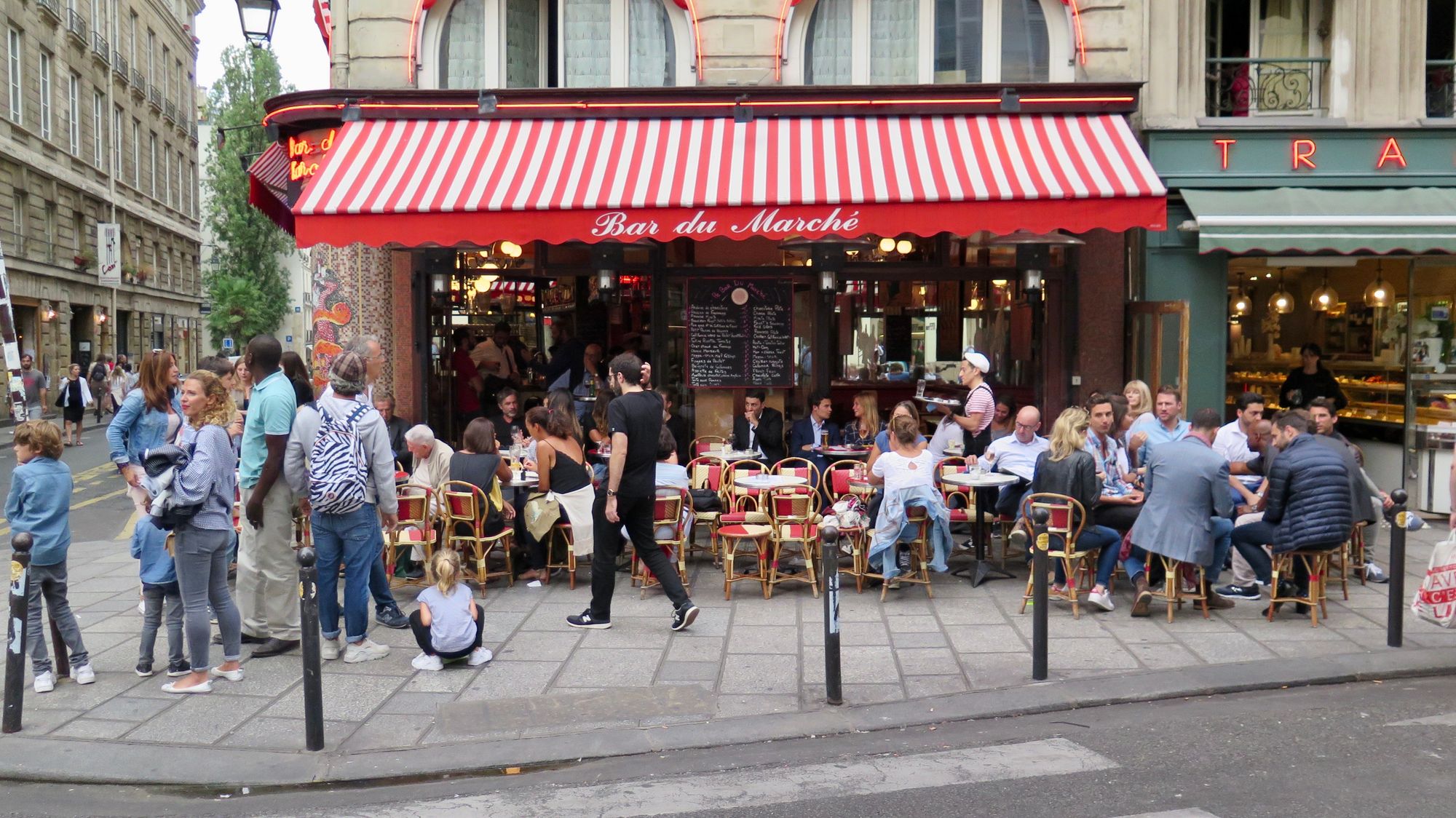
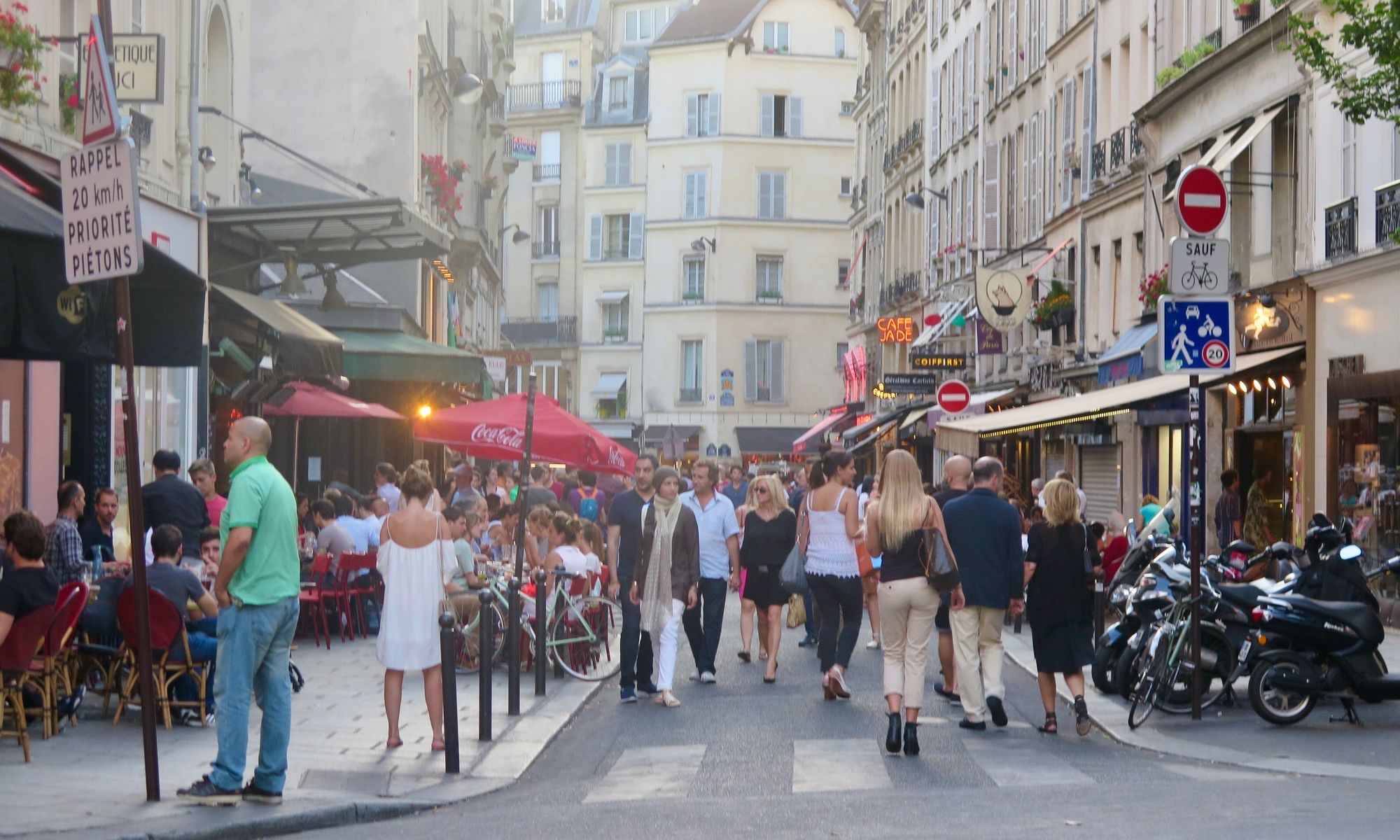
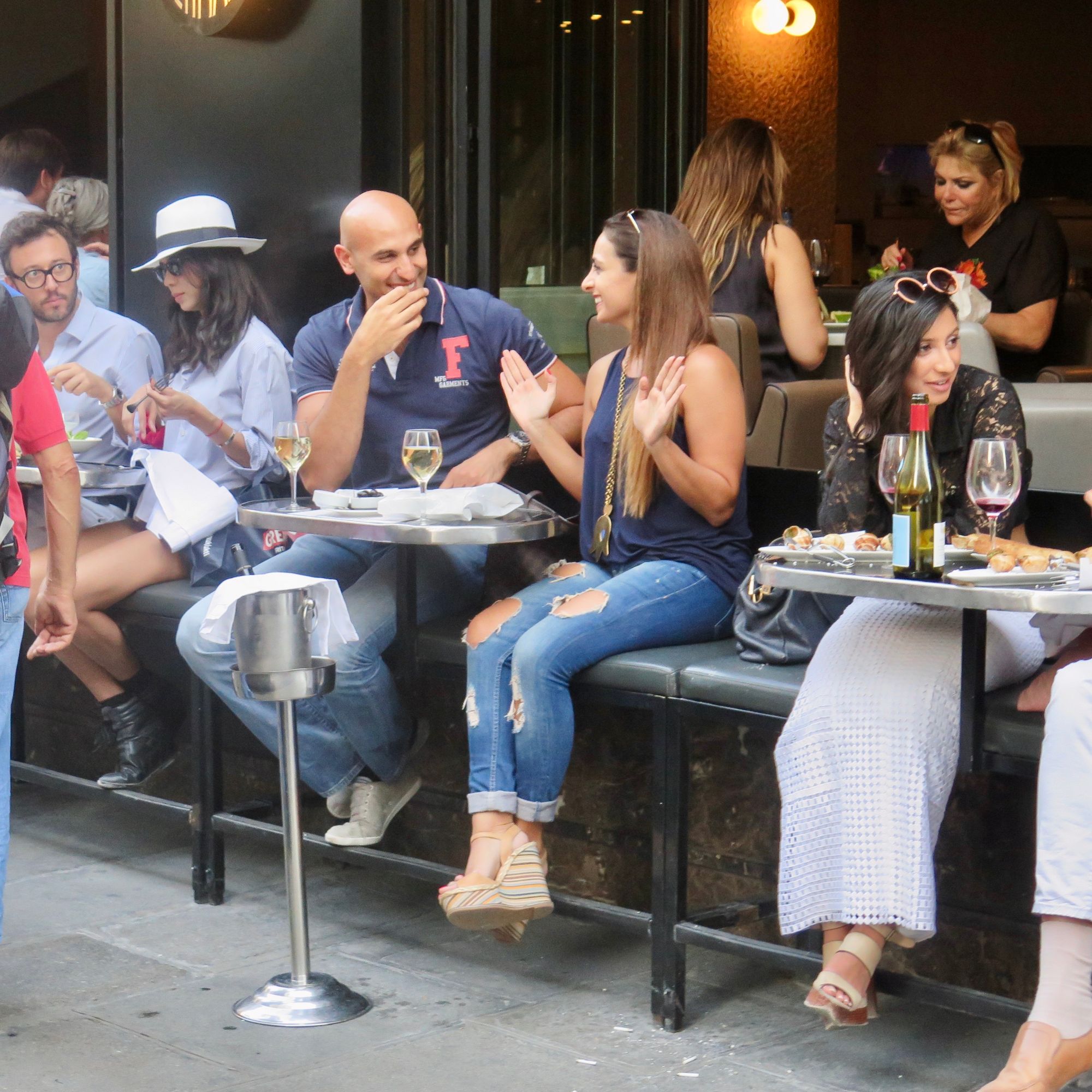
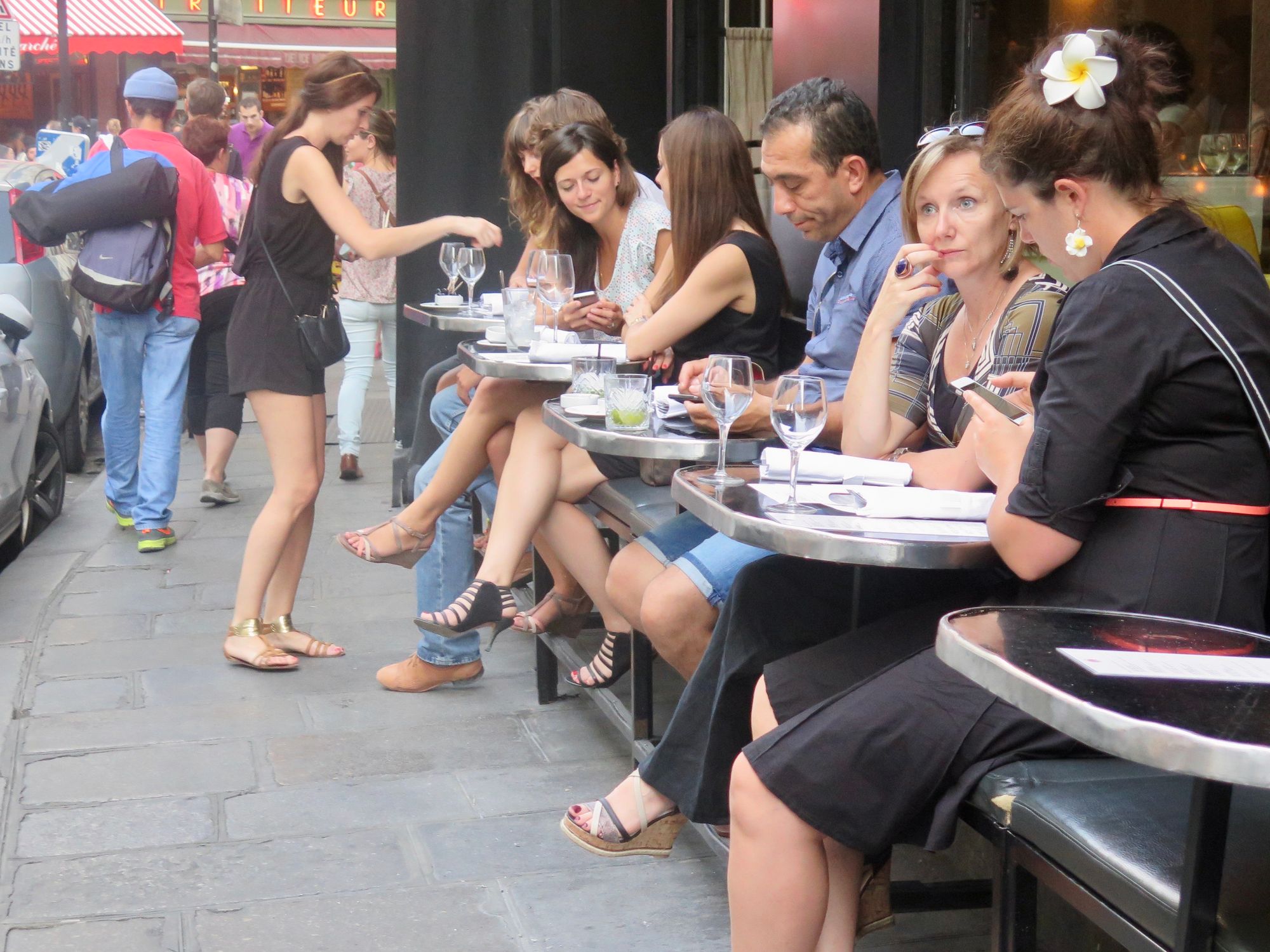
The ultimate cafe scene with the show walking by
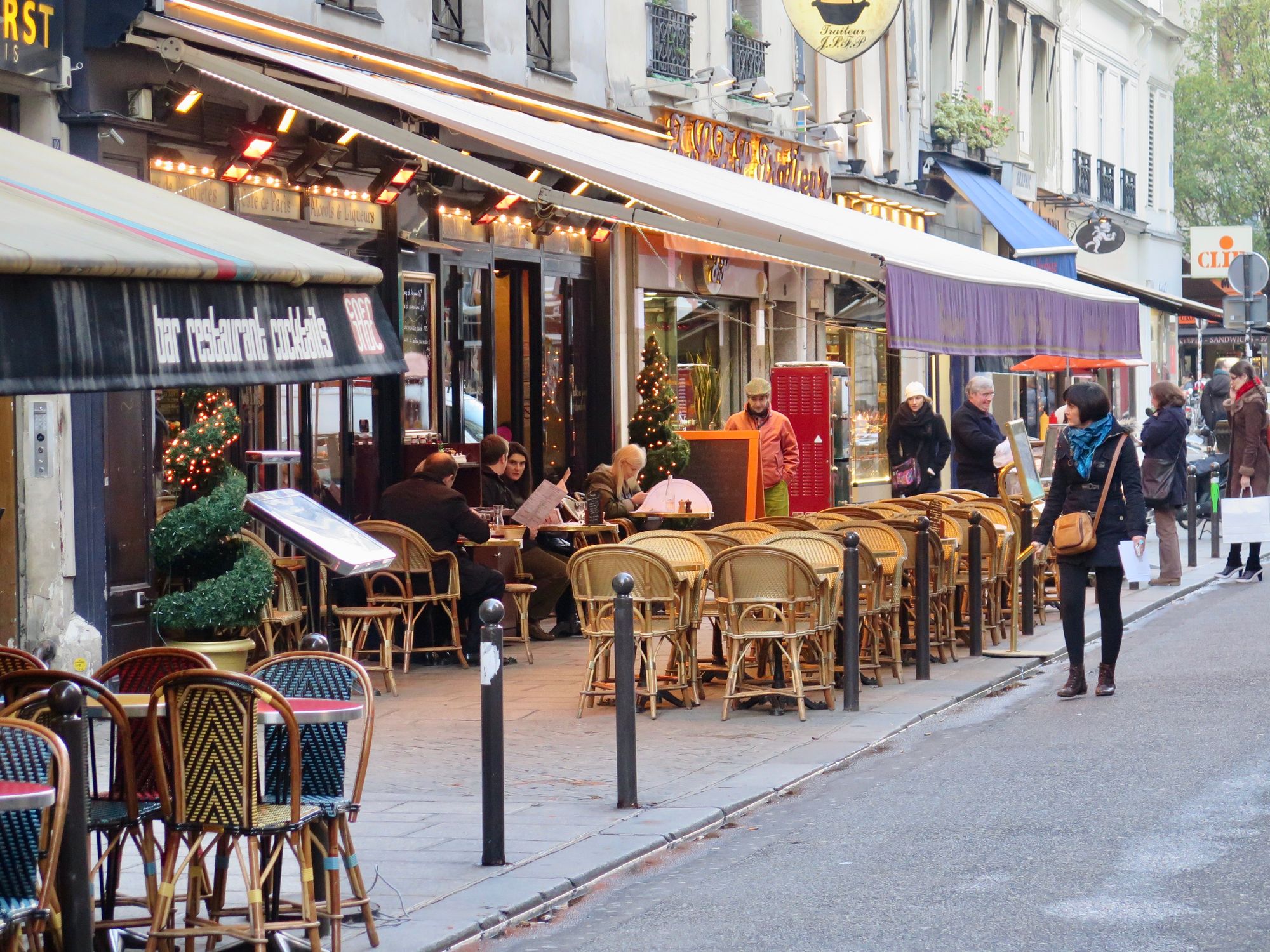
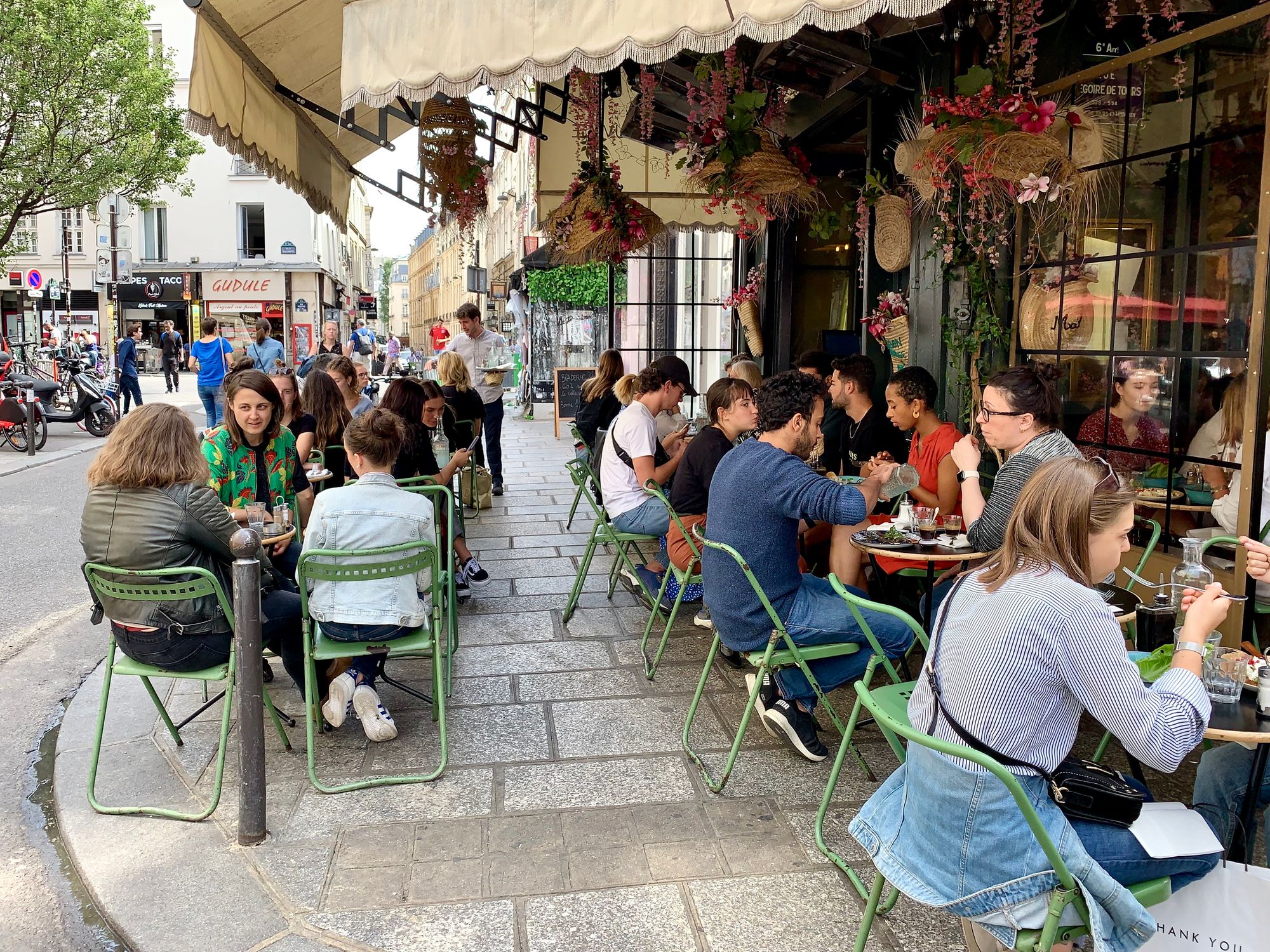
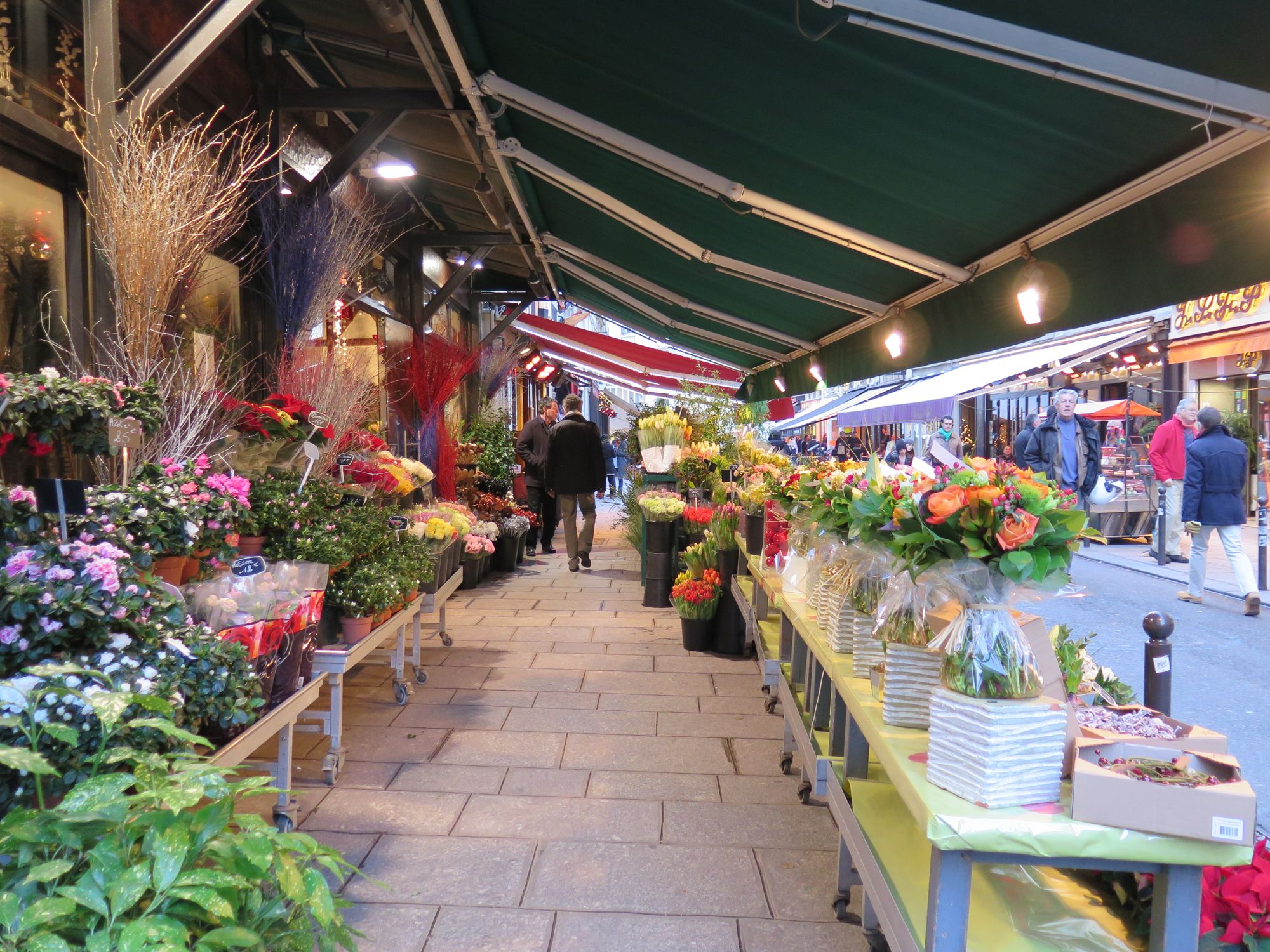
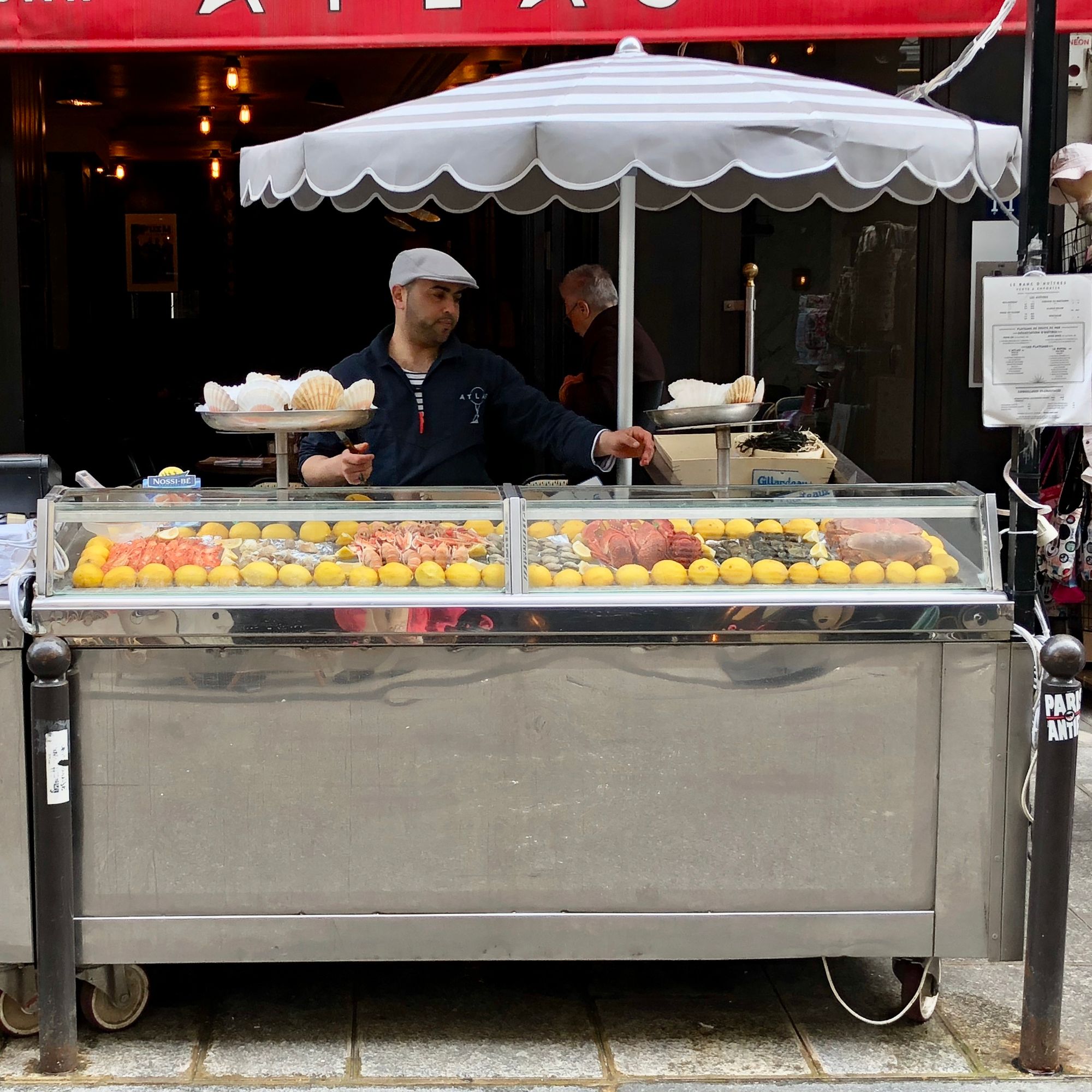

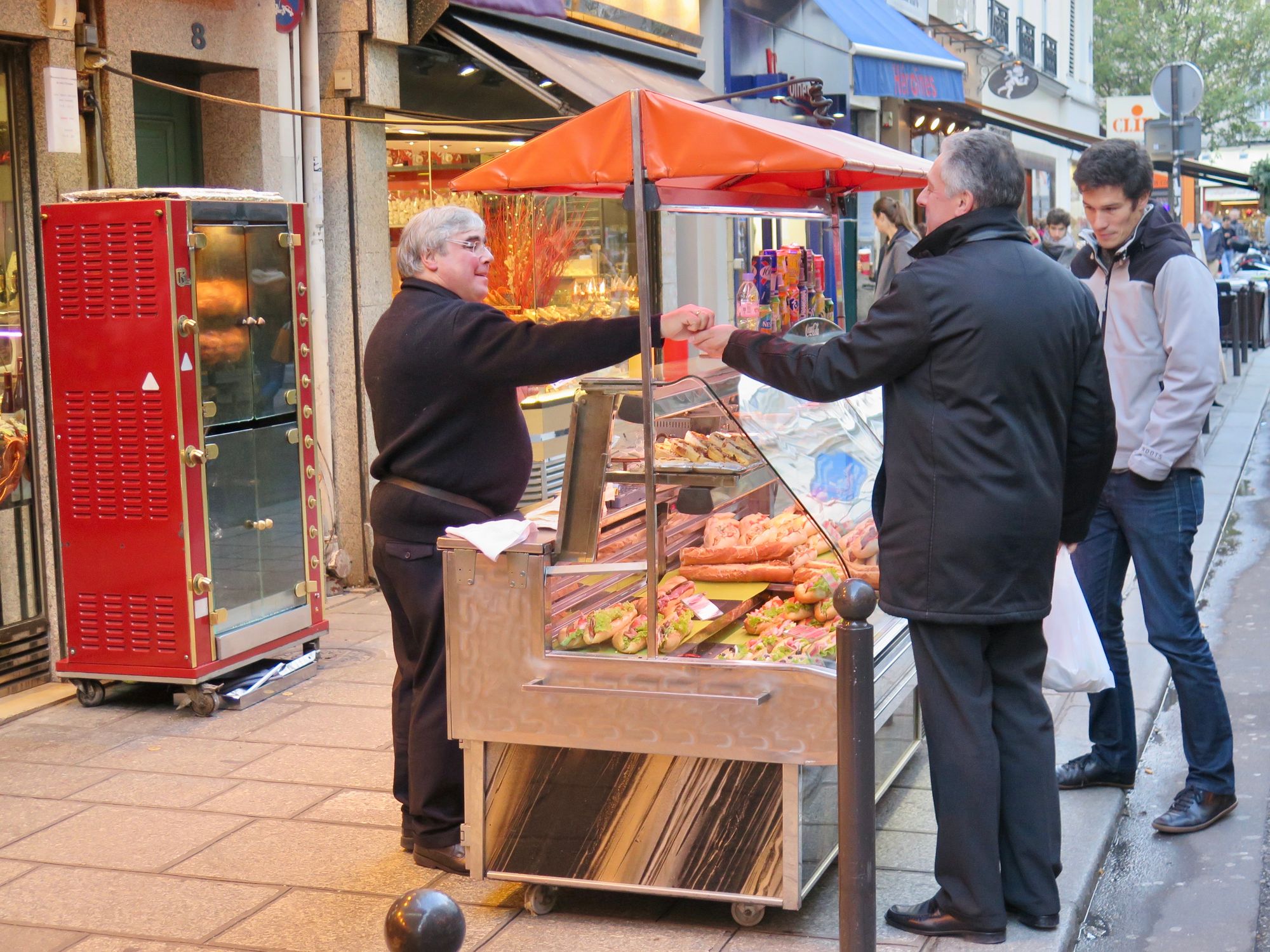
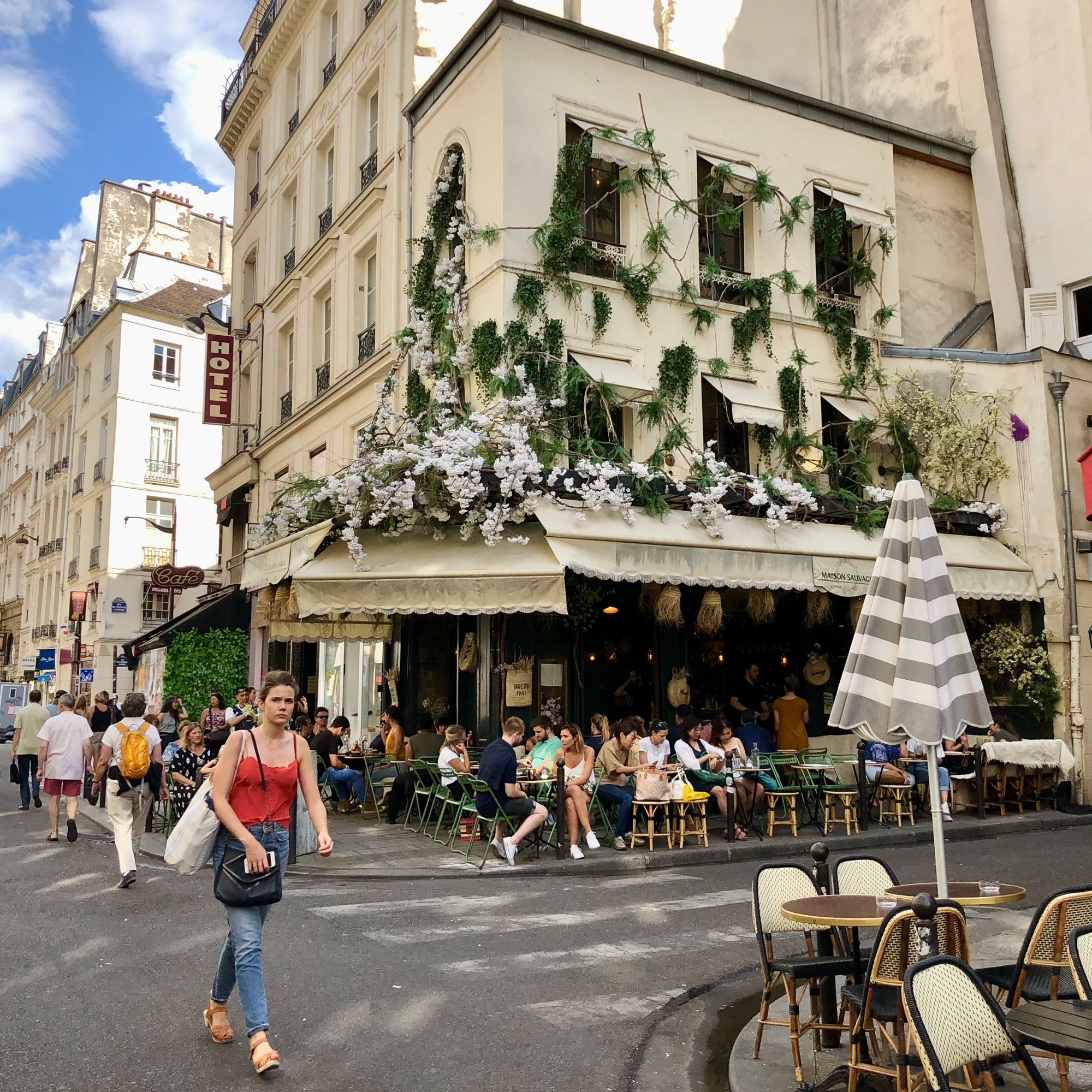
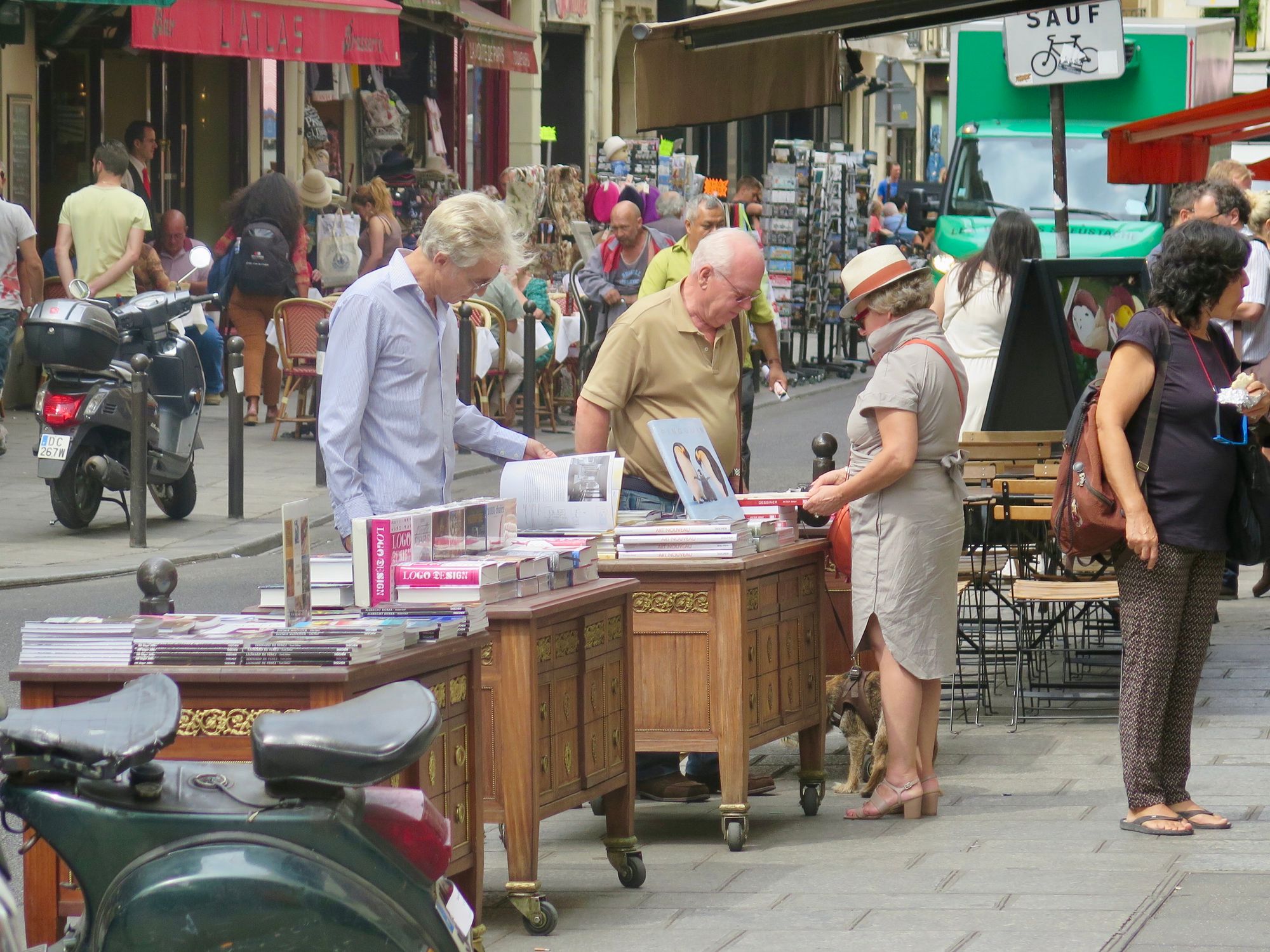
Wide sidewalks make room for seating, kiosks or shop displays in two distinct spots on the same side of the street, a process known as "double loading"
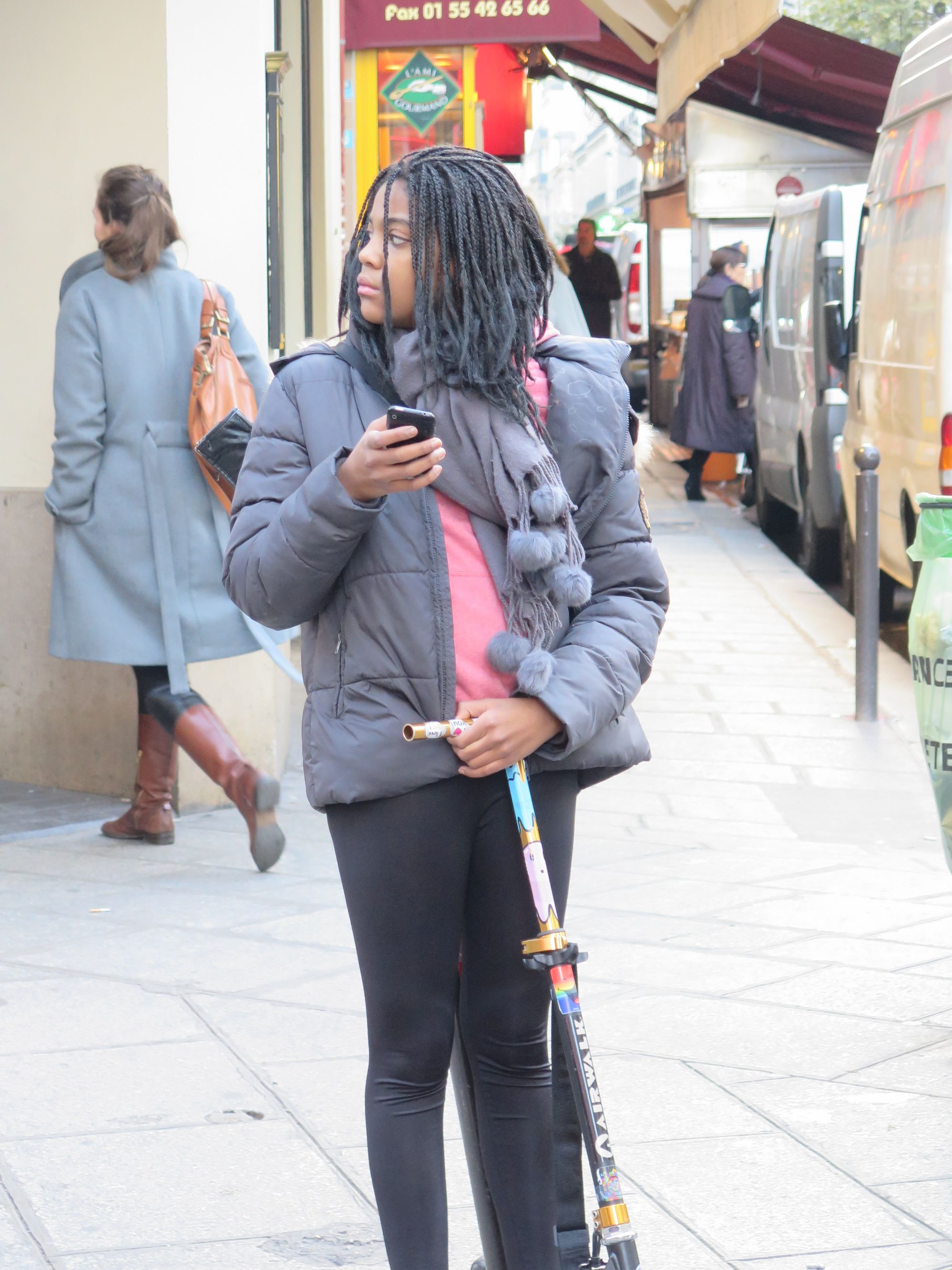
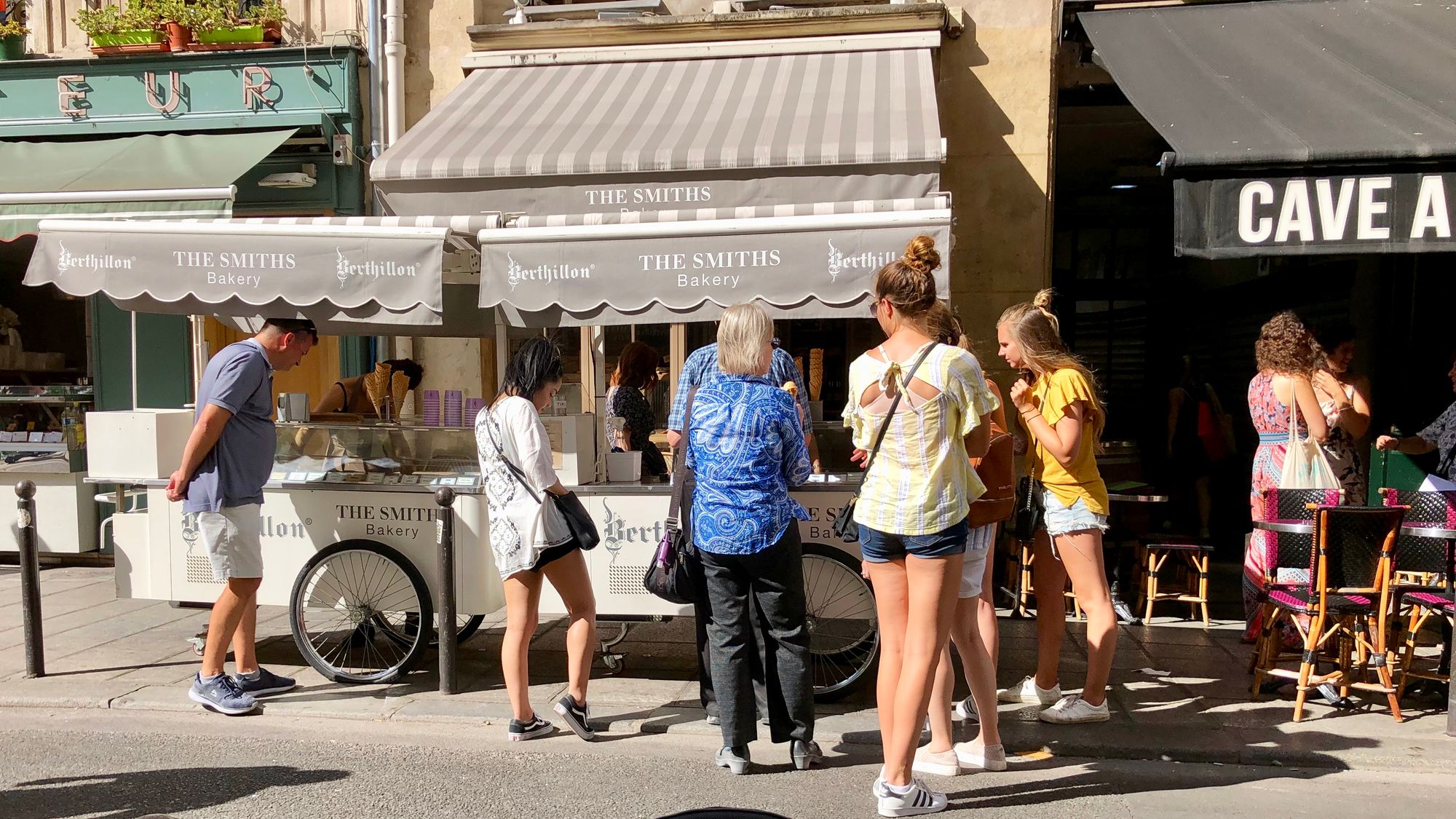
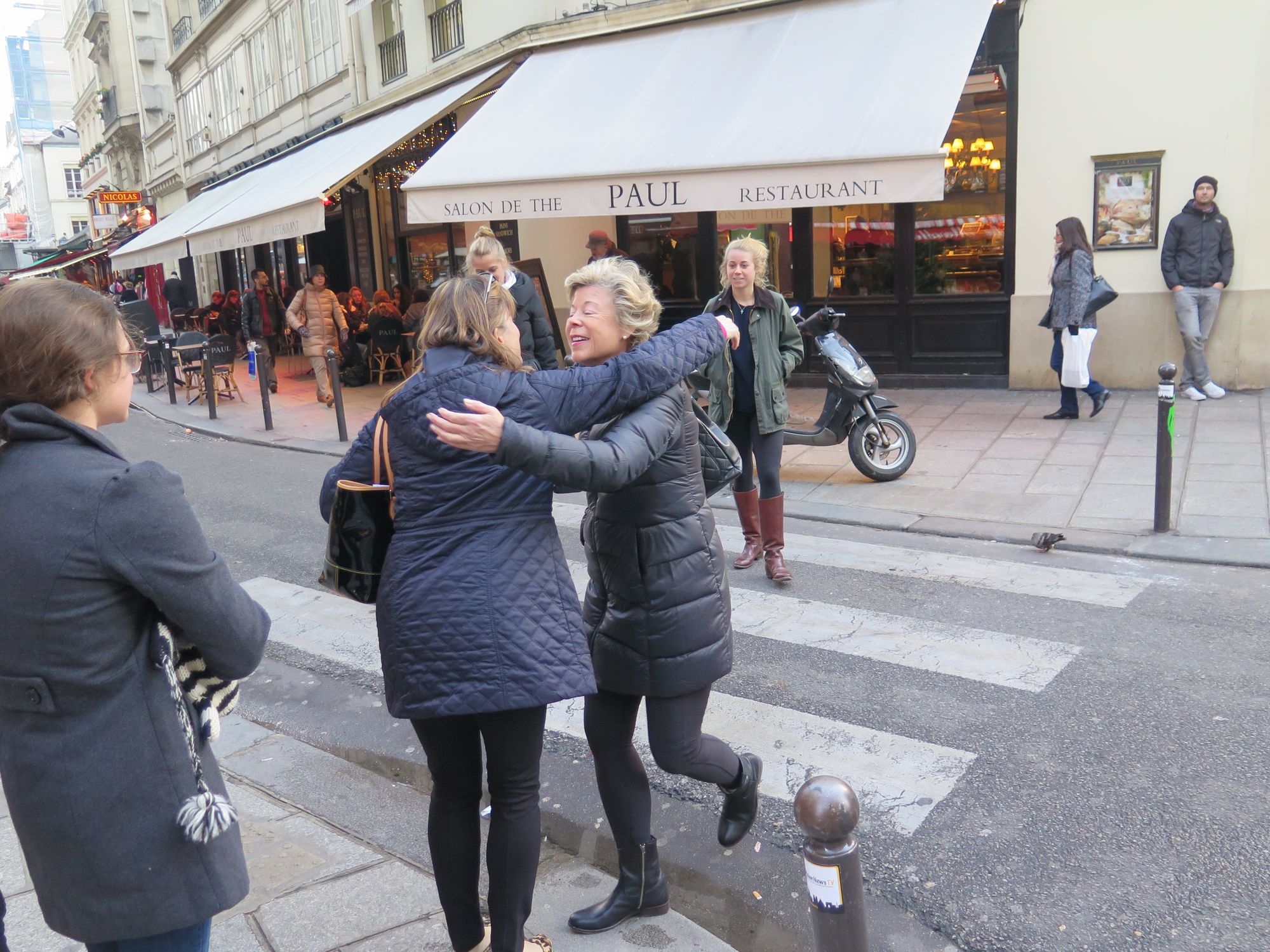
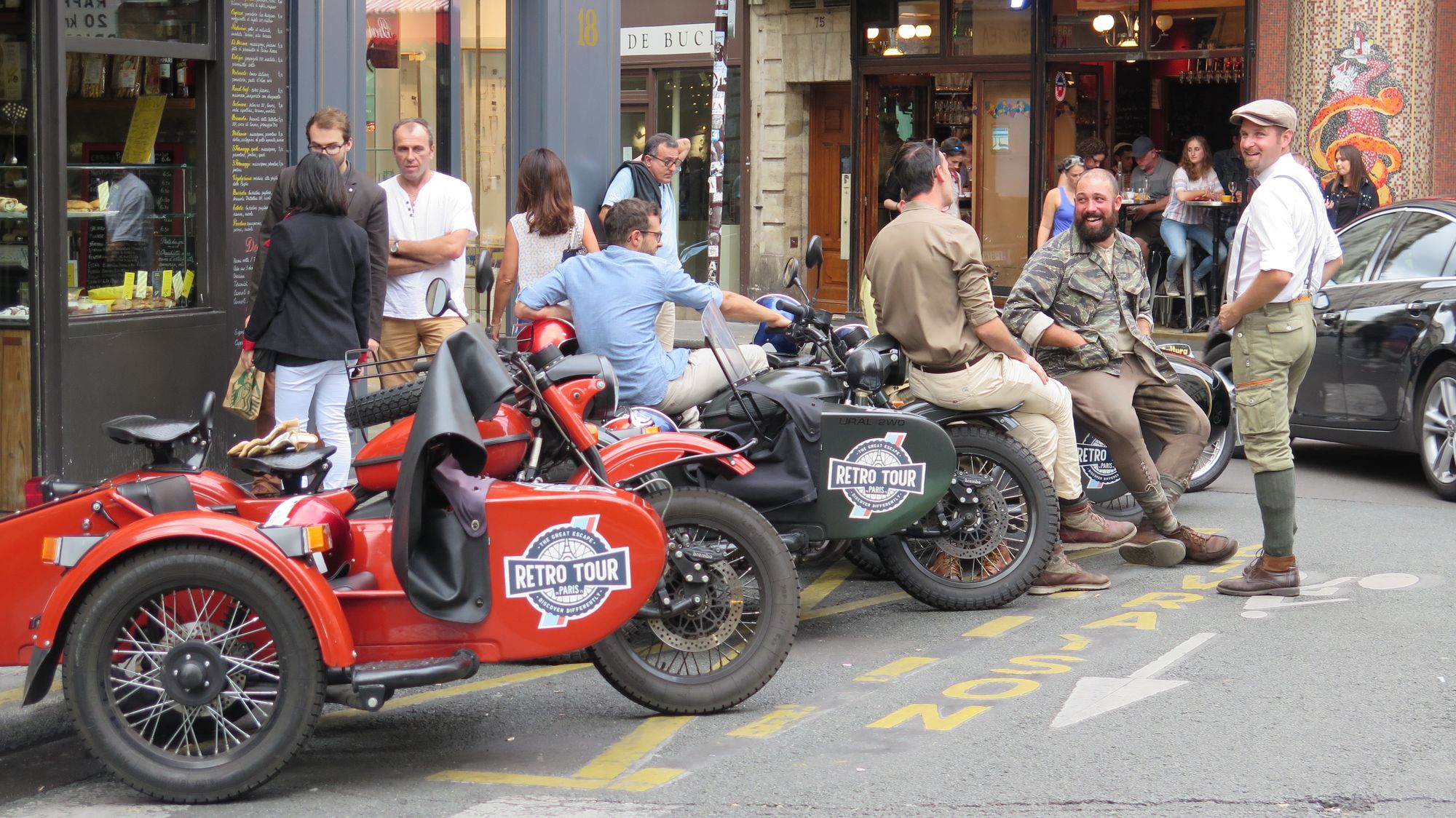
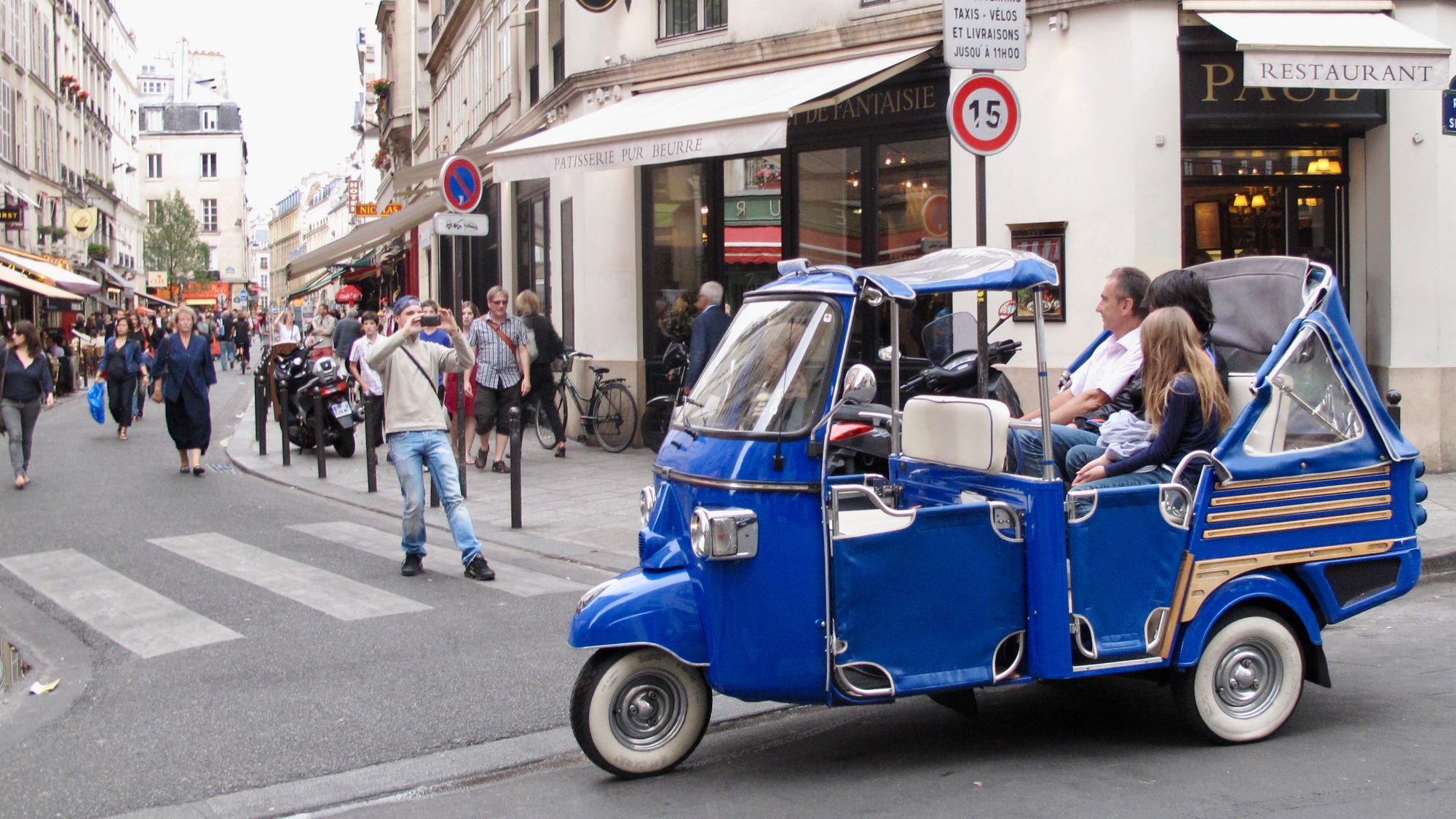
People hanging out—some to be seen, others watching, connecting, enjoying the street life
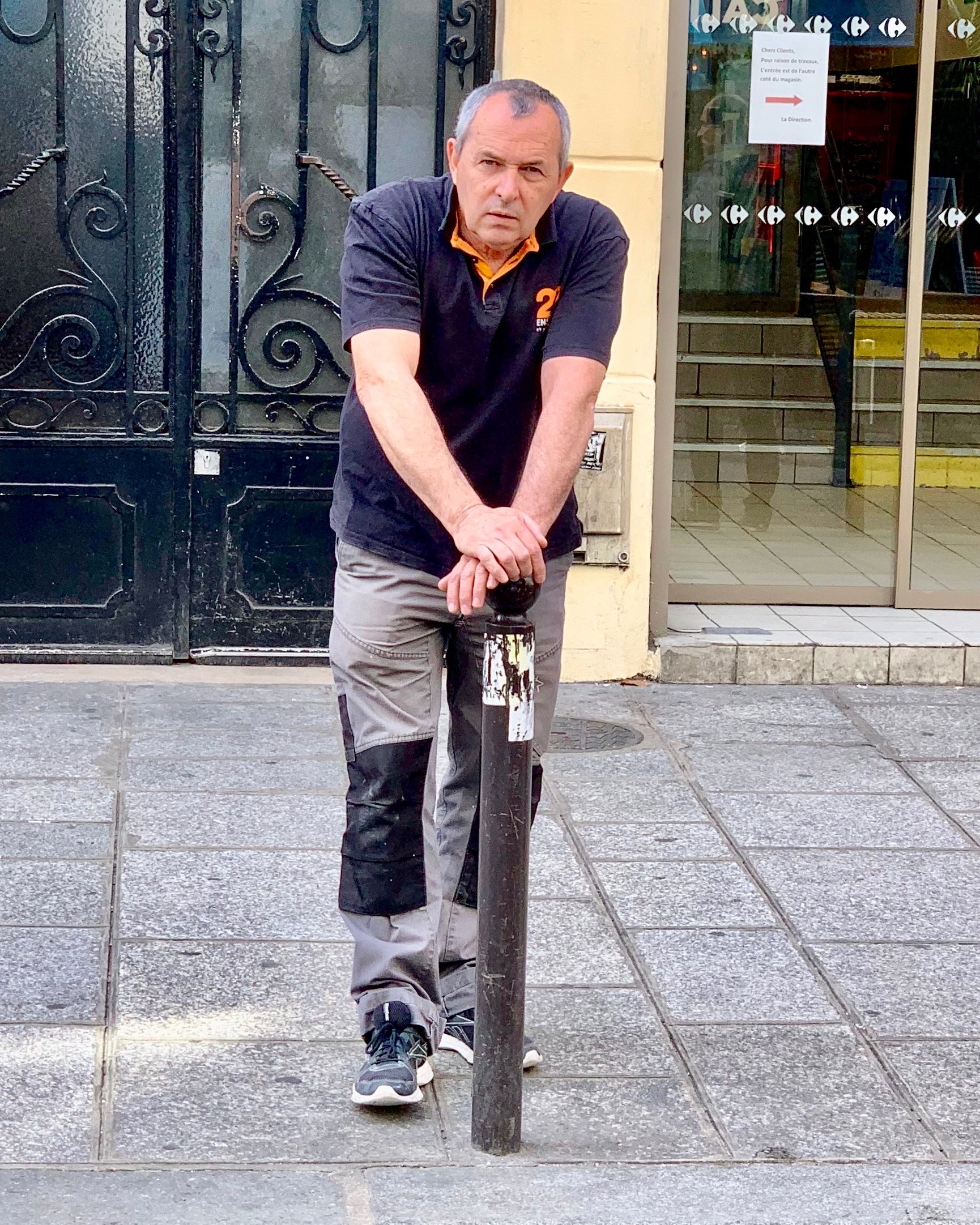
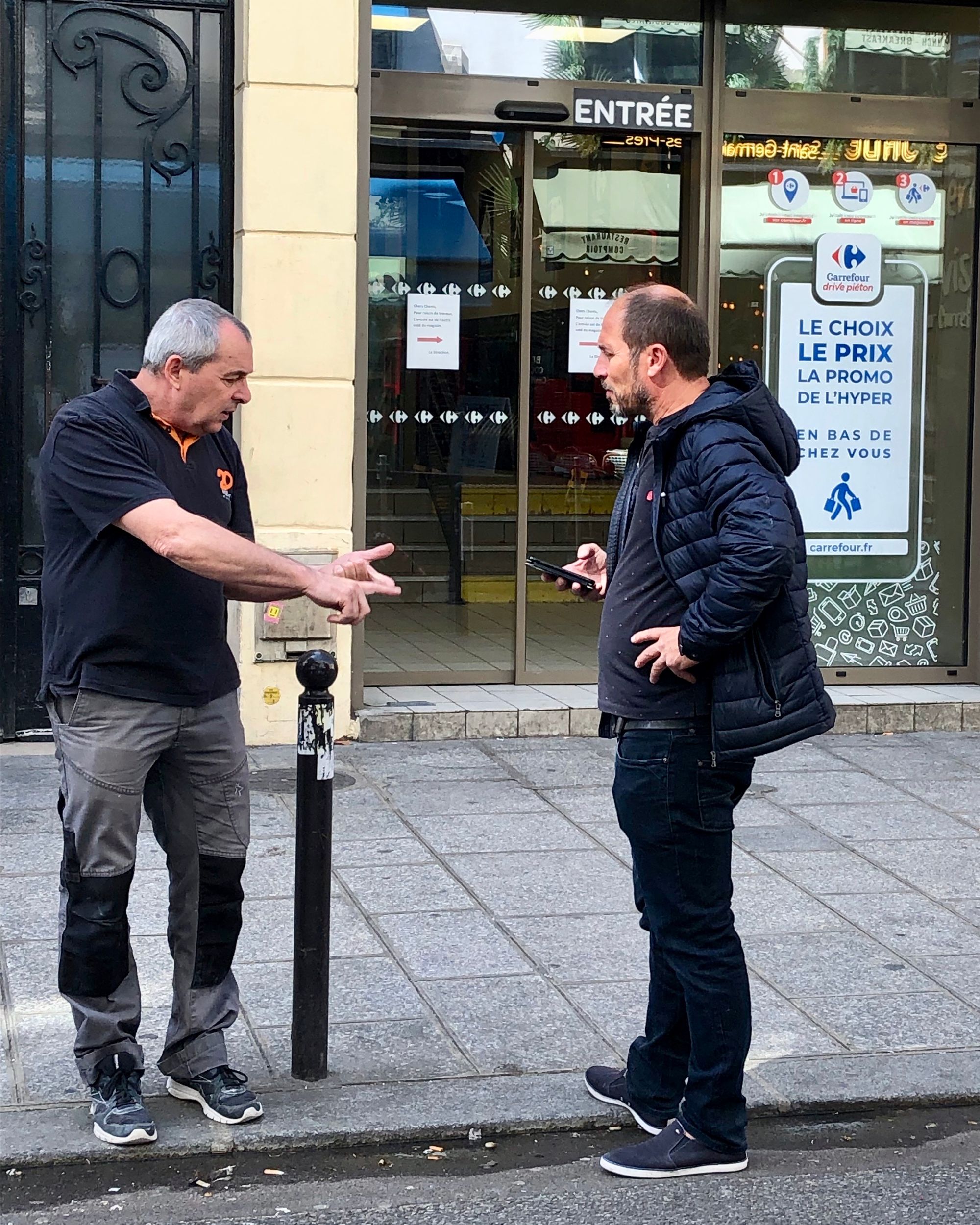
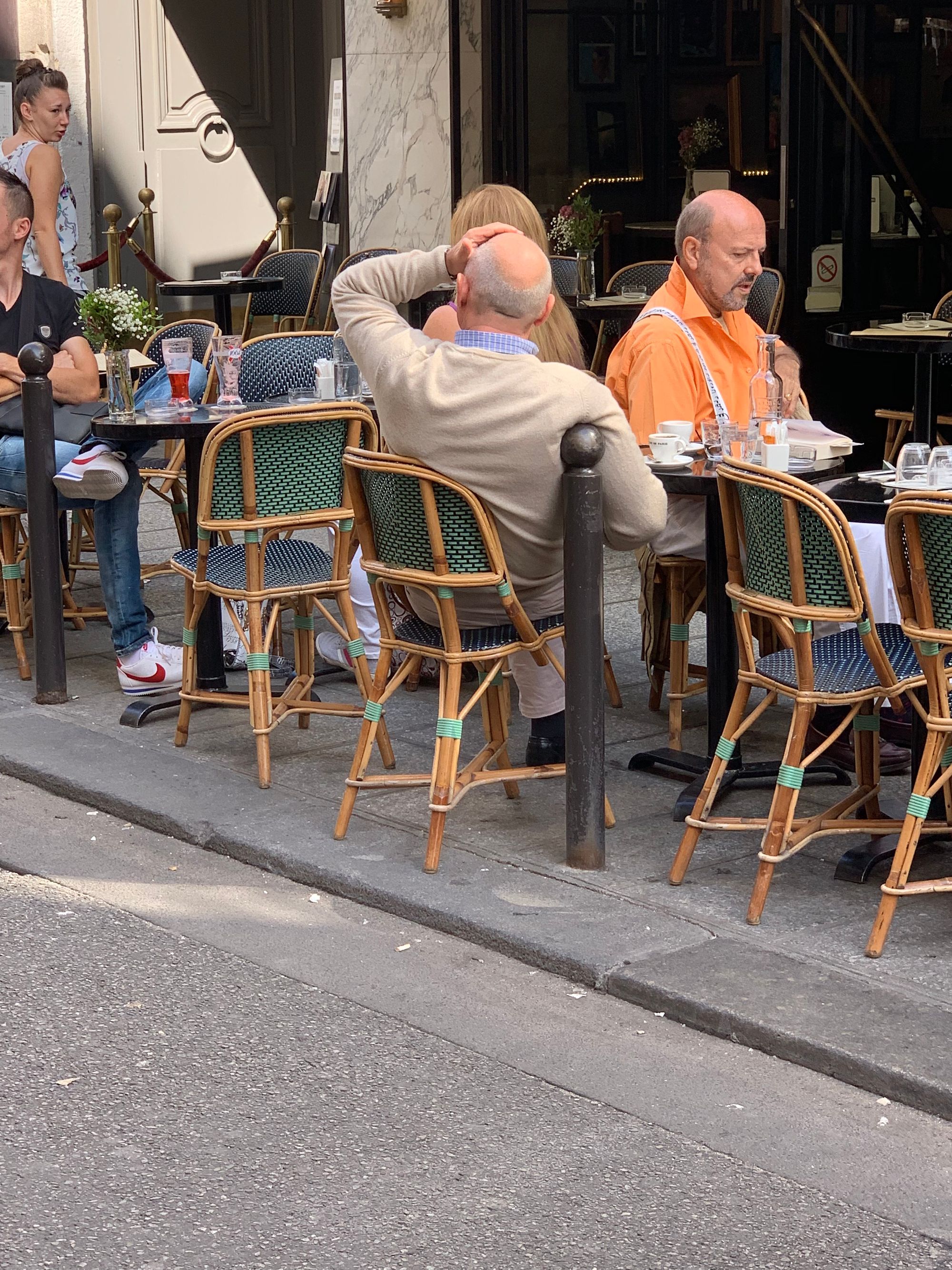
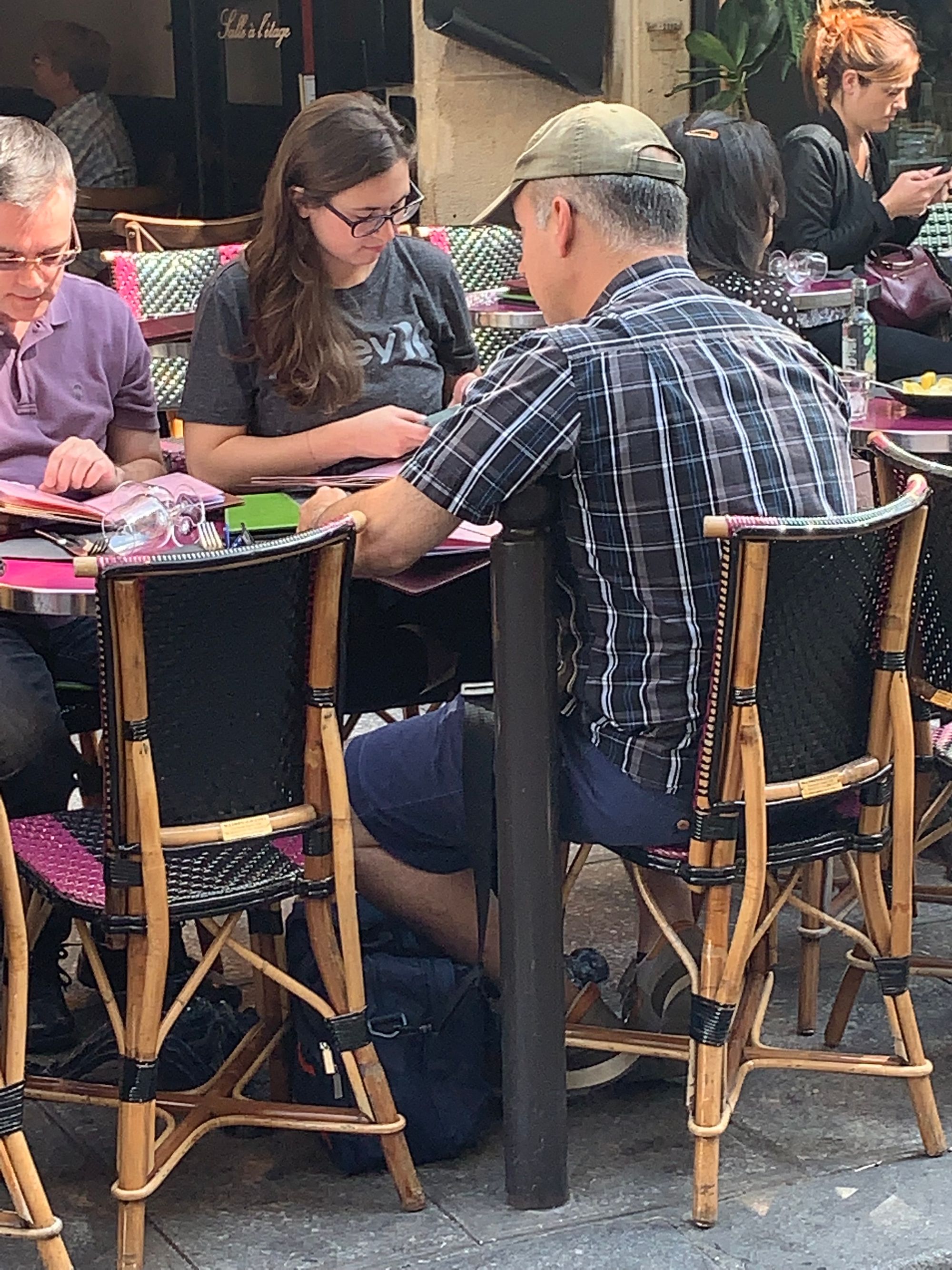
Even the metal bollards used to protect the sidewalk from traffic become tools that support social activity
Rue Mouffetard near Luxembourg Gardens
This bustling street running downhill from the Pantheon proffers a cornucopia of produce stands, gourmet shops, markets and bistros—making it an appetizing destination.
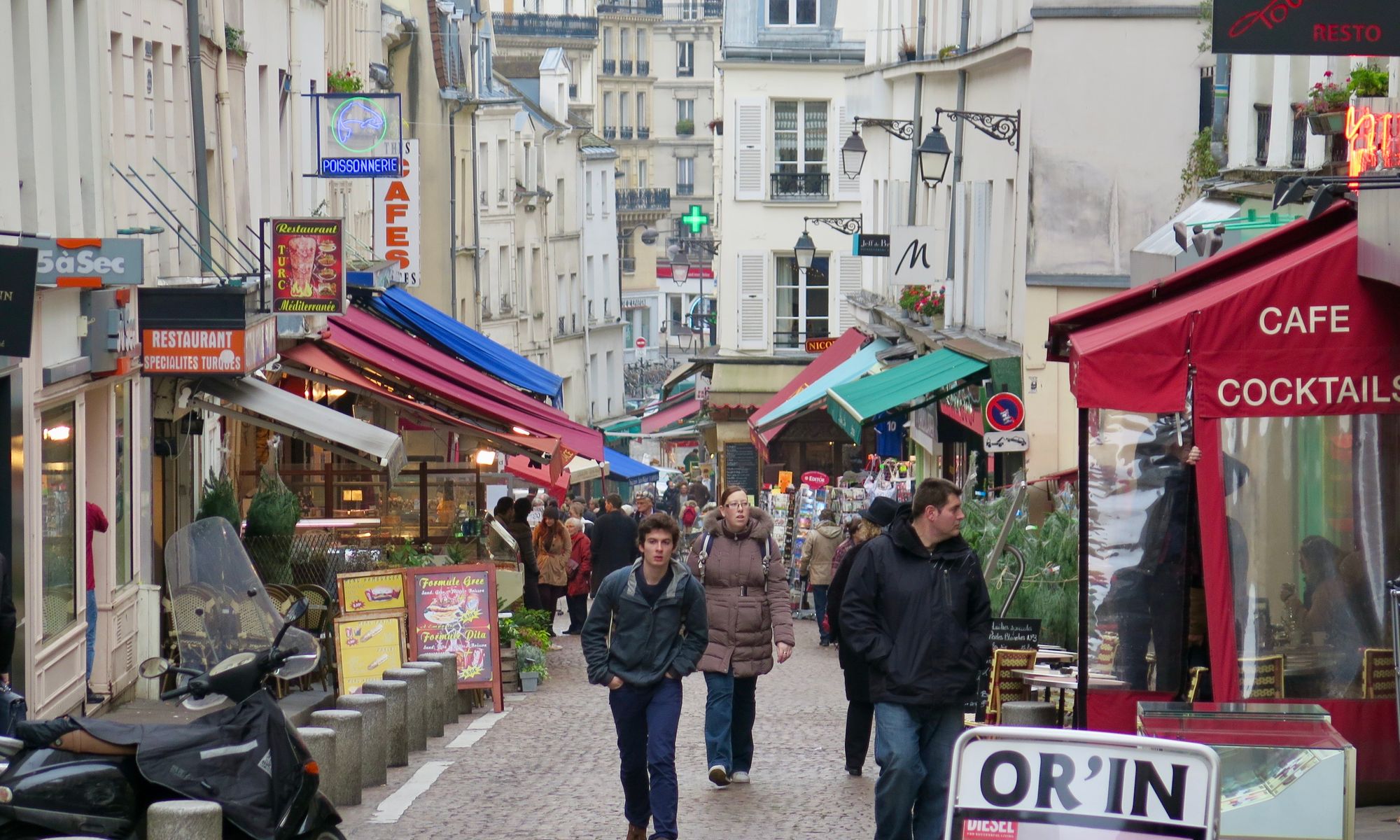
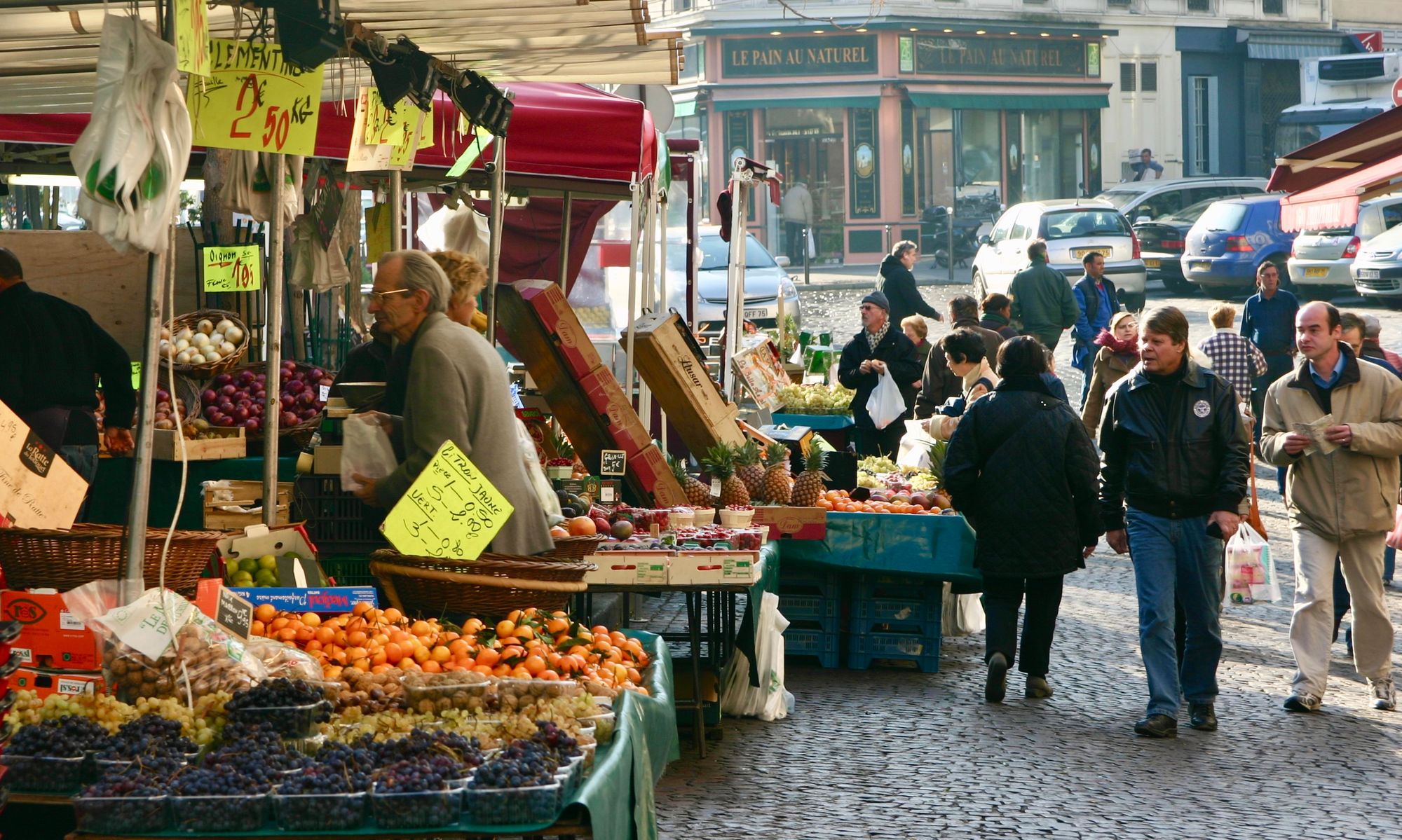
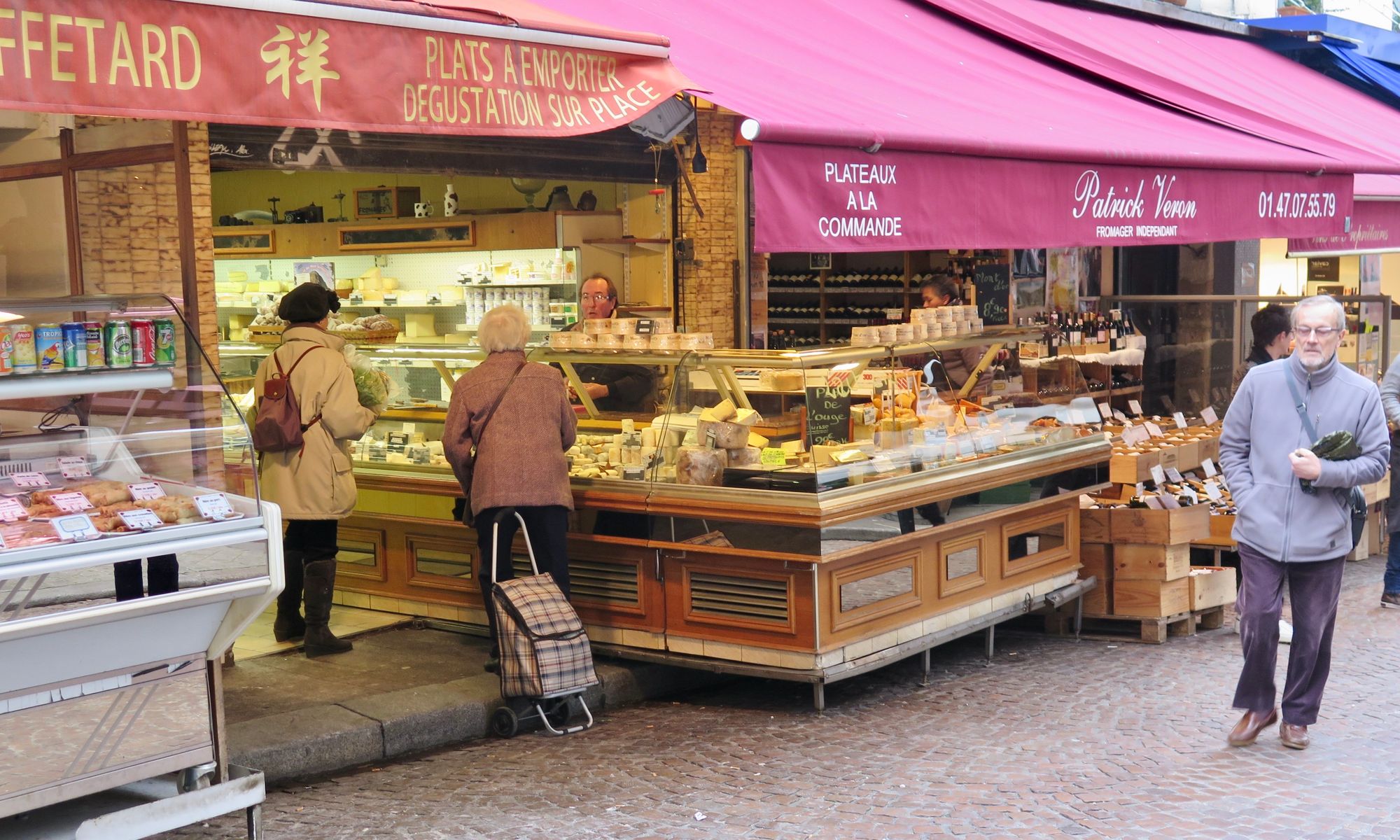
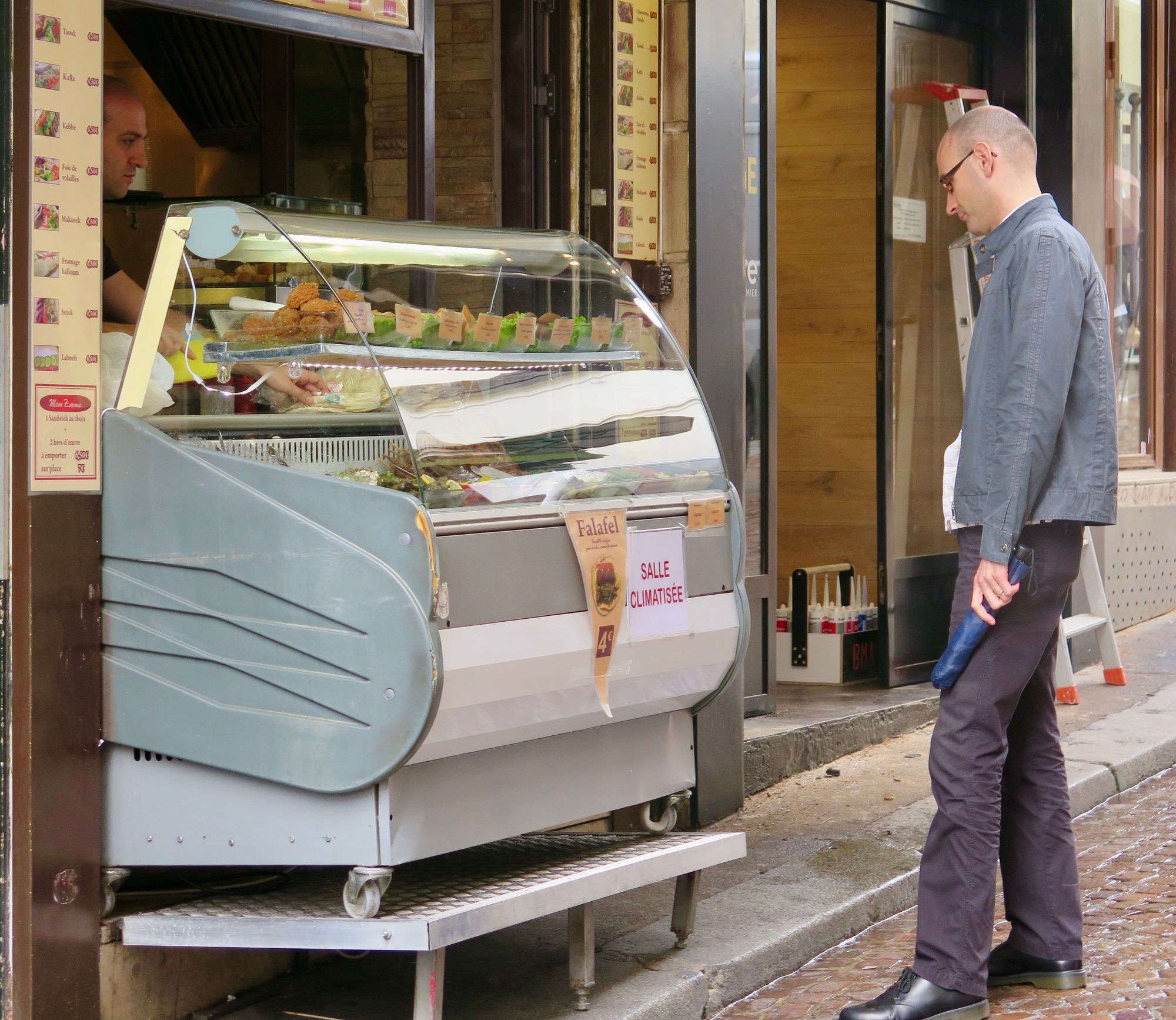
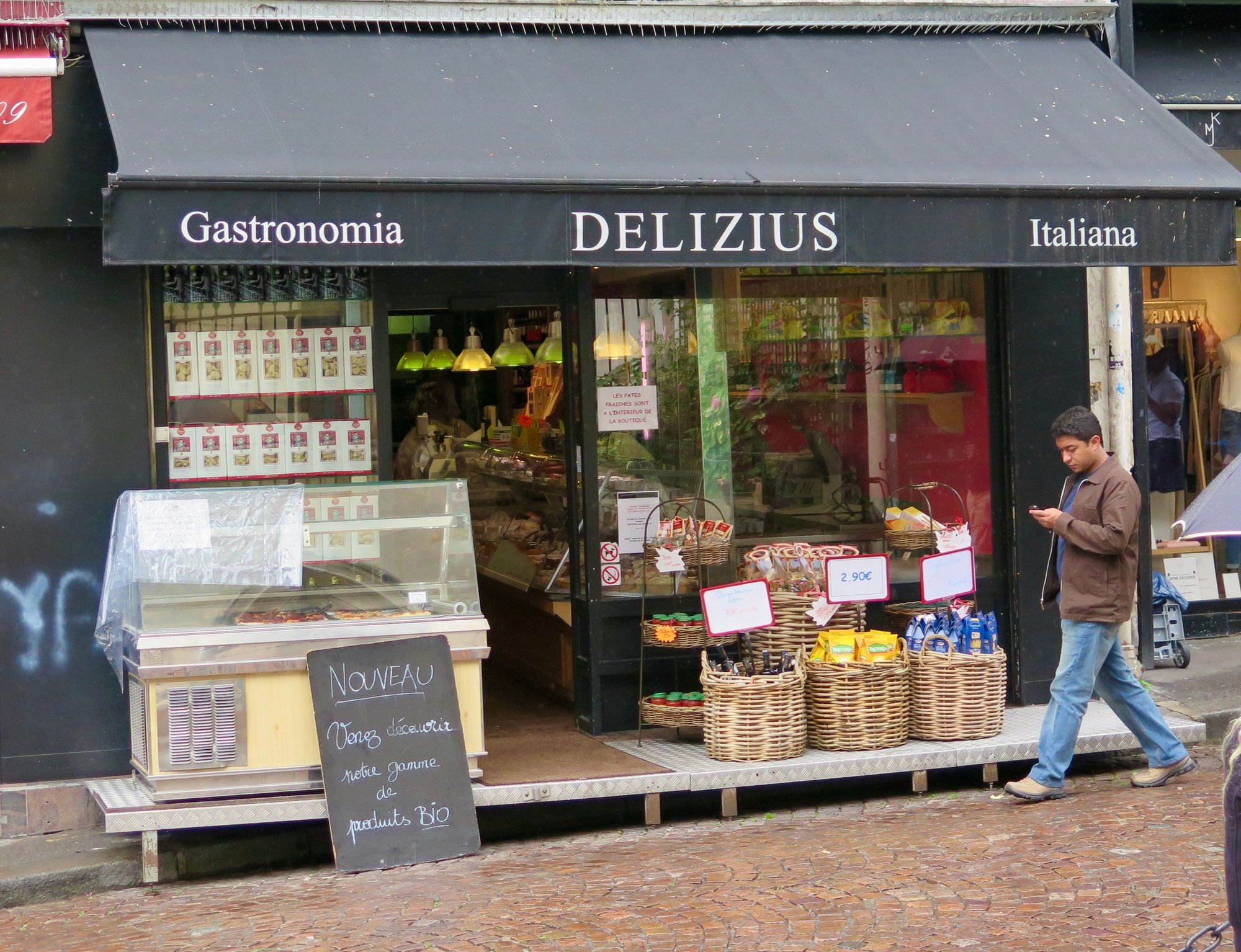
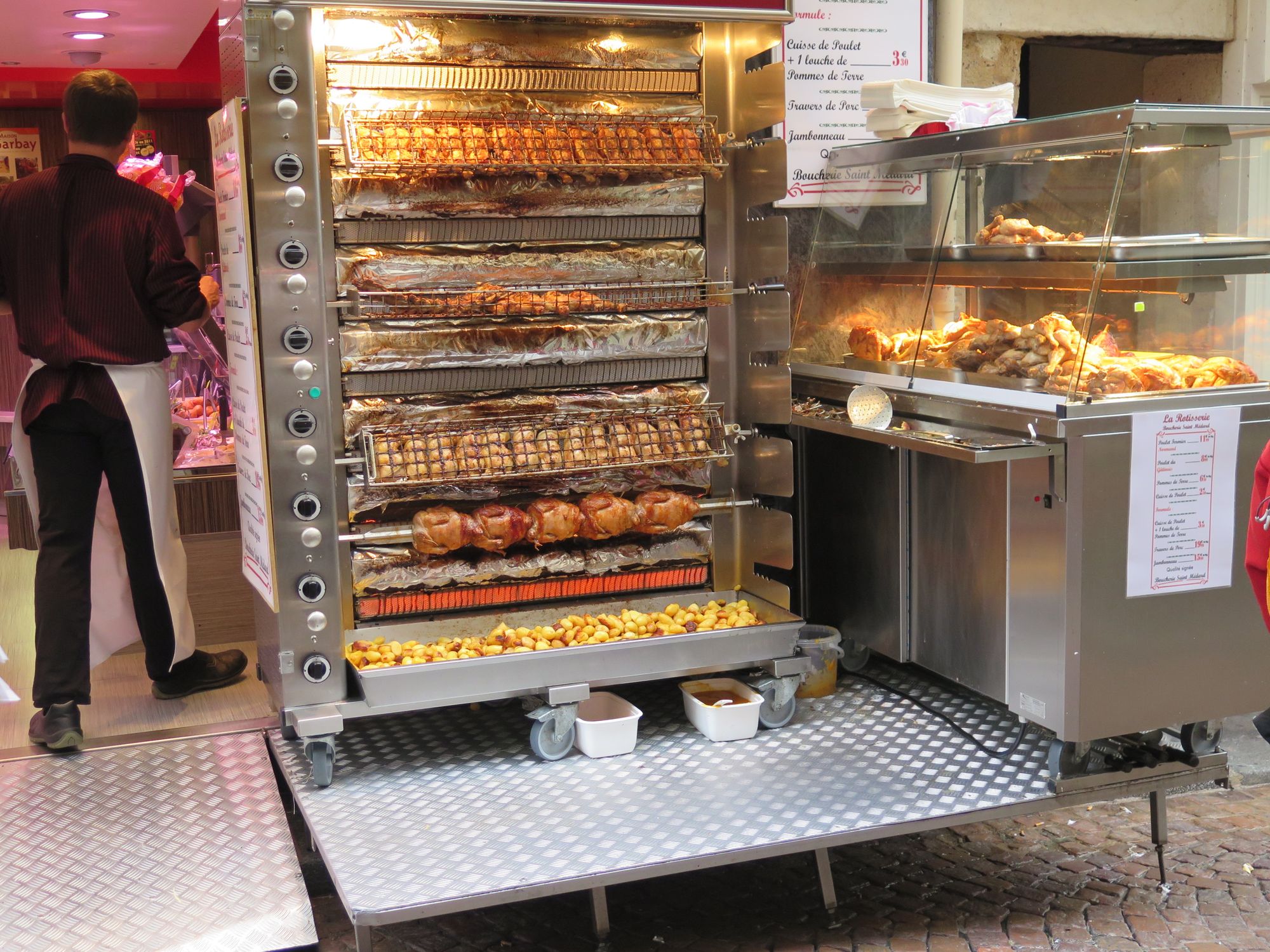
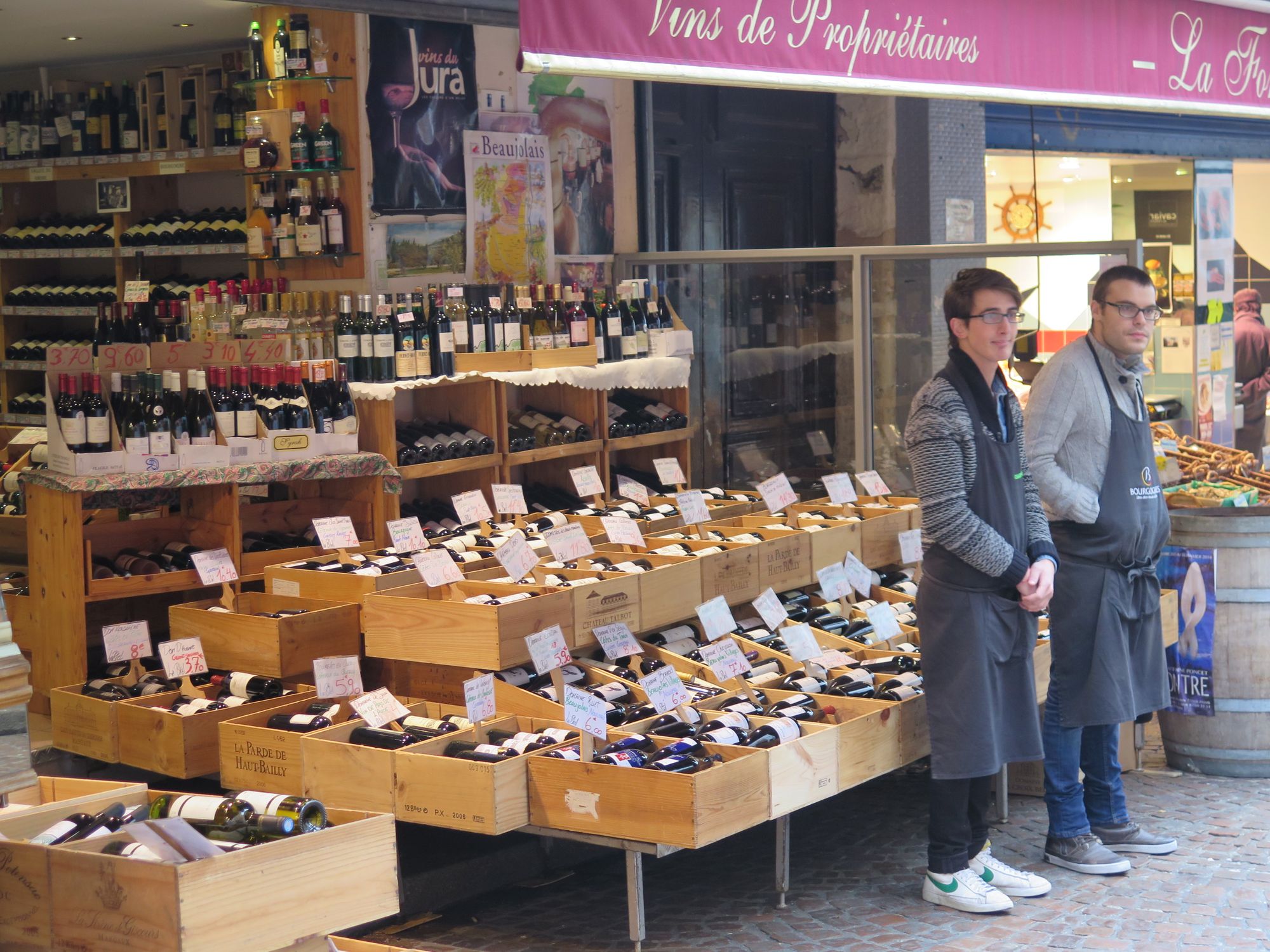
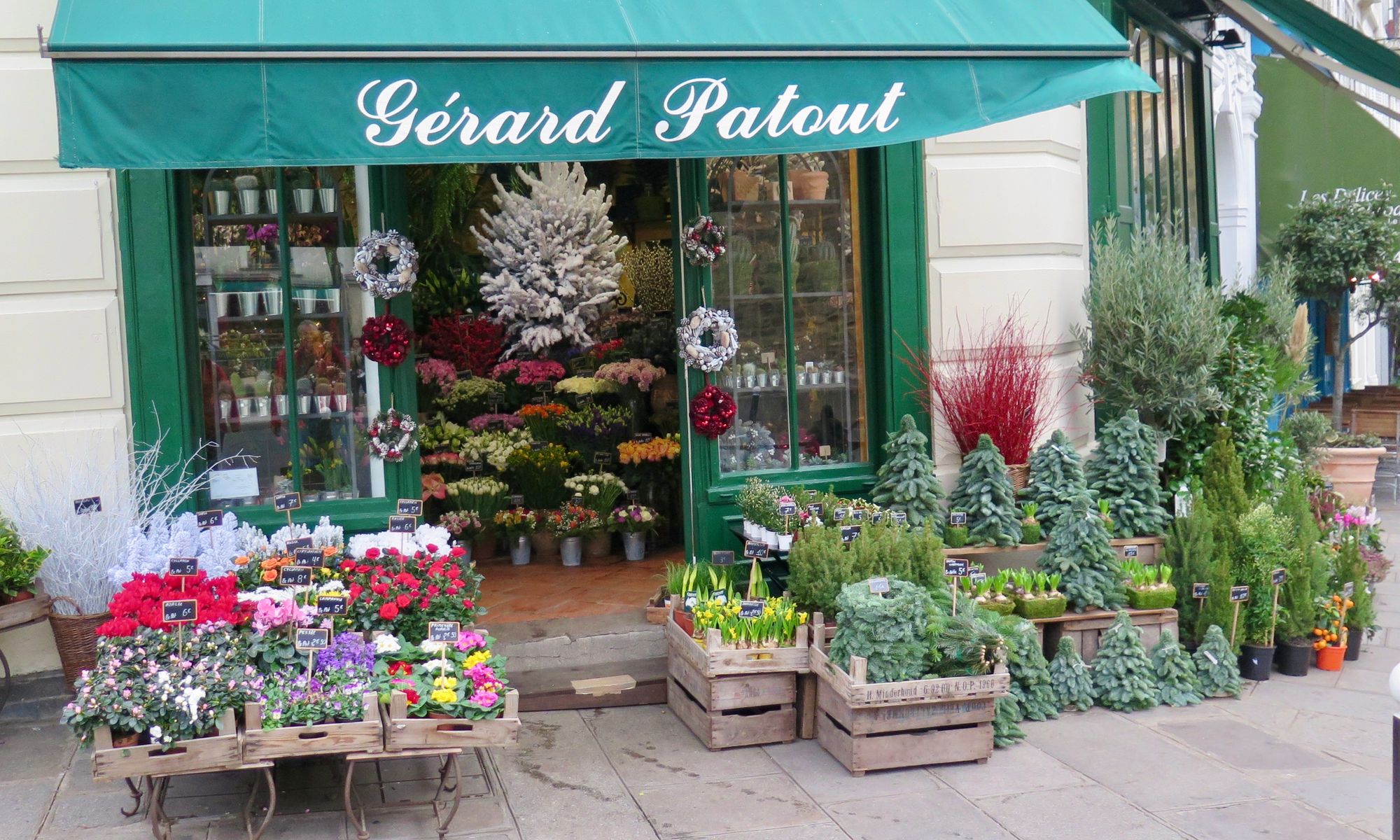
Rue Montorgueil on the Right Bank
In what was once the Les Halles market district, this pedestrian-friendly street is still a favored spot for dining out or picking up provisions.
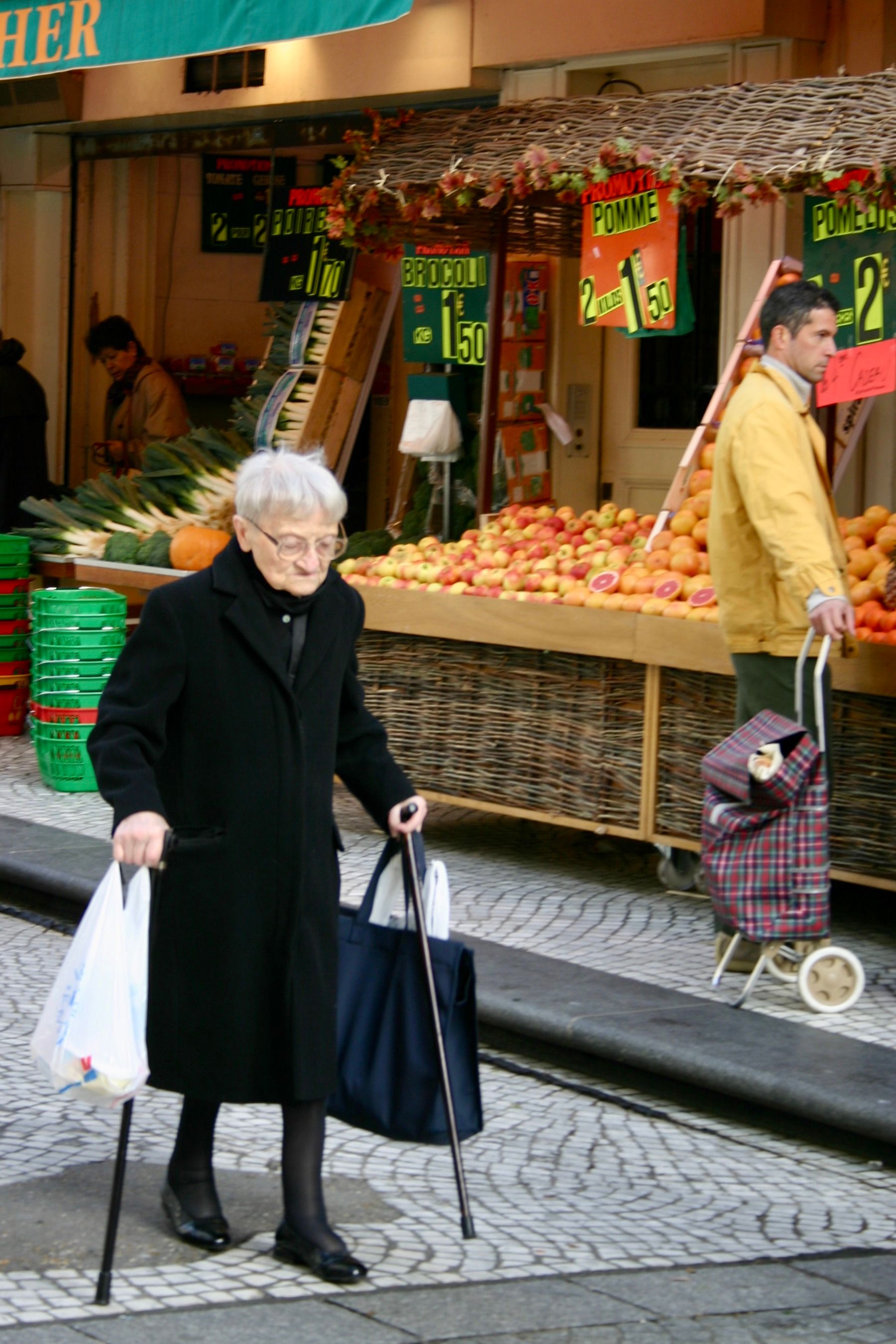
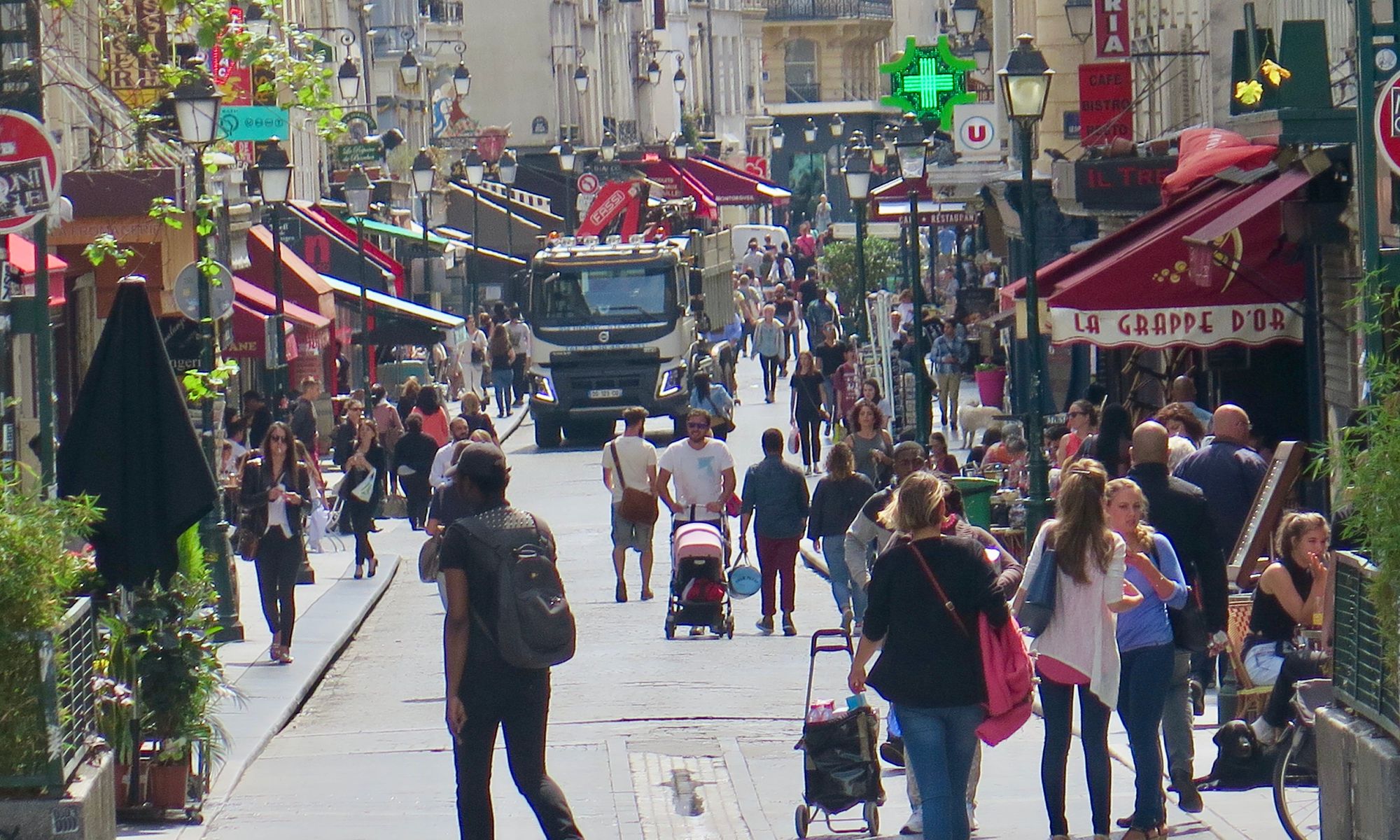
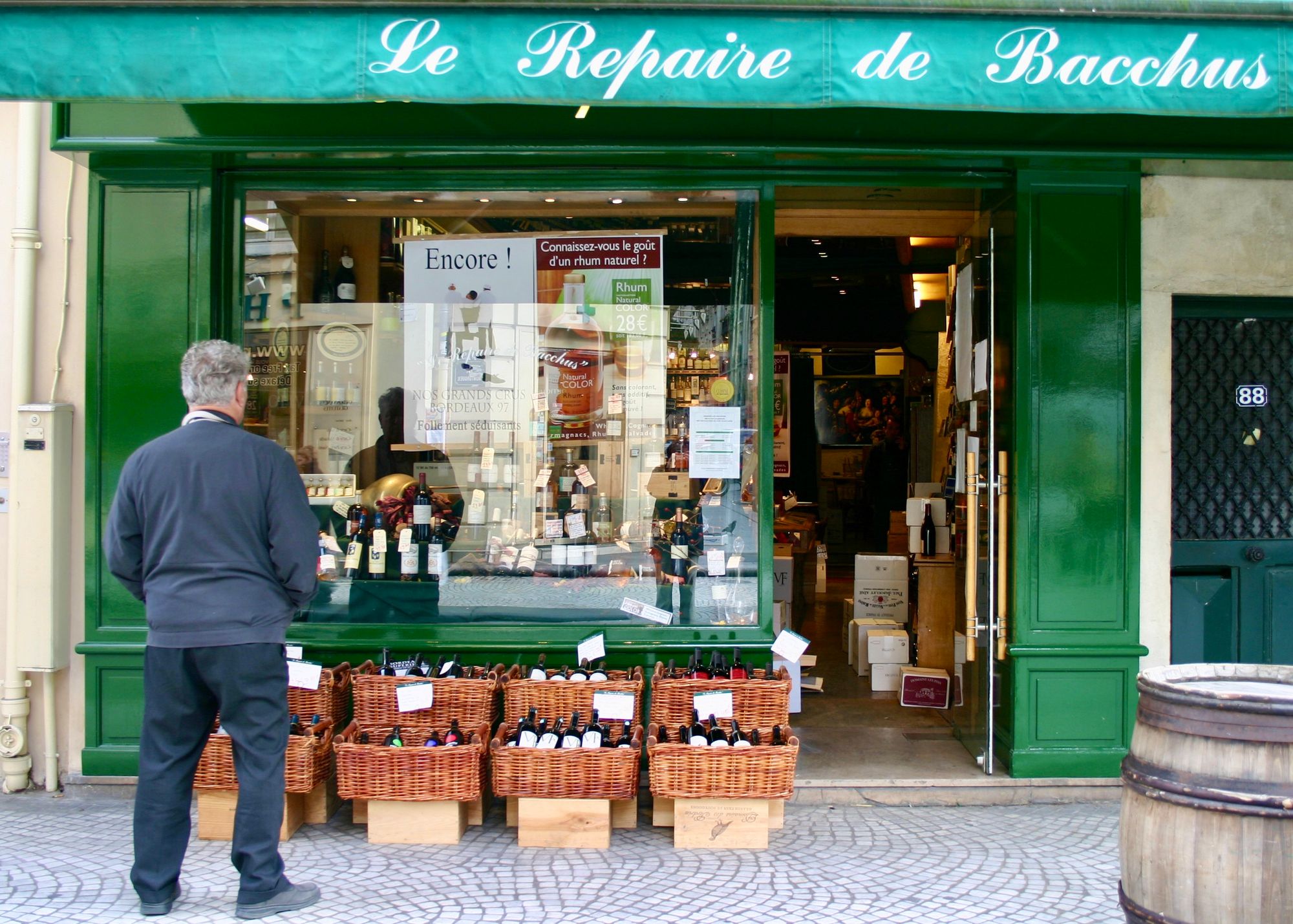
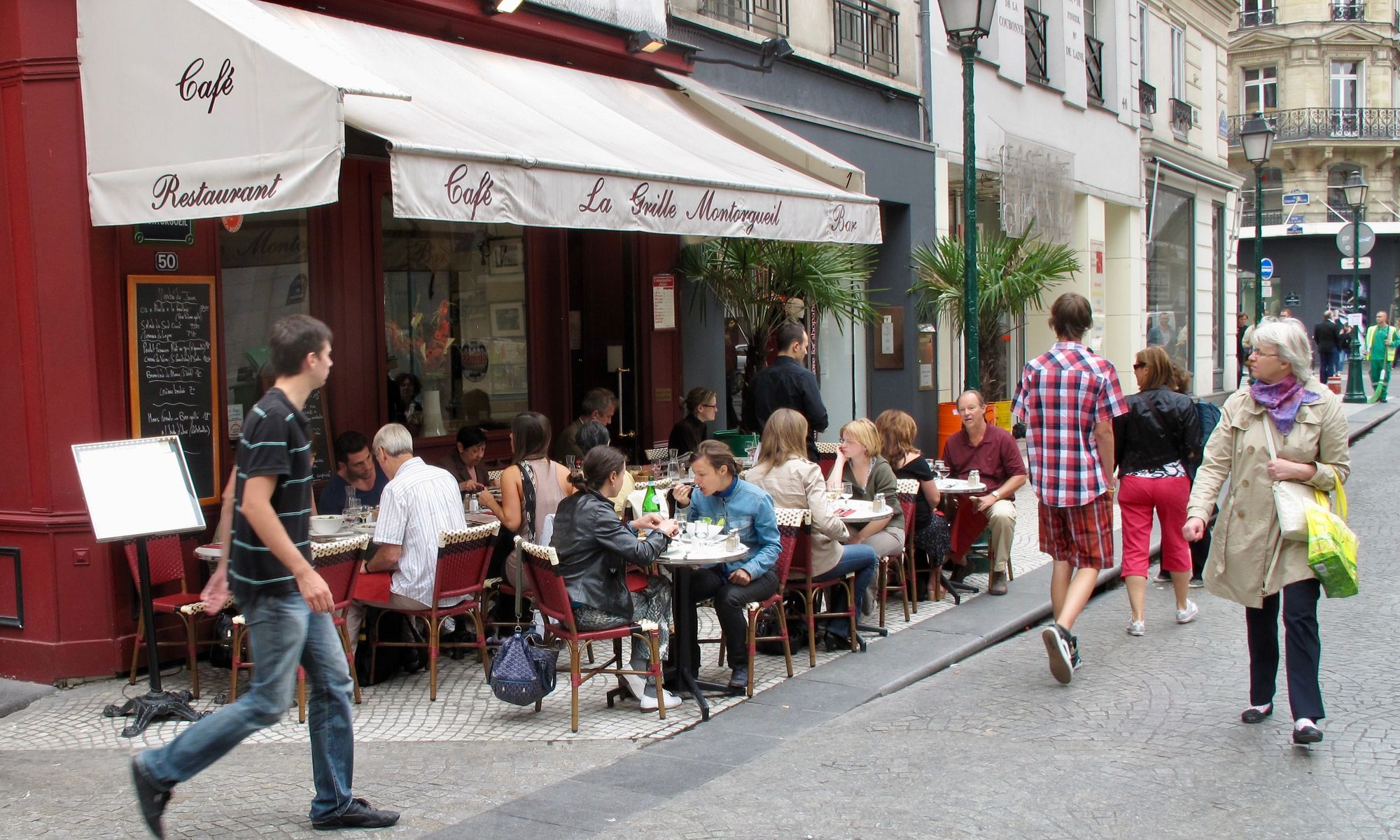
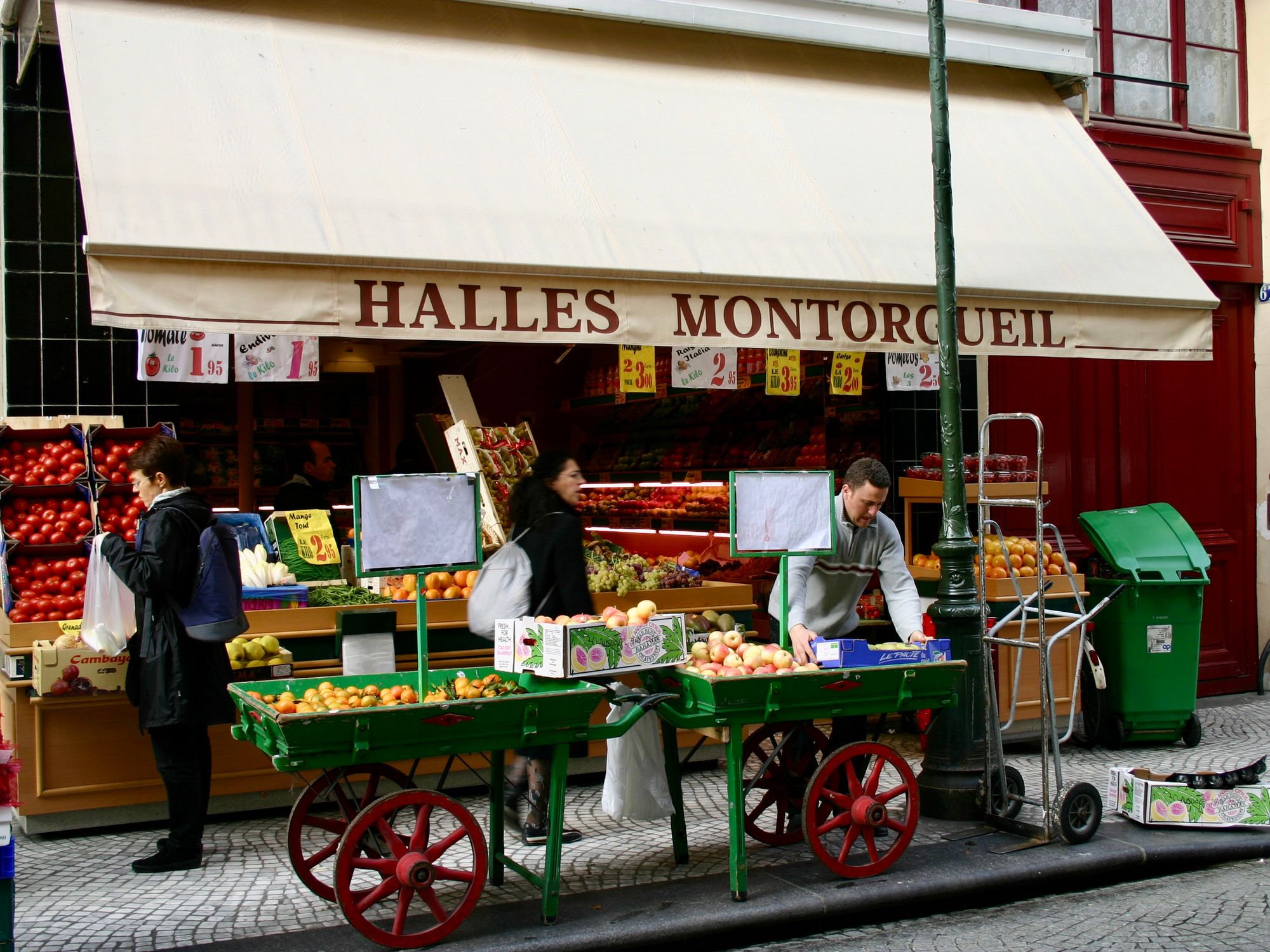
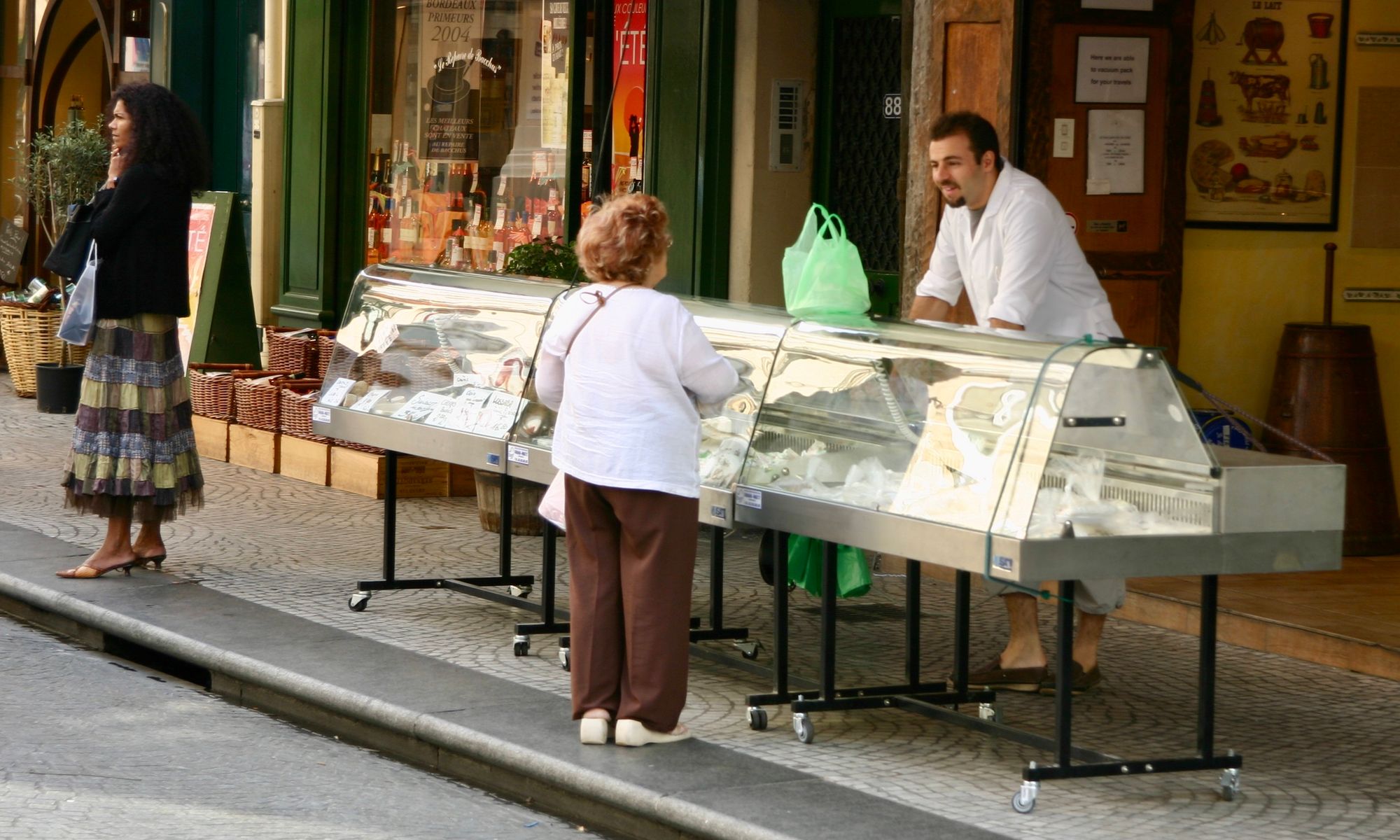
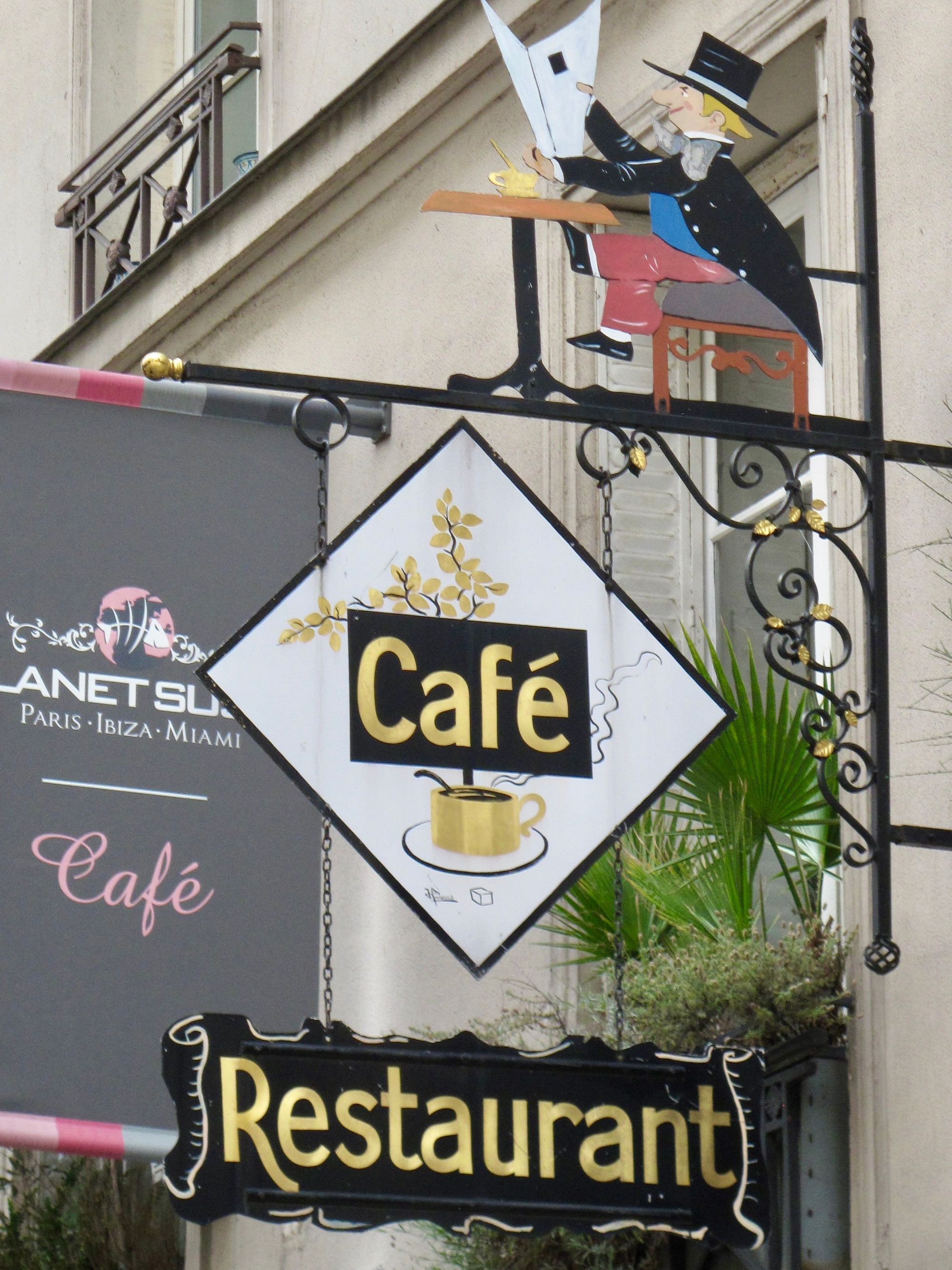
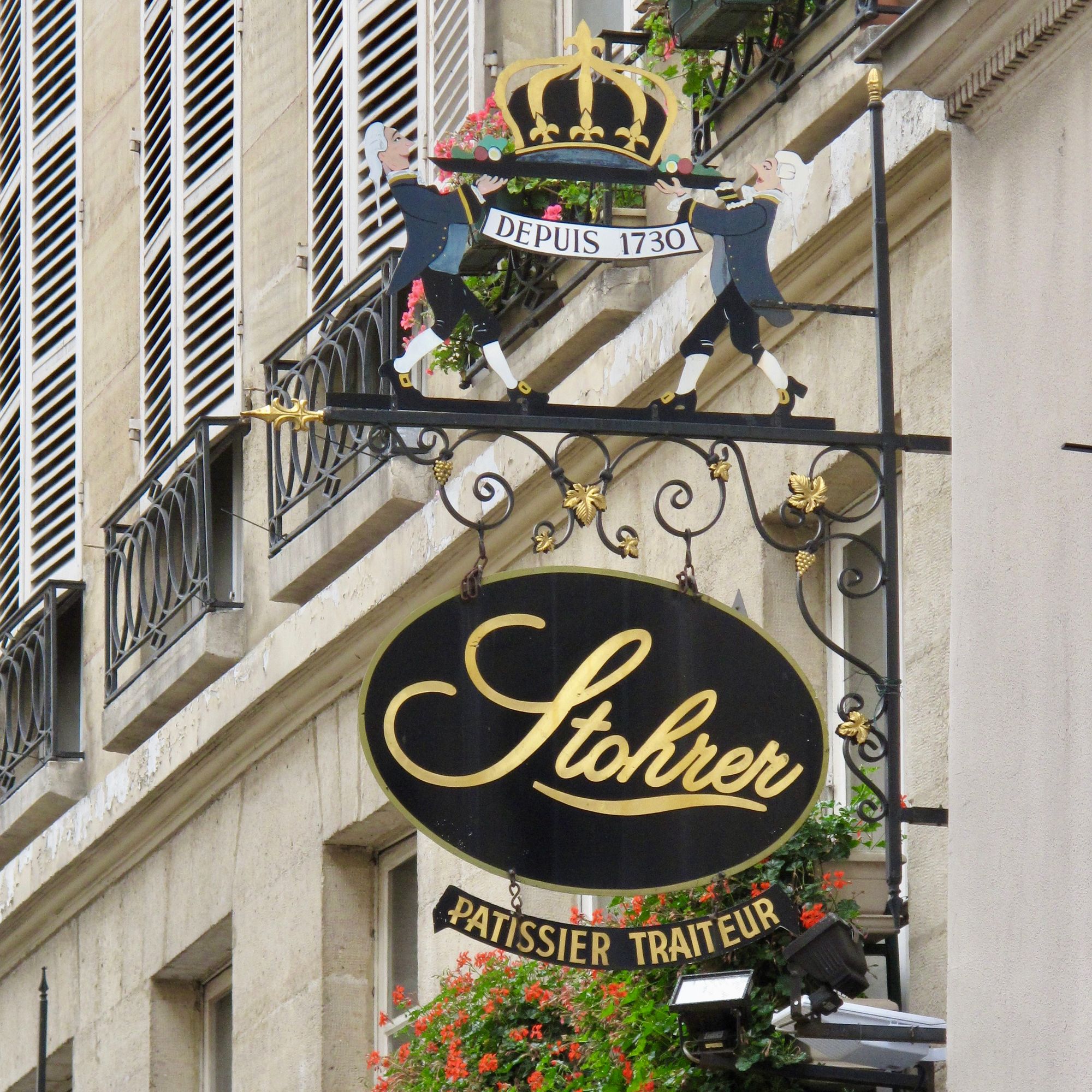
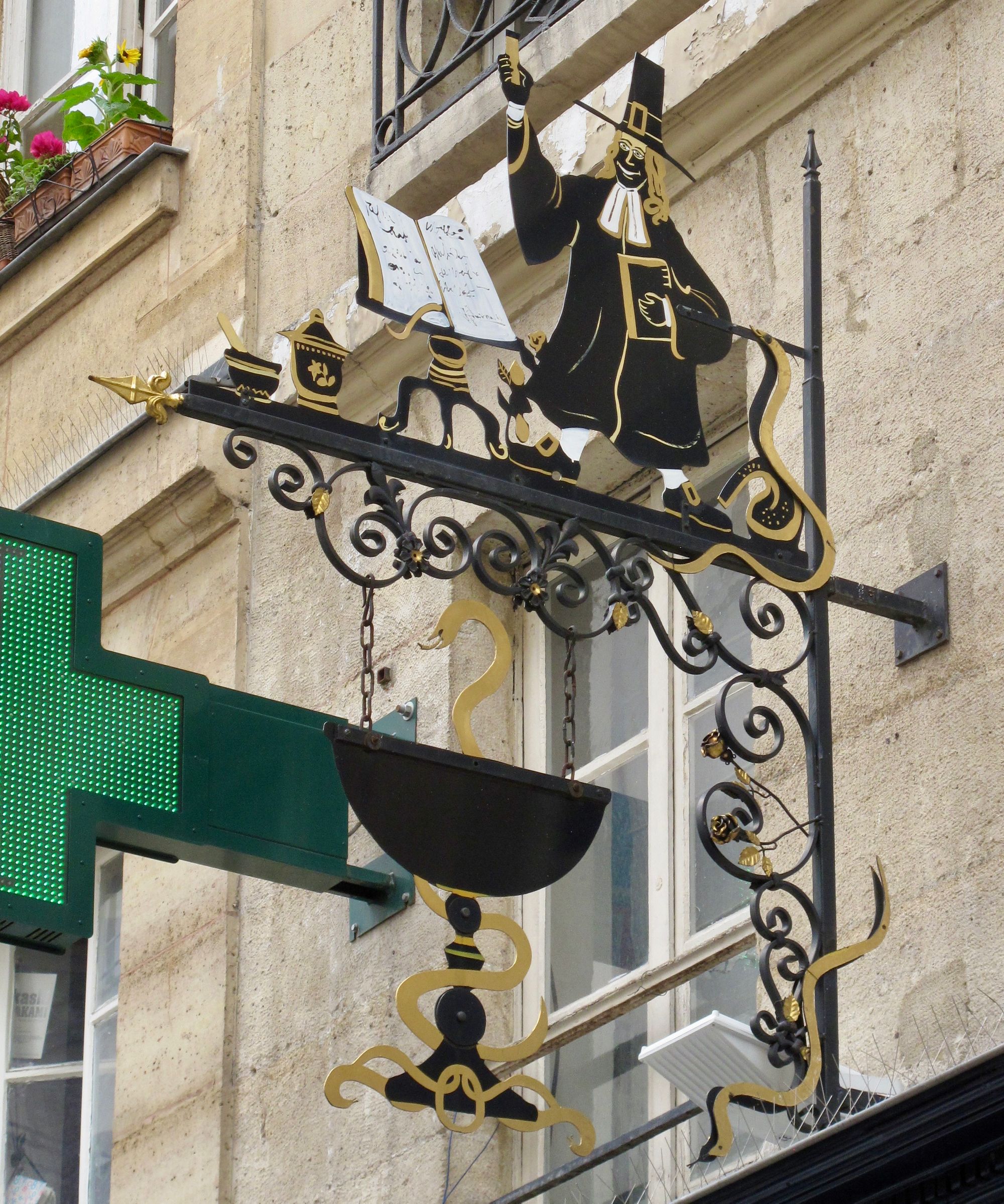
Istanbul: The "River of Life" Flows through Historic Areas
William H. Whyte described streets as the "river of life," a phrase that vividly captures the spirit of sociability that infuses Turkey's largest city.
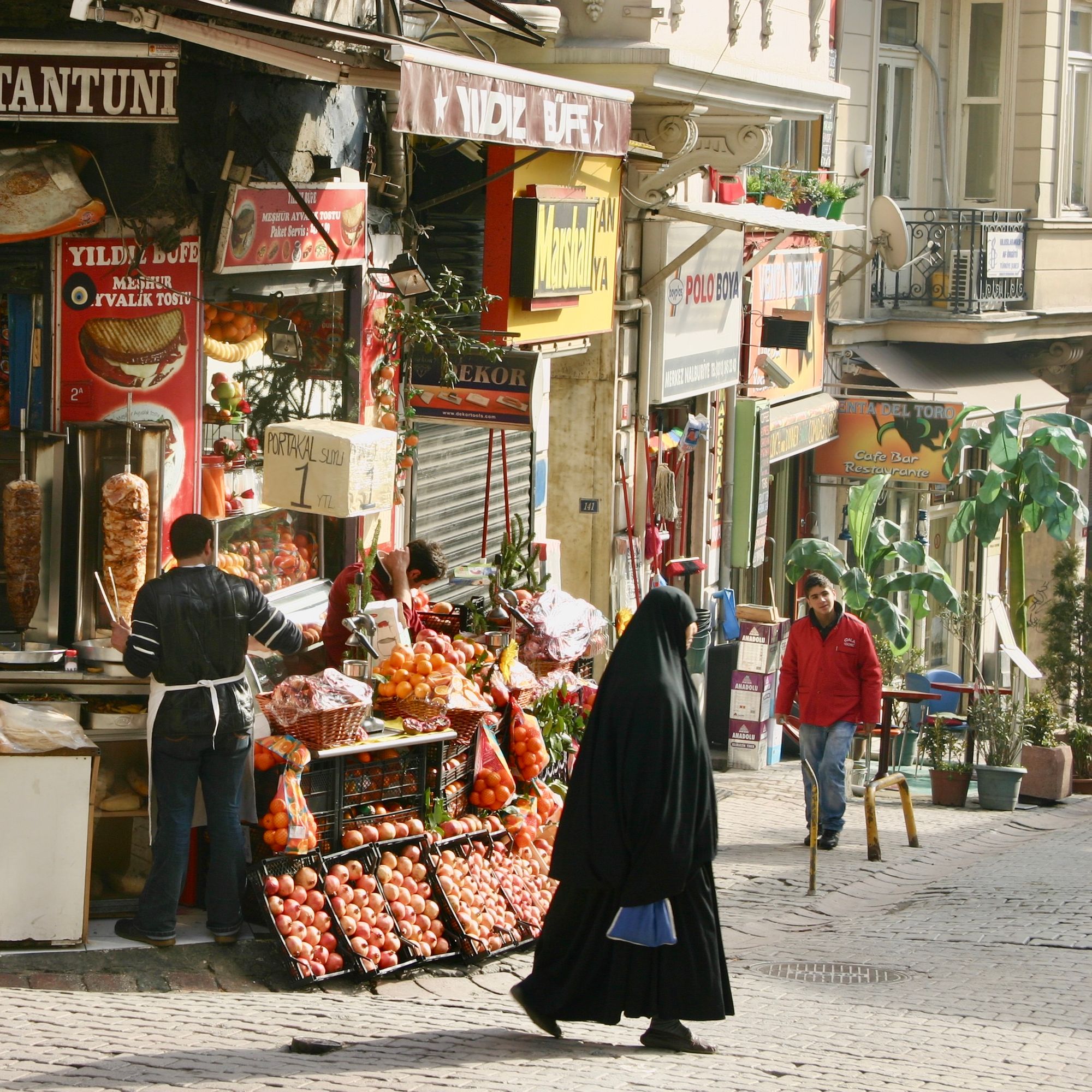
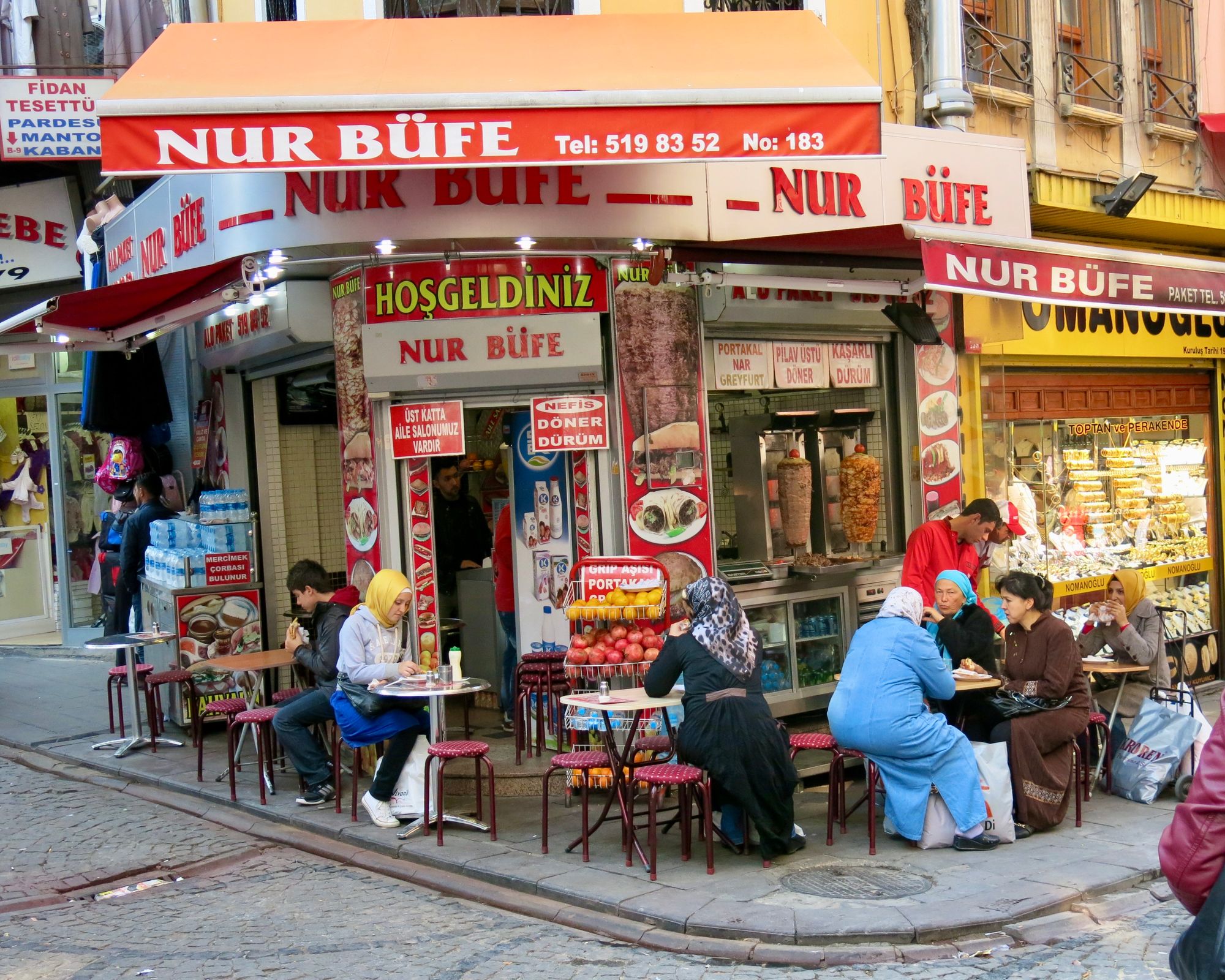
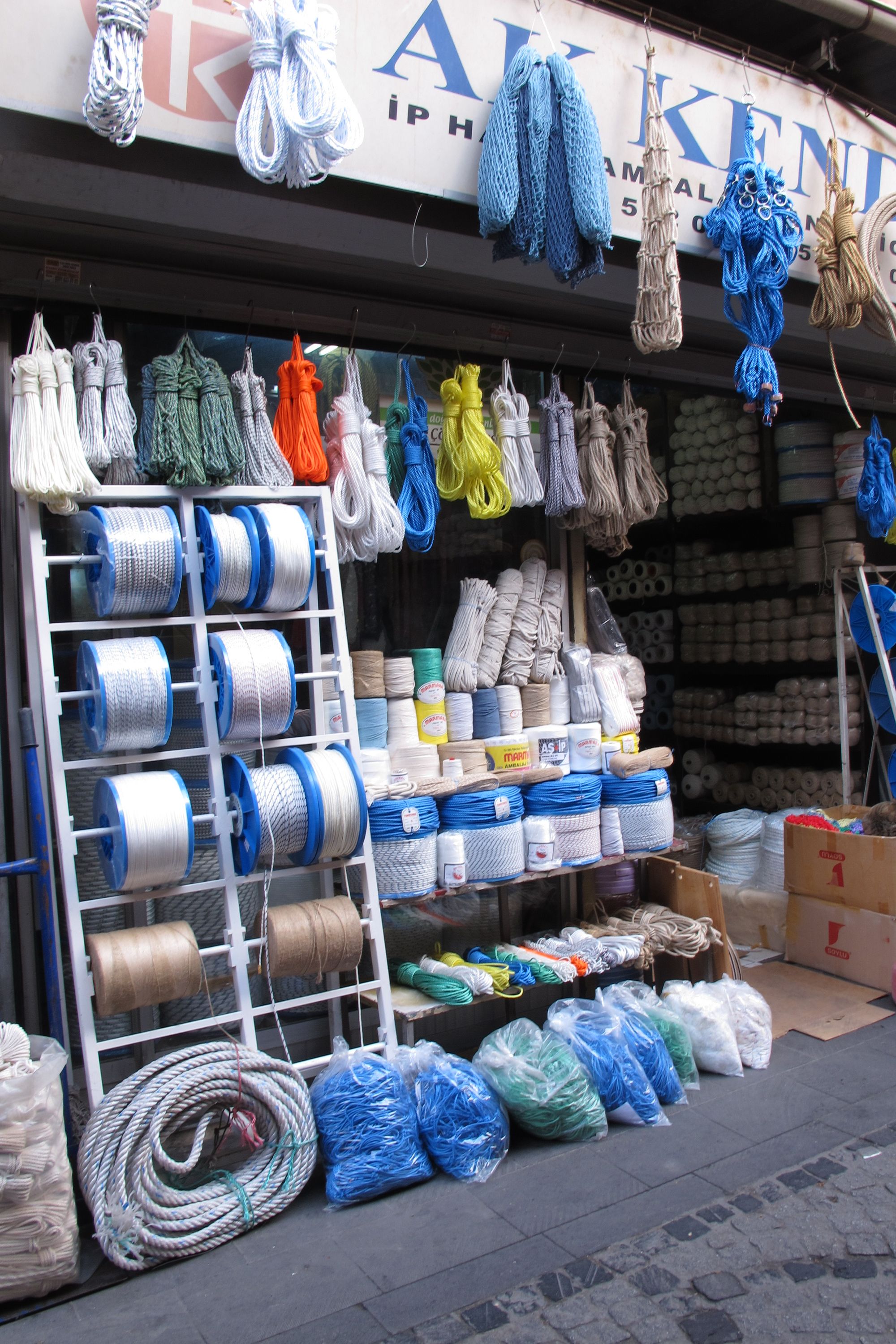
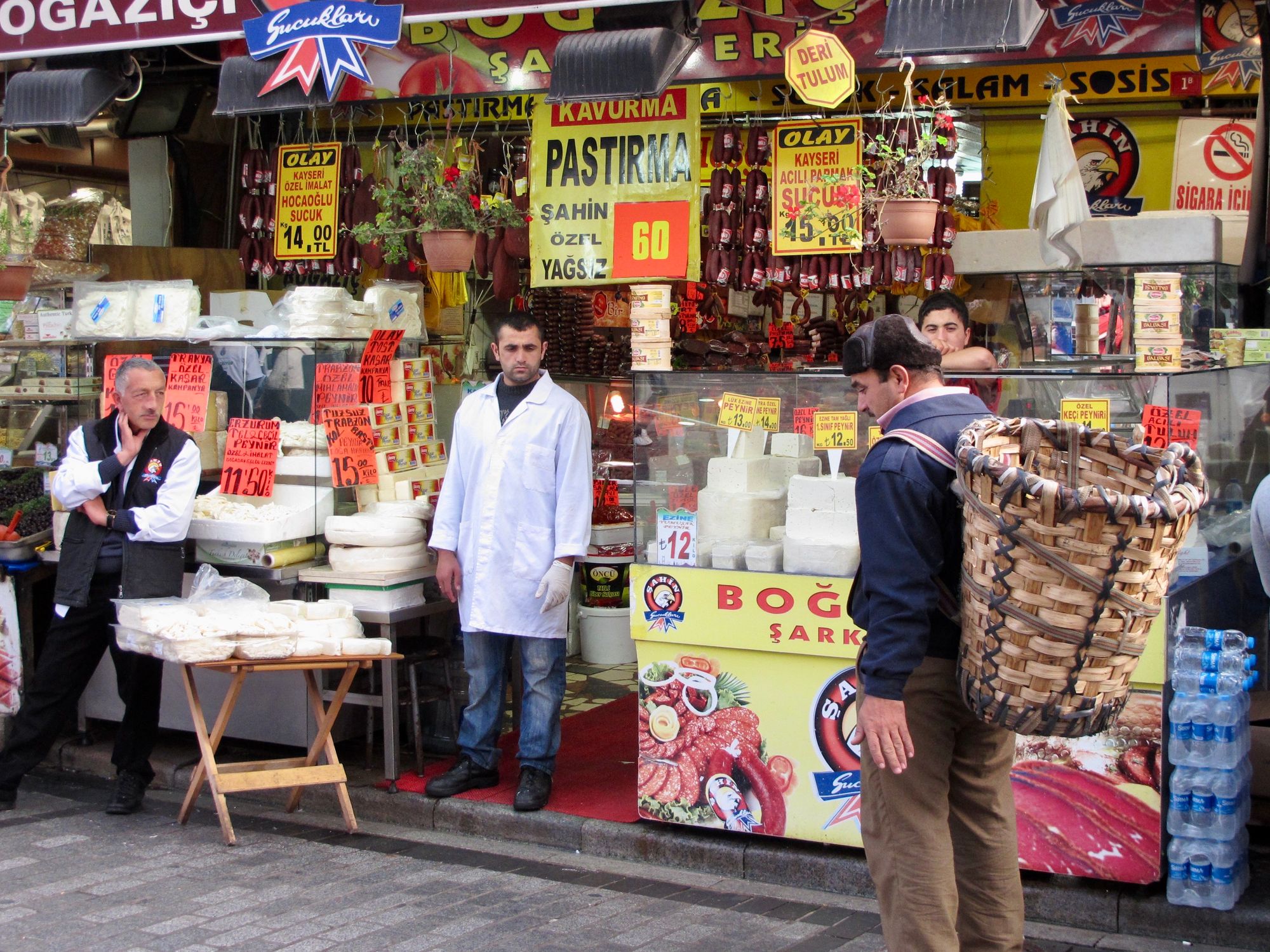
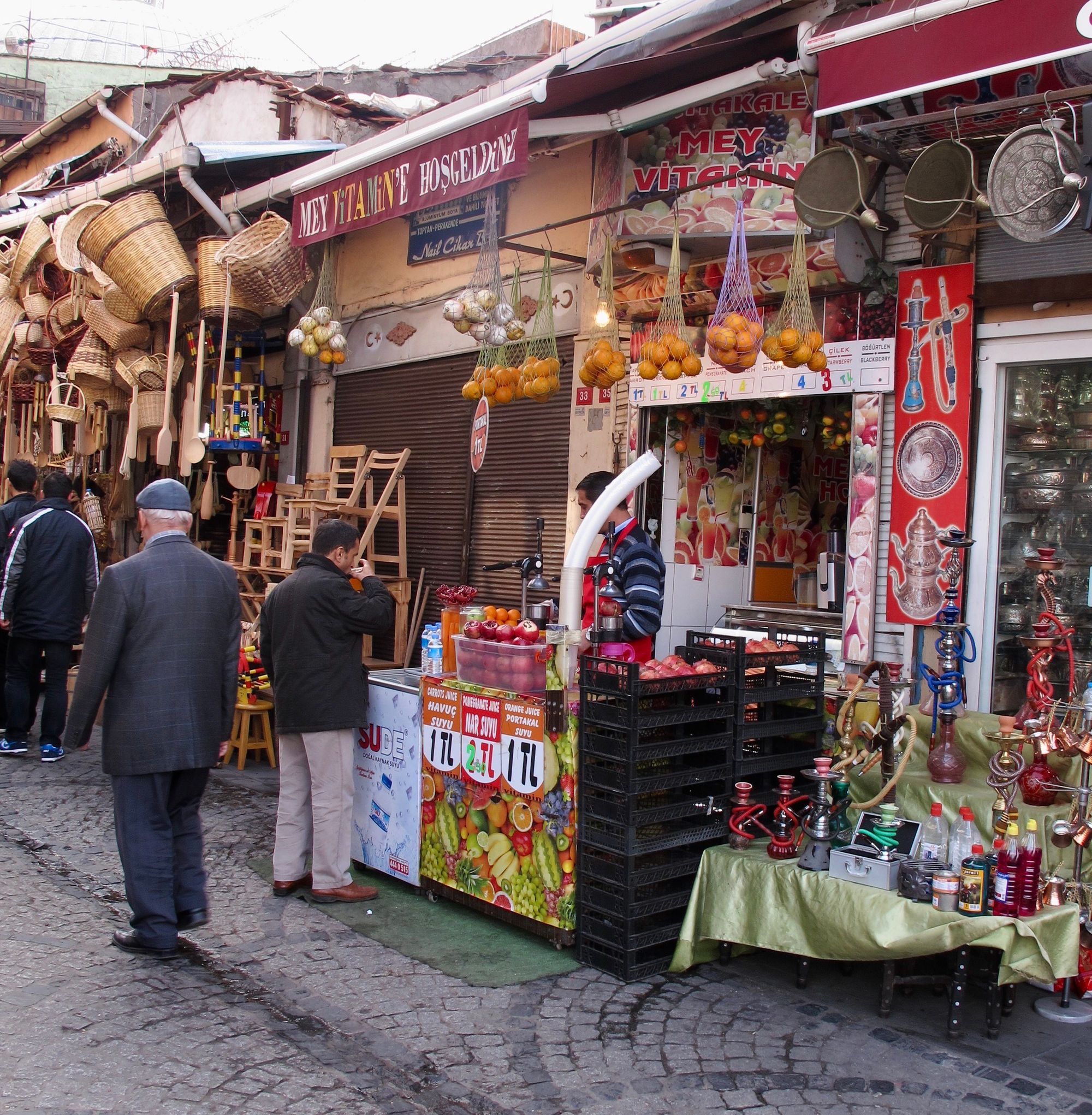
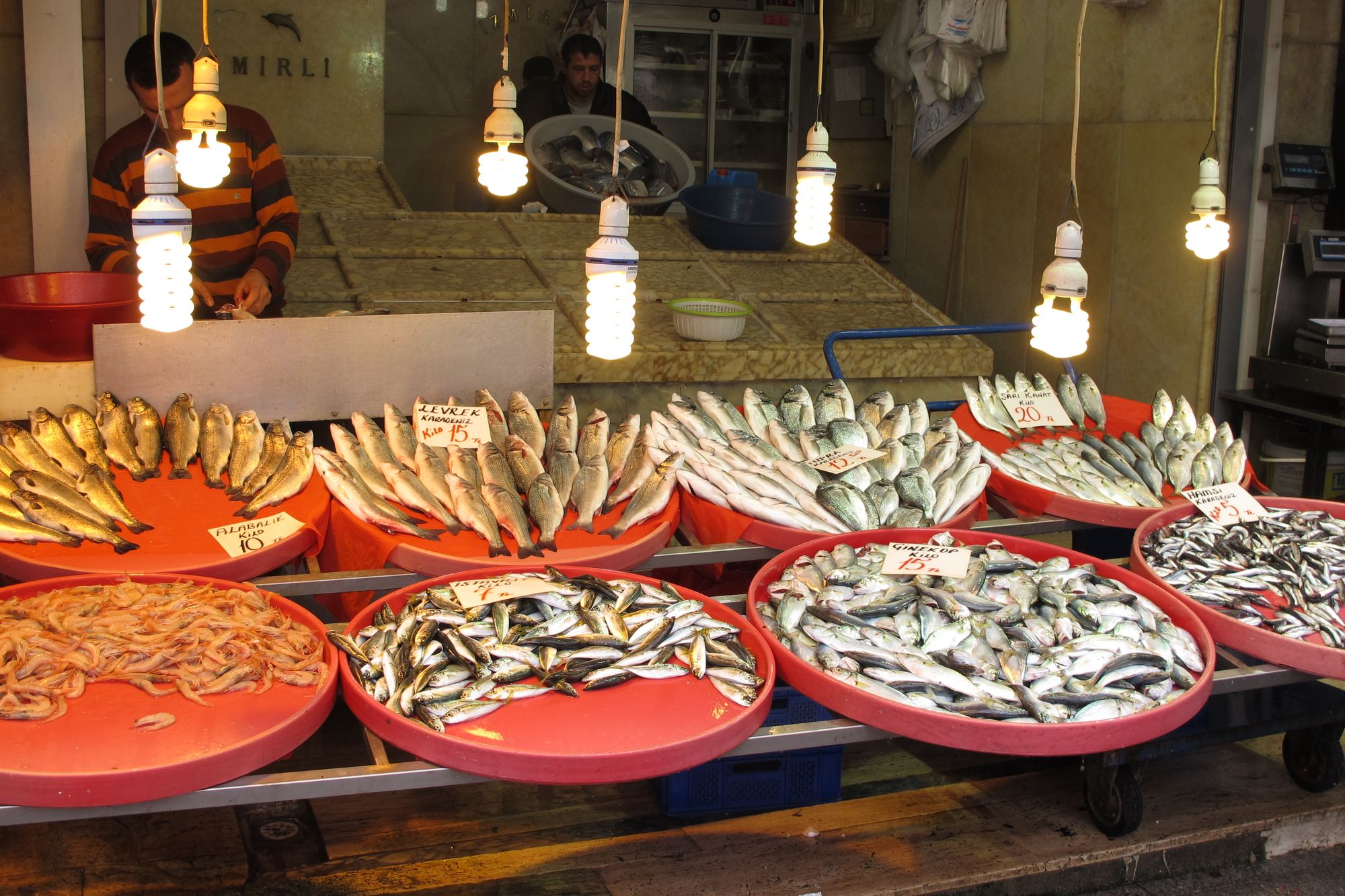
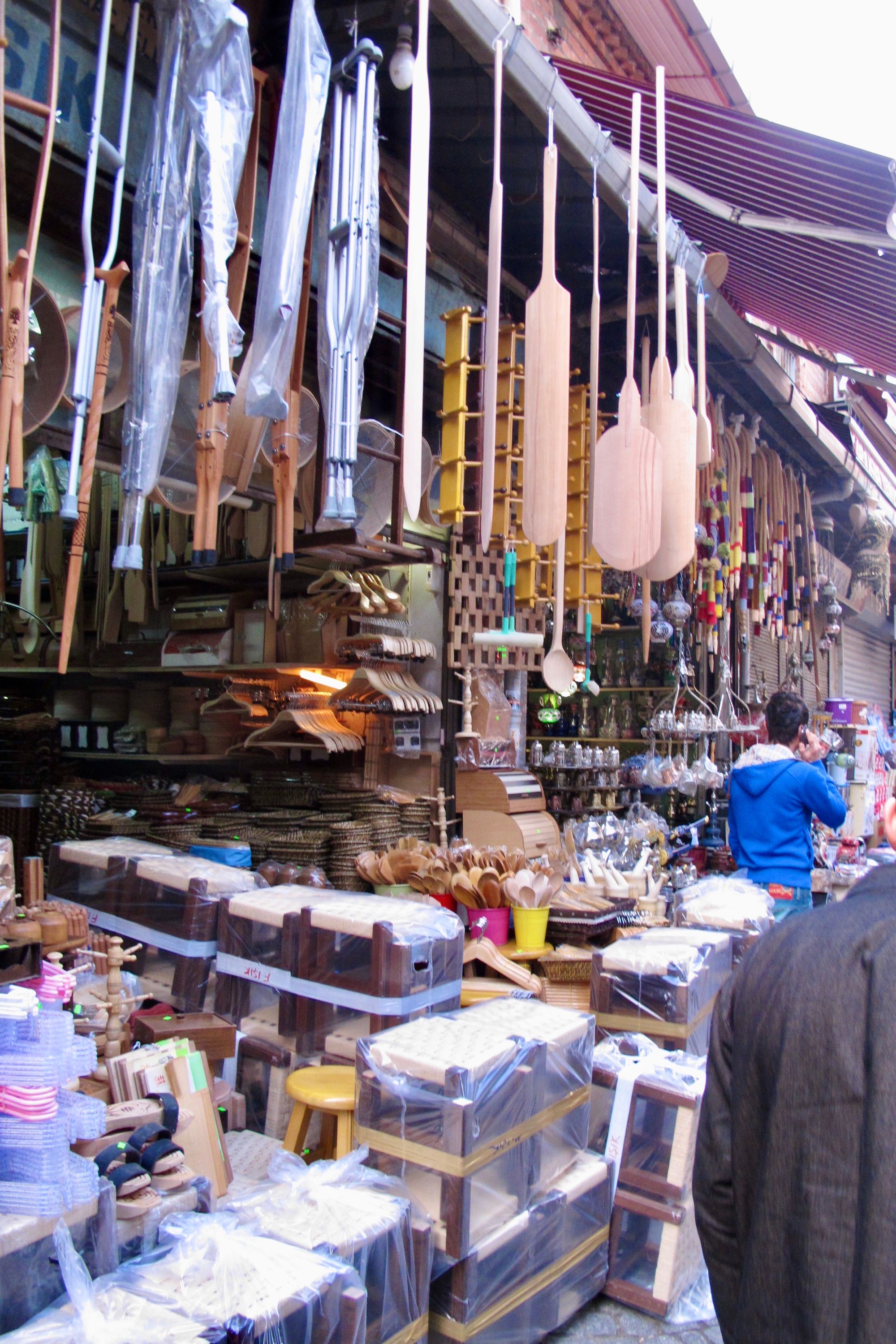
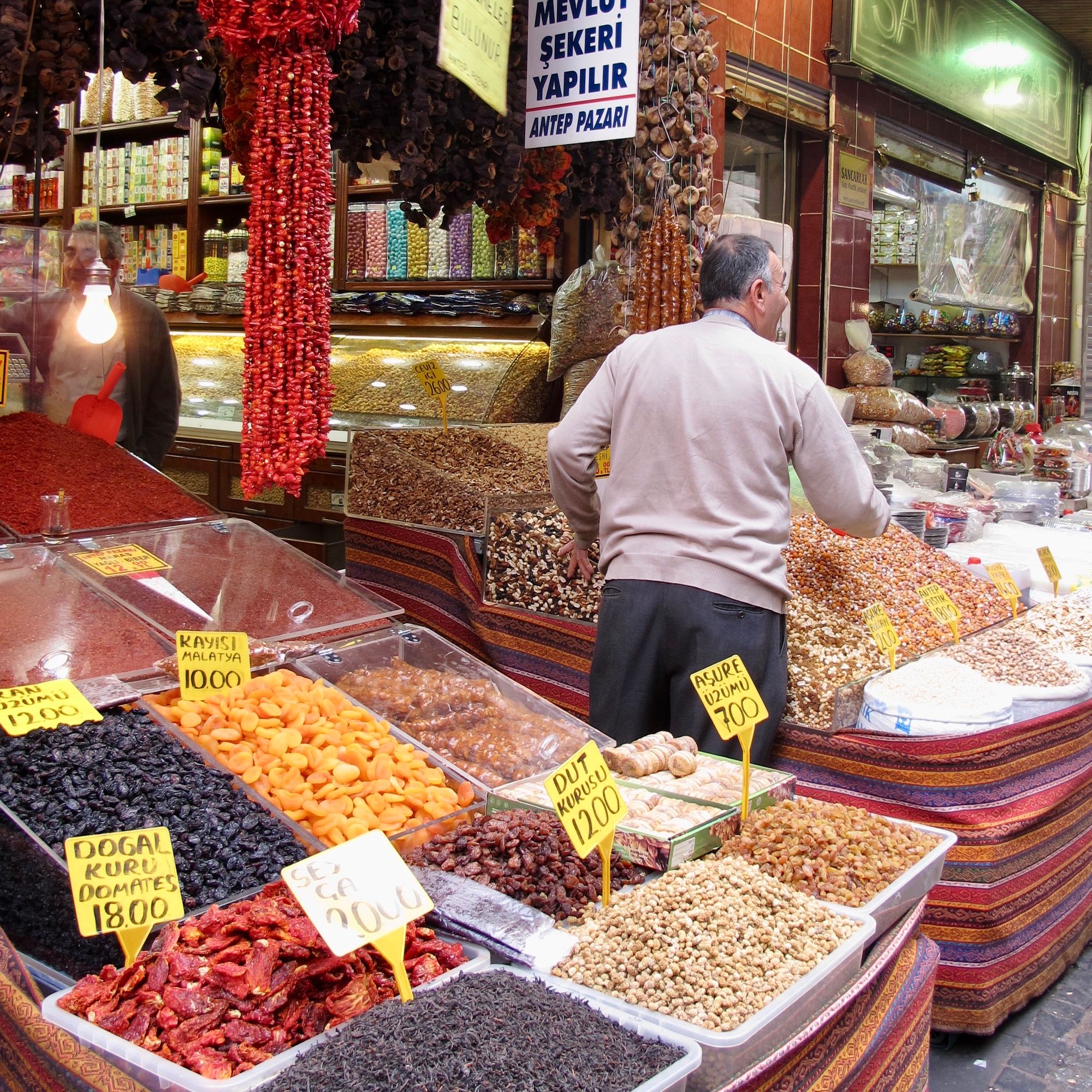
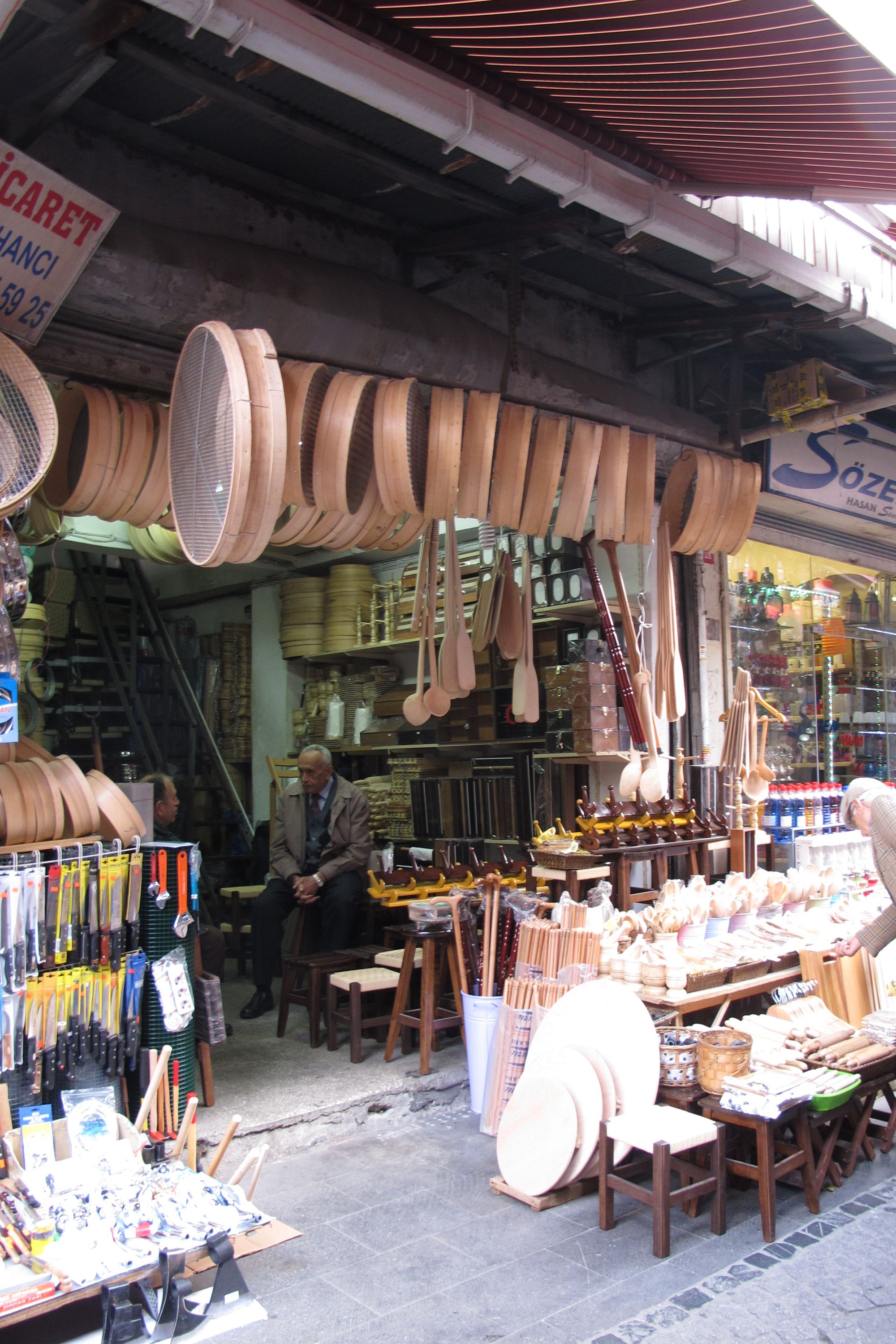
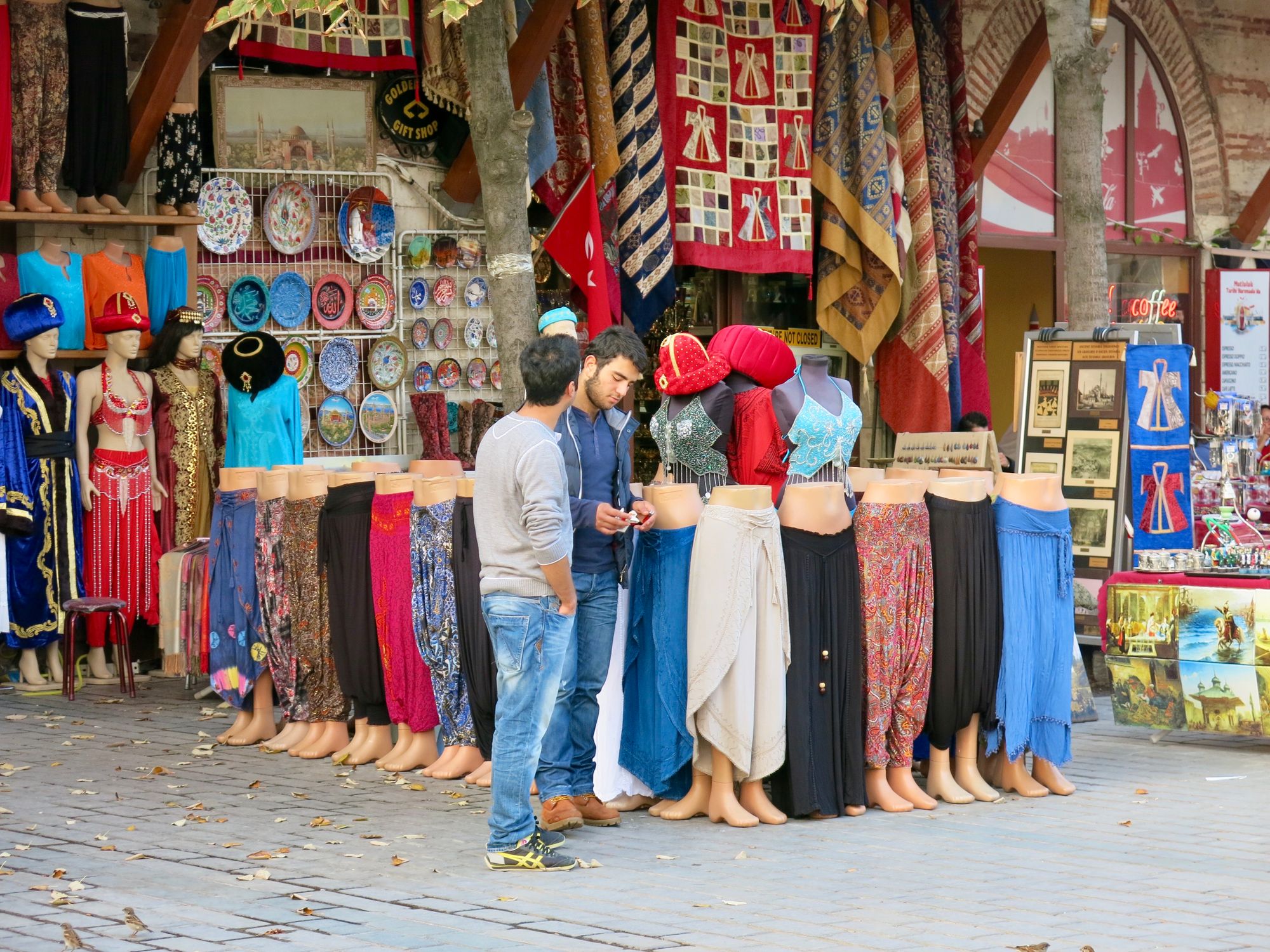
Istanbul is a city where one's senses are heightened by all the life on the streets
Balik Pazari. Galatasaray Fish Market Mainly sells fish, but also meats, cheeses sweet meats and vegetables. There are also restaurants on the side streets.
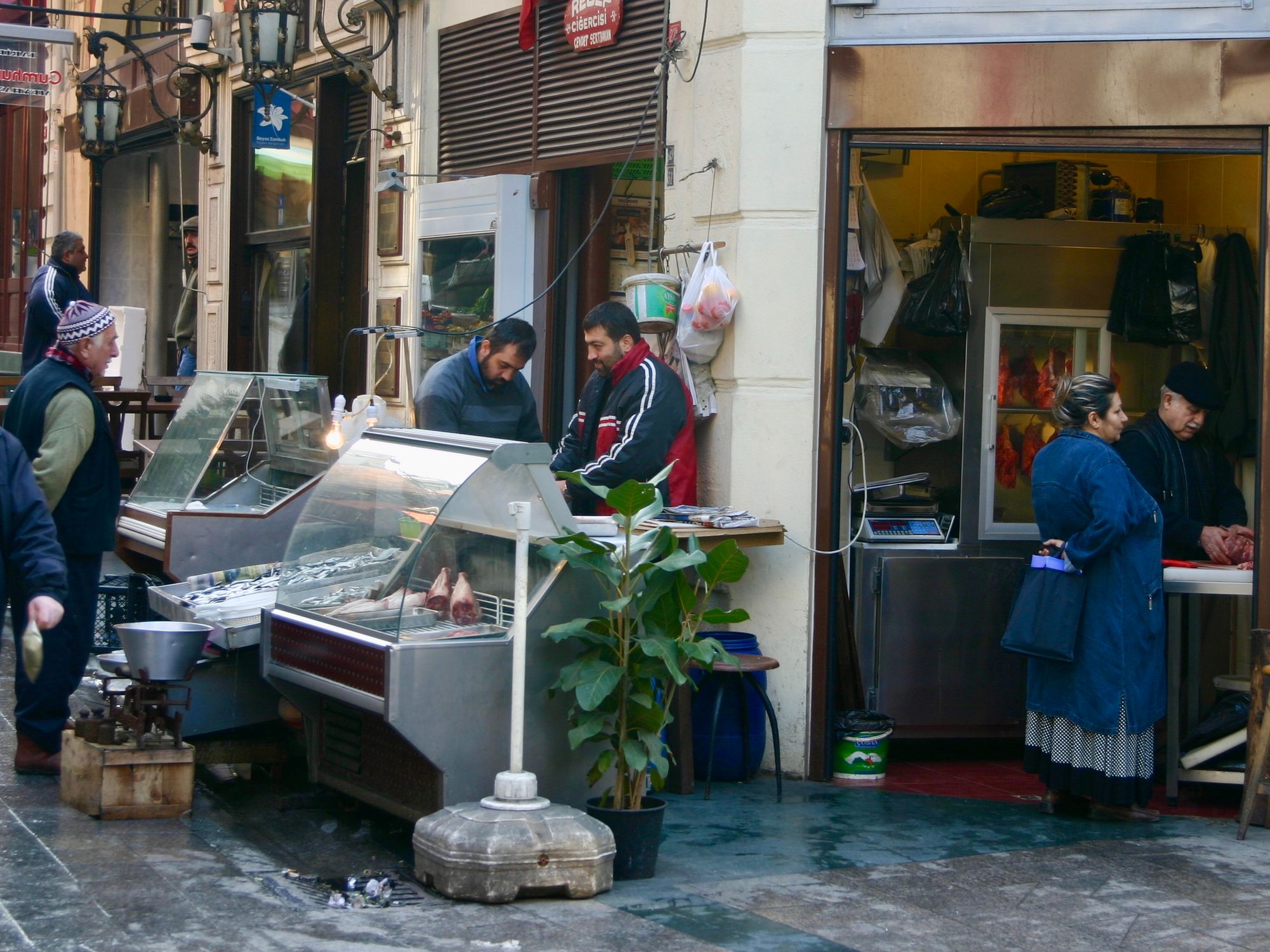
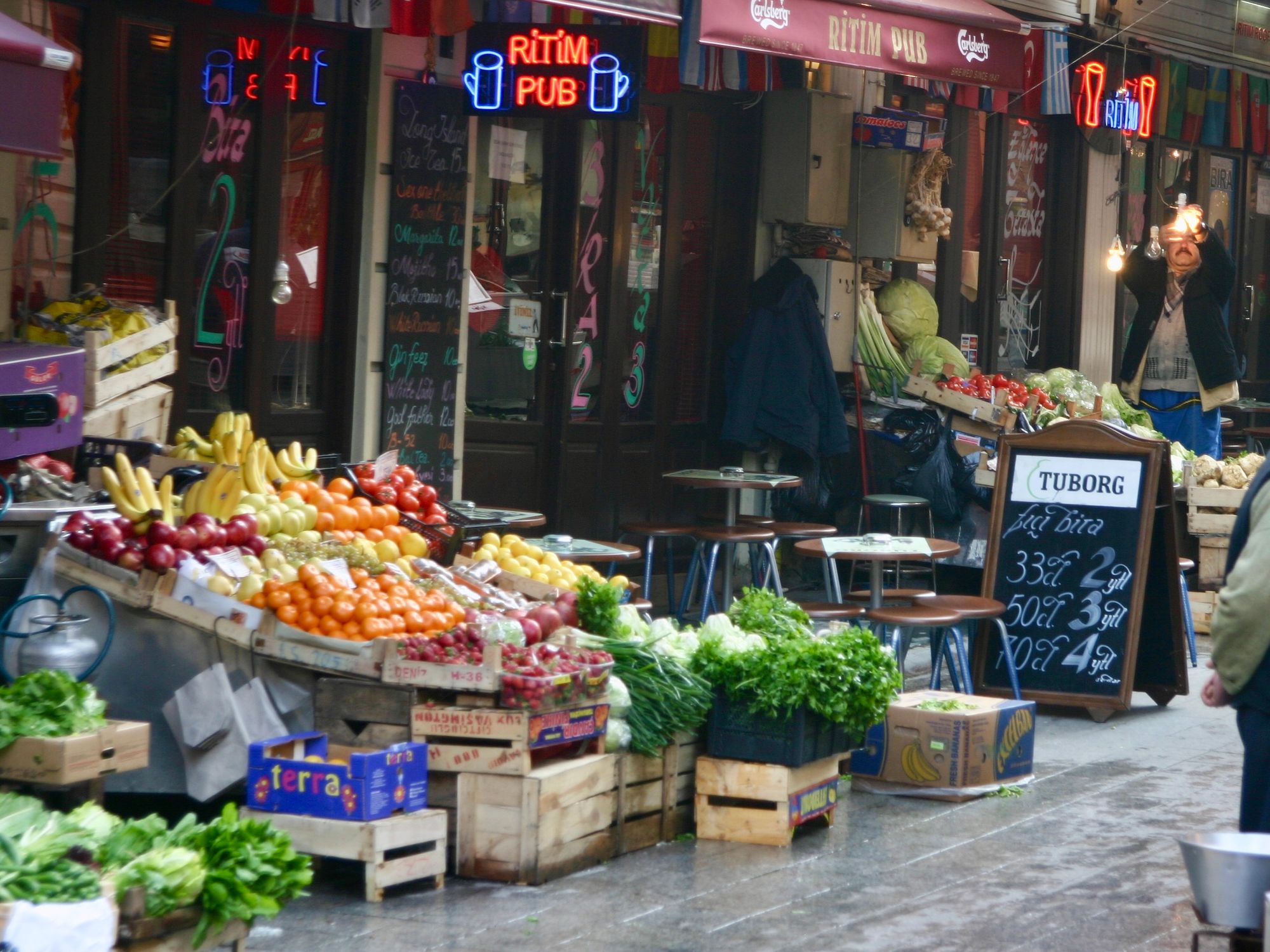
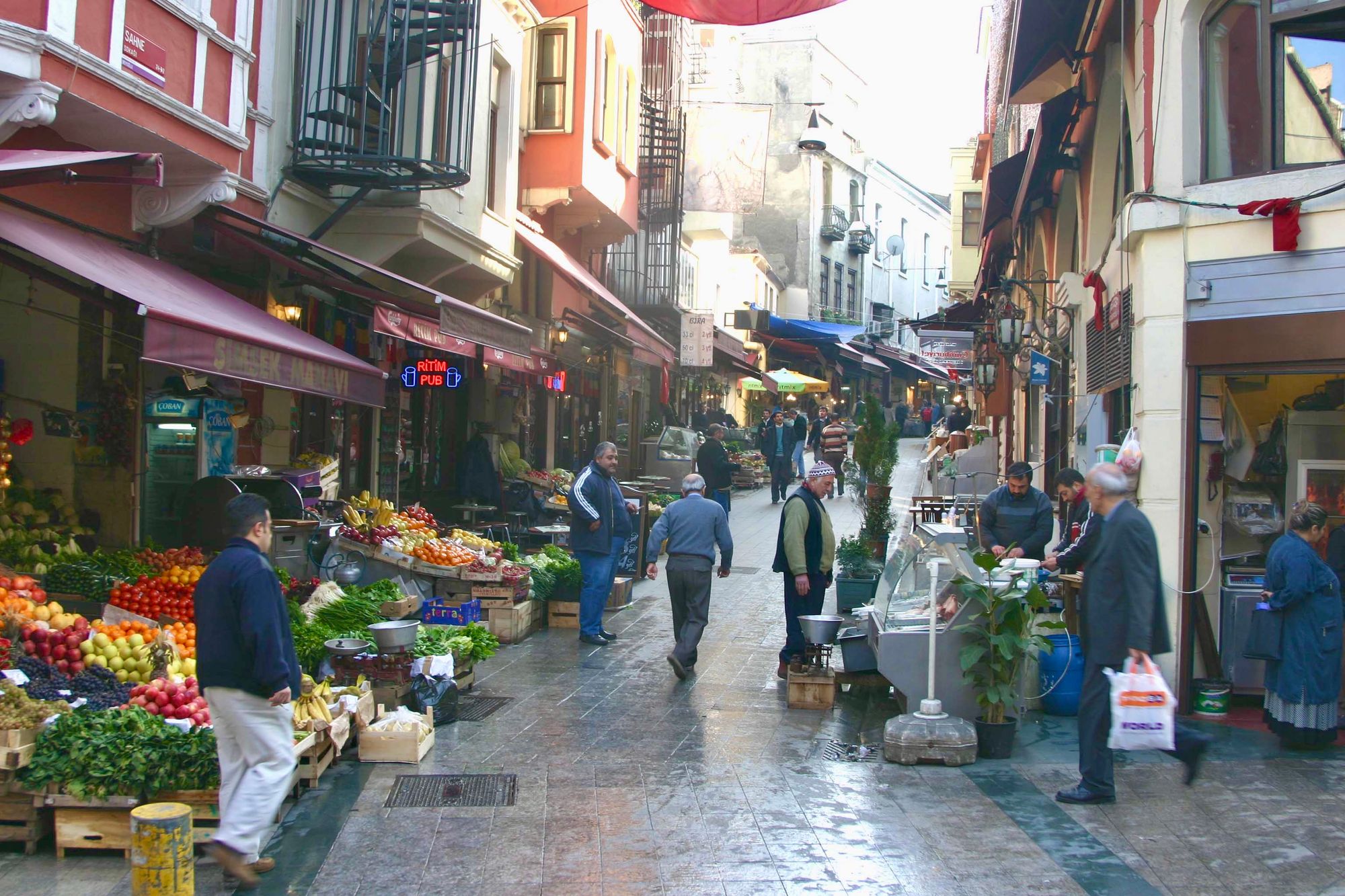
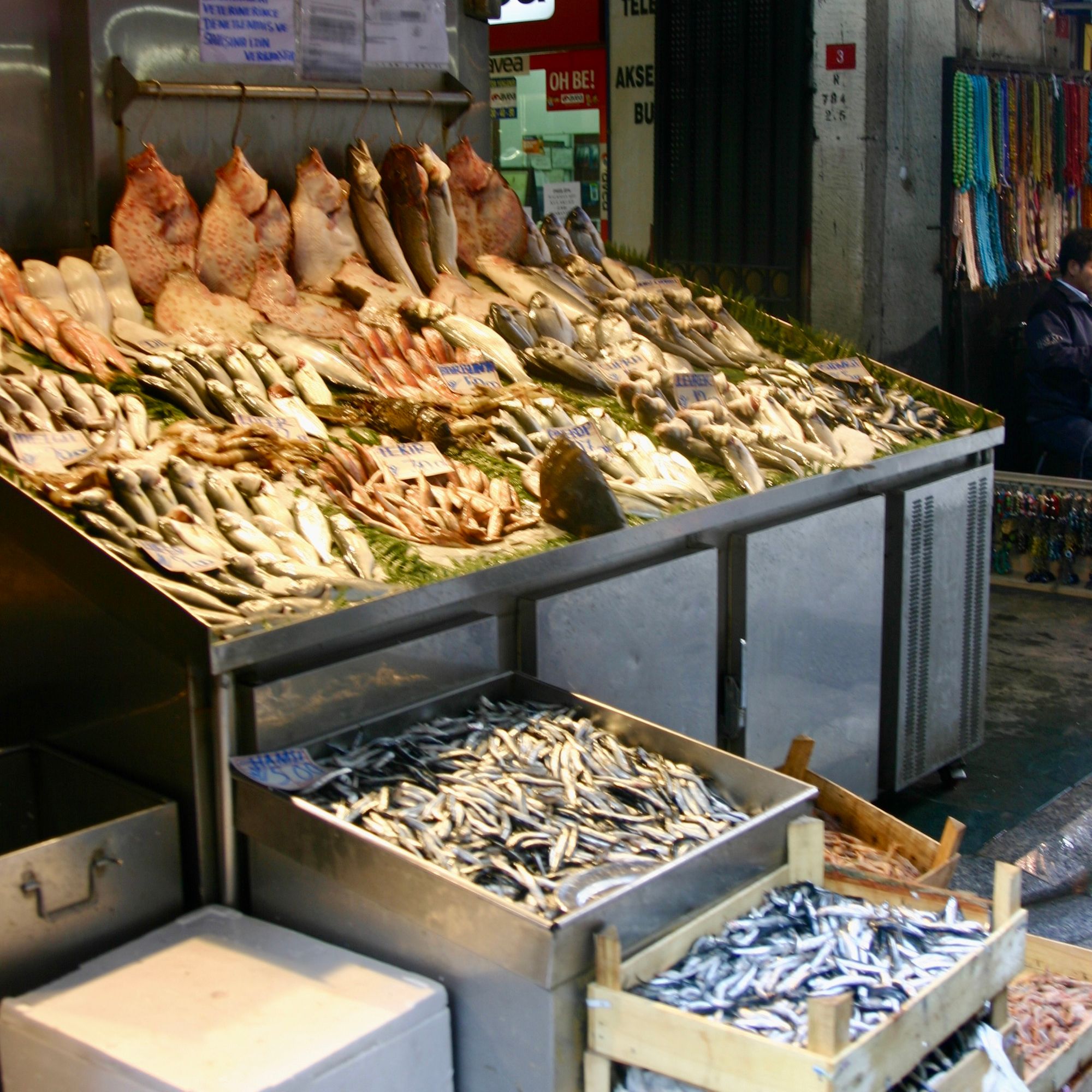
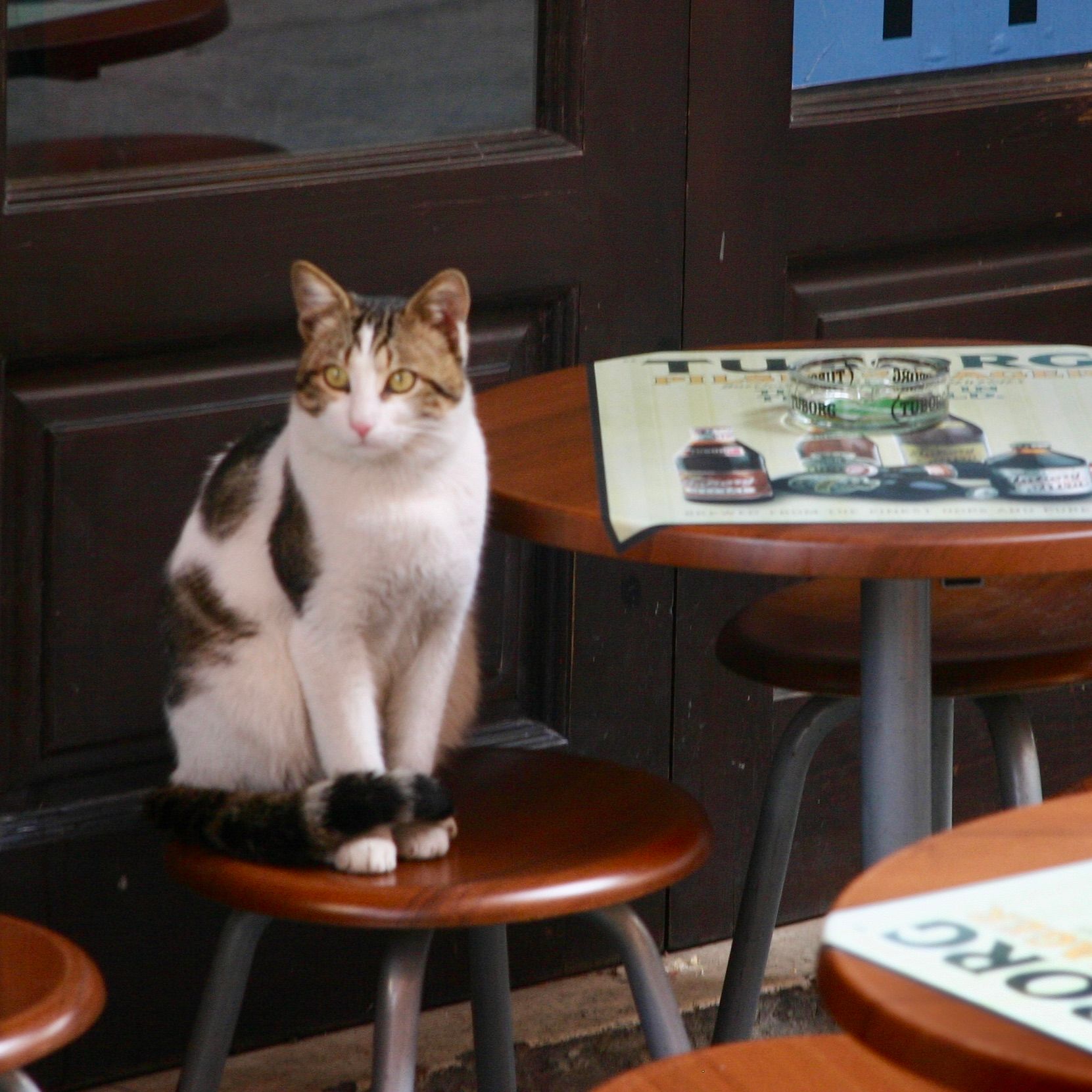
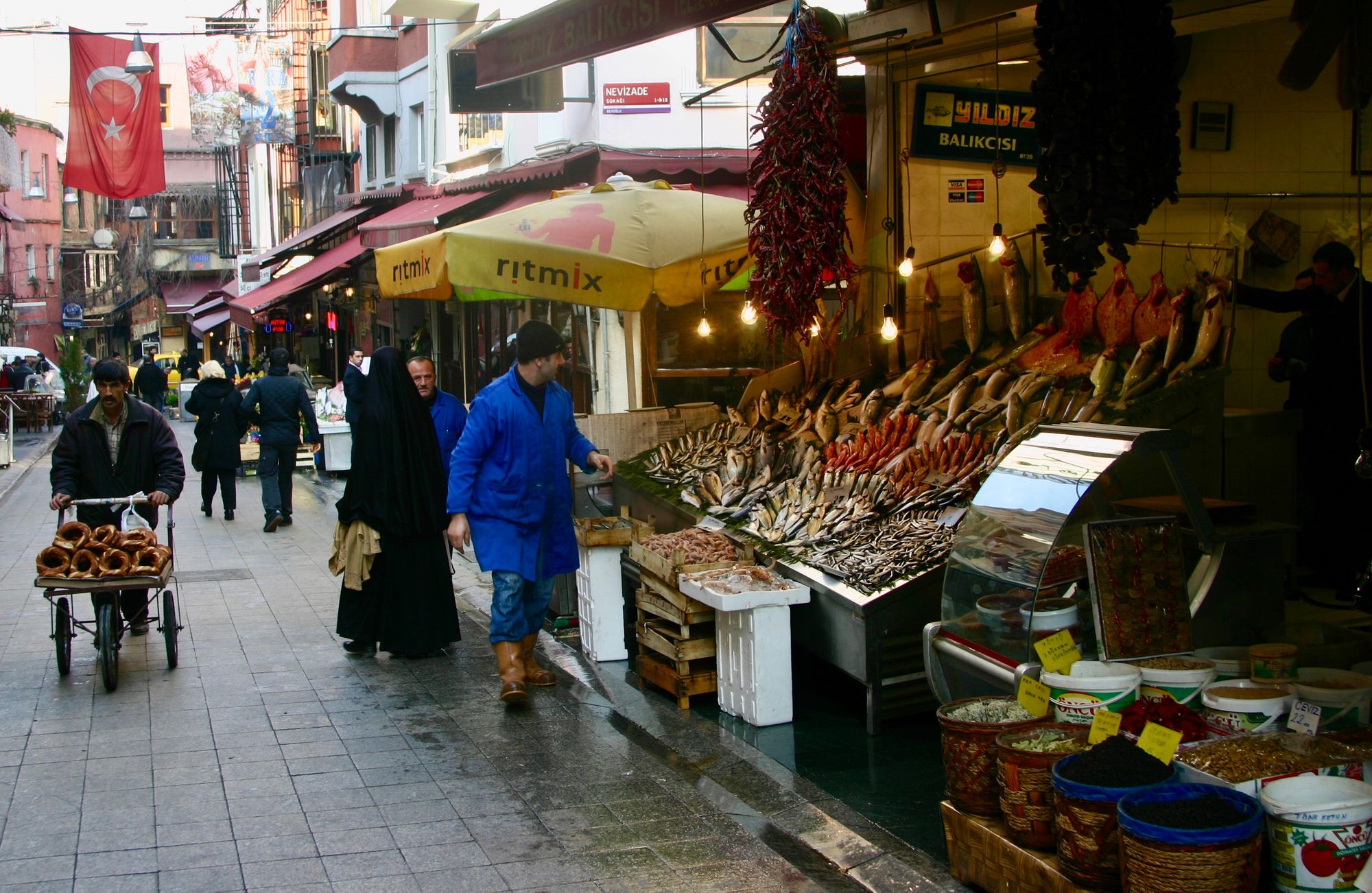

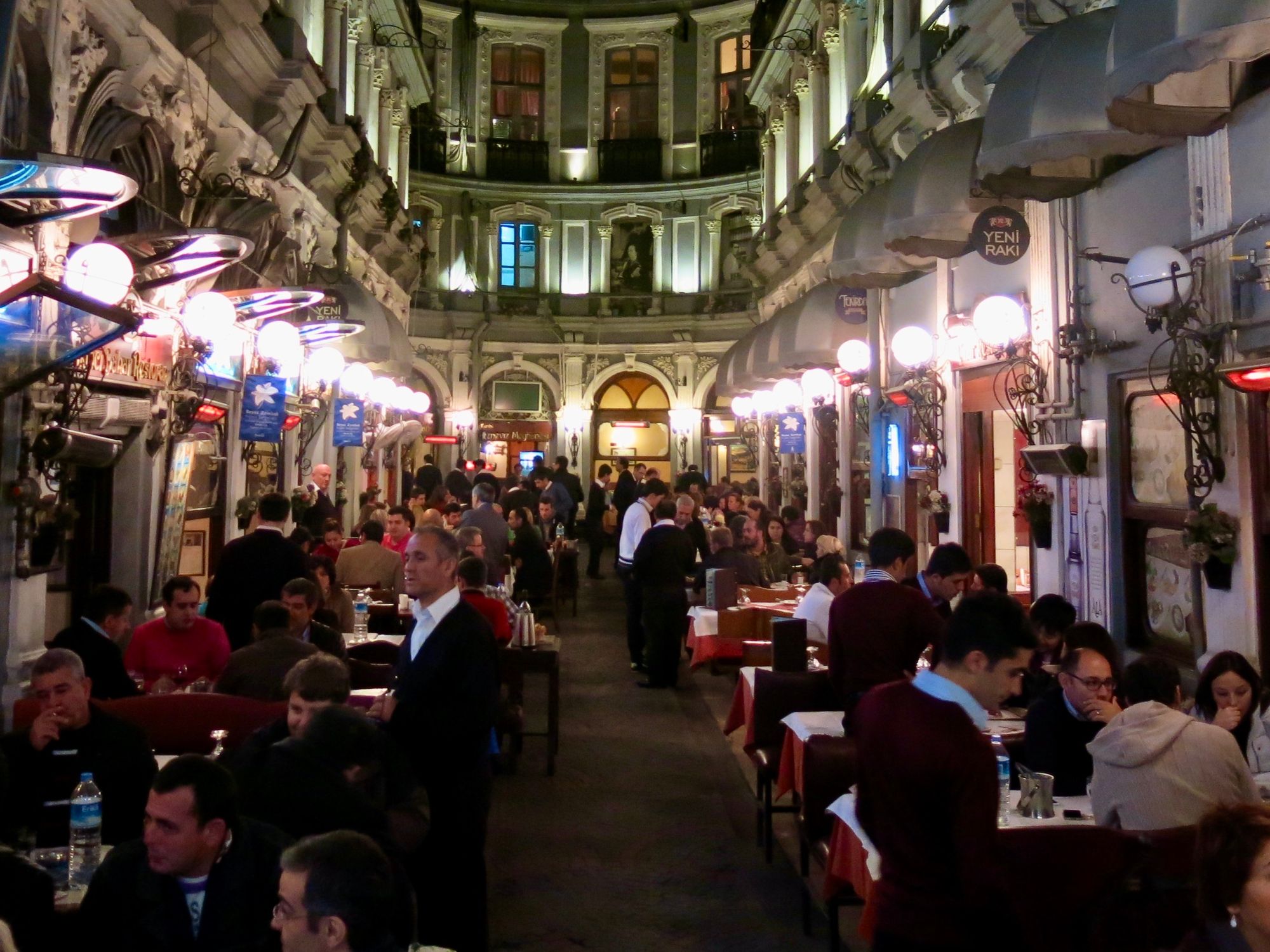
Balik Pazari market and restaurant
Istanbul's Grand Bazaar—One of the World's Oldest and Best Social Spaces
The Grand Bazaar is one of the largest and oldest covered markets in the world, with 61 covered streets and more than 4000 shops. There are five major gates (along with other streets) that connect the Grand Bazaar with other bazaars and areas that are all part of the district. The shops in the market include textiles and carpets, countless jewelry shops, spices, souvenir stands, and cafes, alongside fountains, historic artworks, a series of courtyards. The rooftops of the Grand Bazaar have cafes, restaurants, toilets, banks, a post office, police station, and a mosque. As the center of Istanbul's commercial activity, the social activity that happens therein only strengthens its role as a hub.
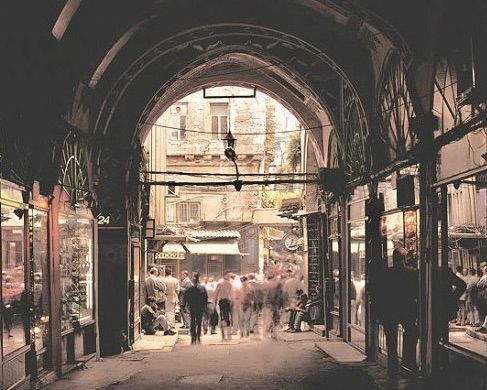
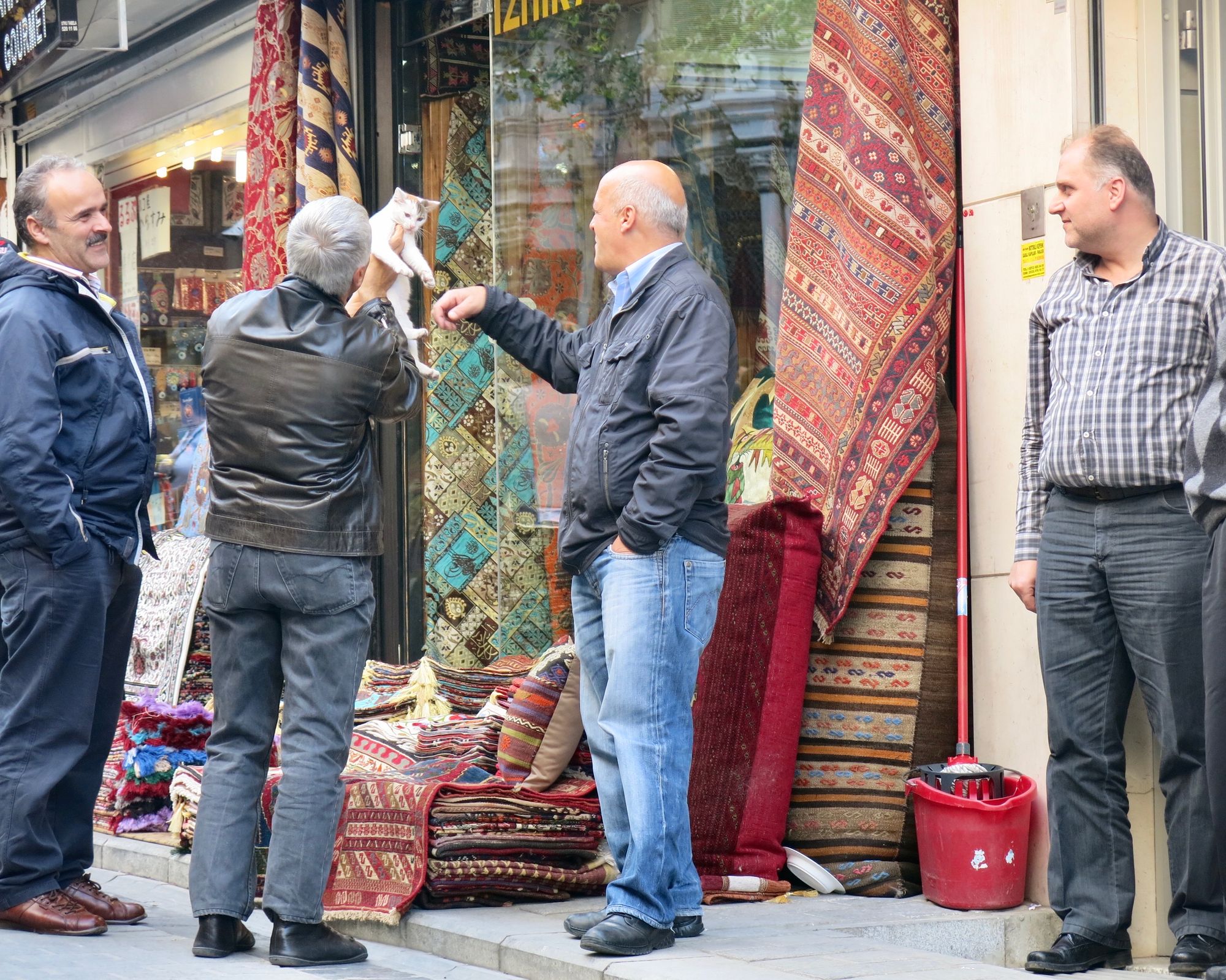
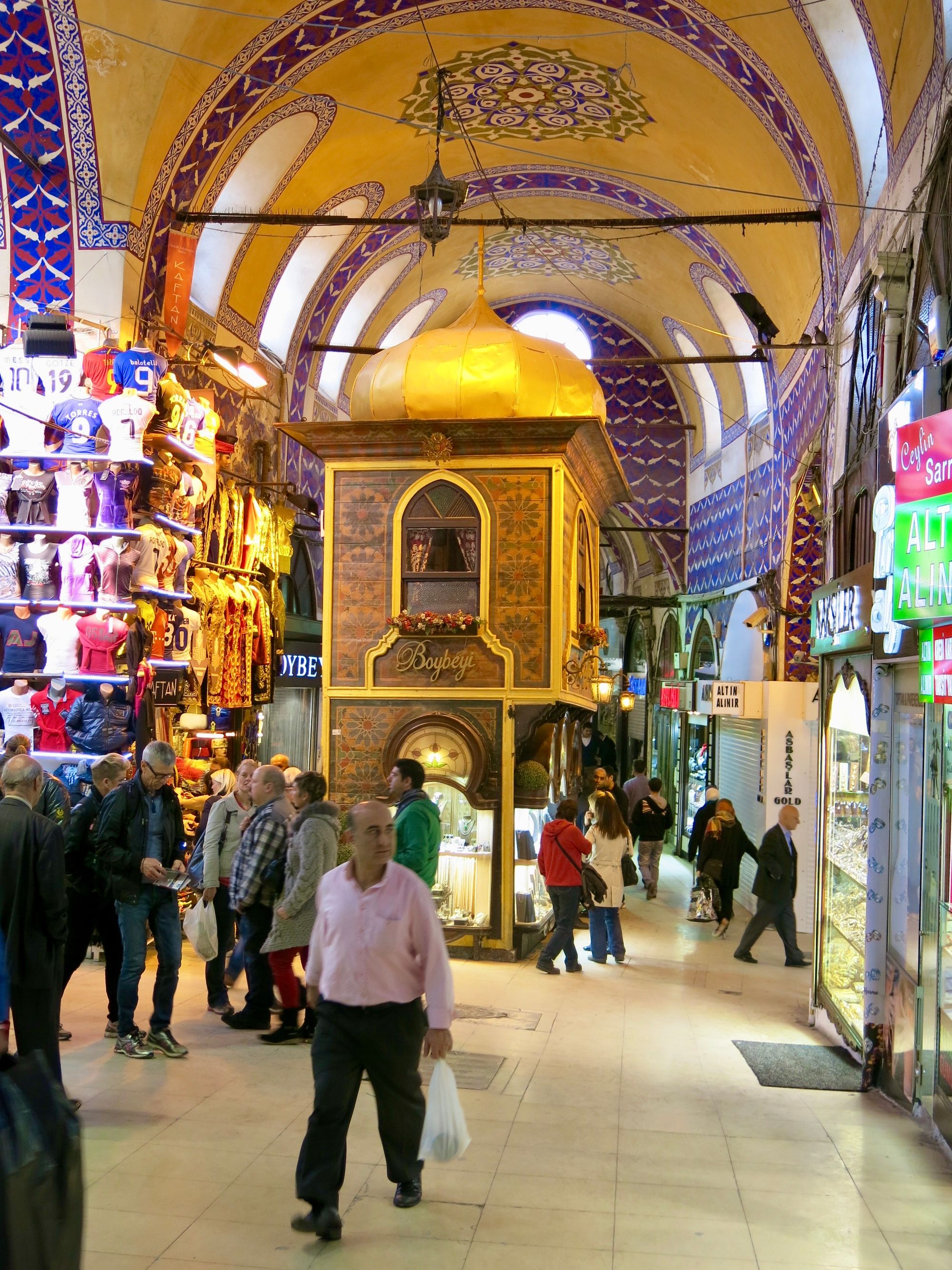
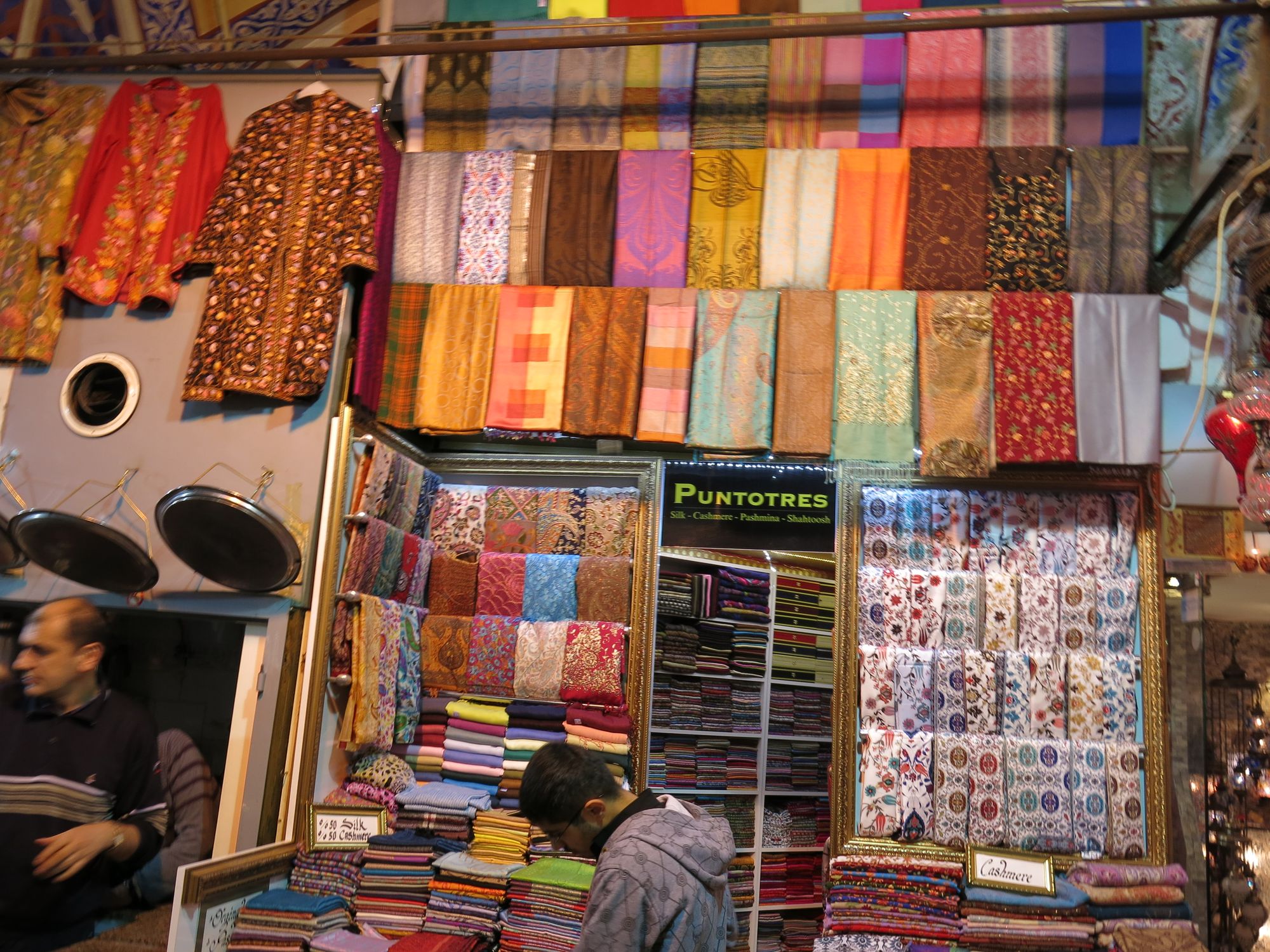
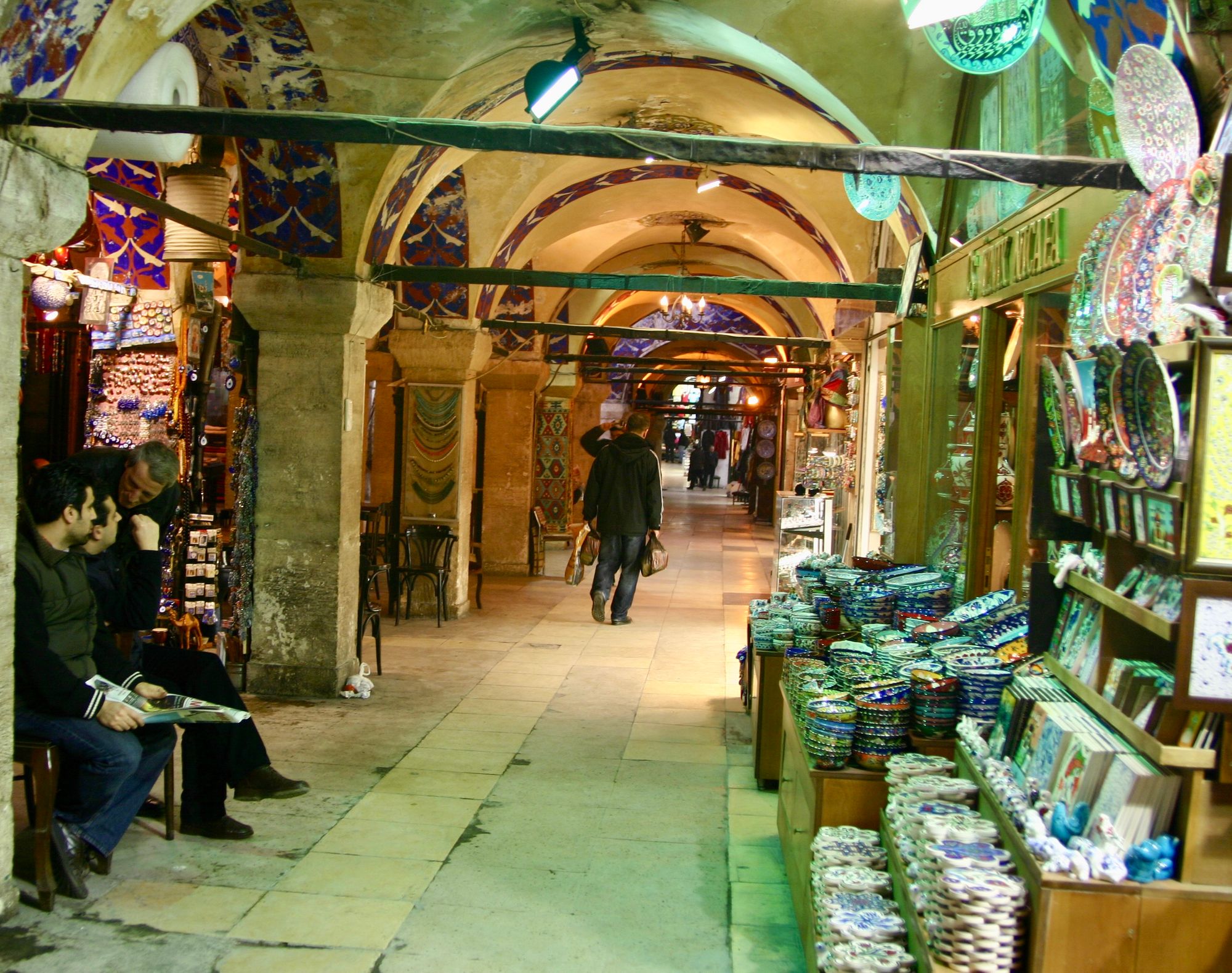
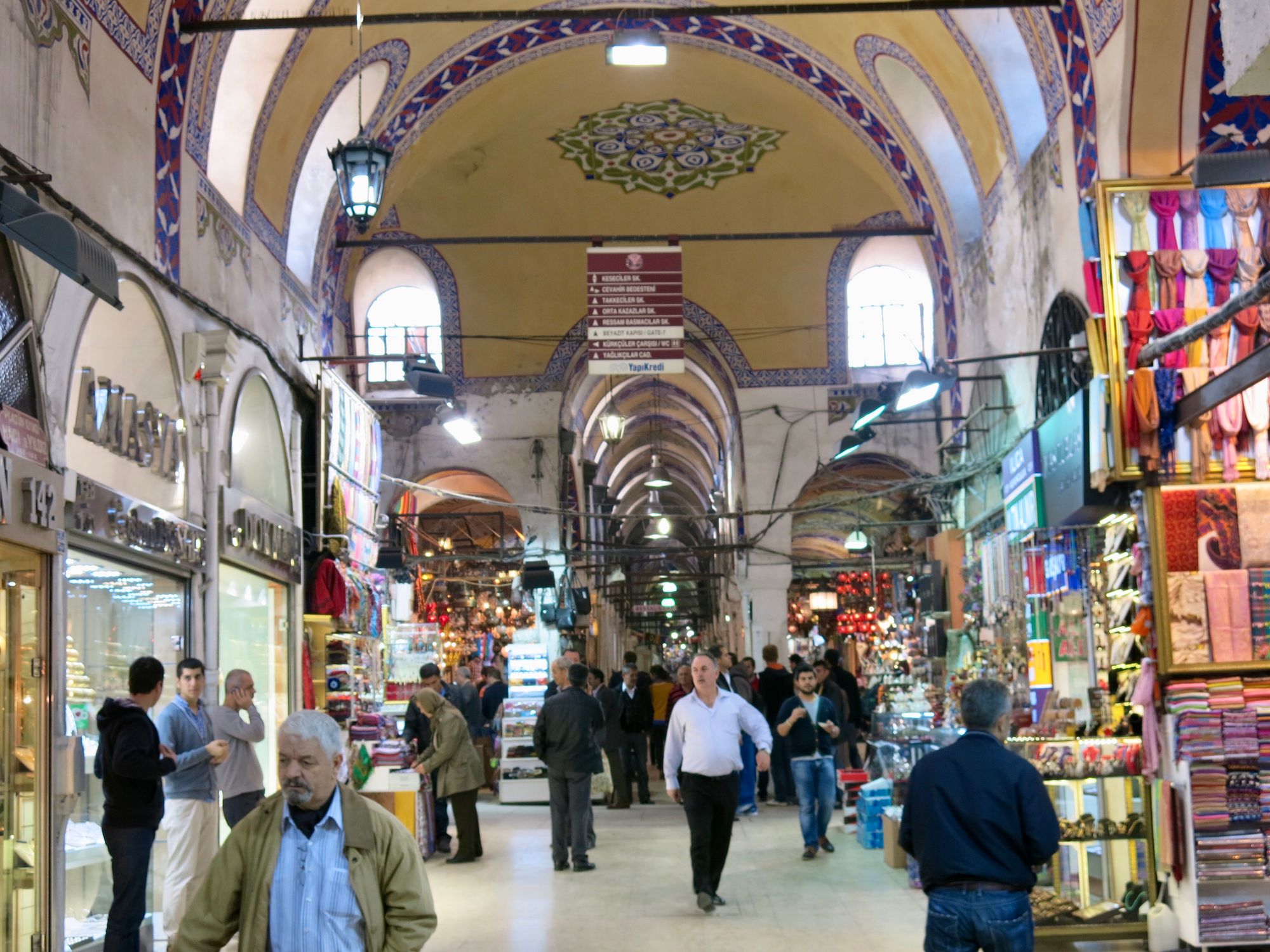
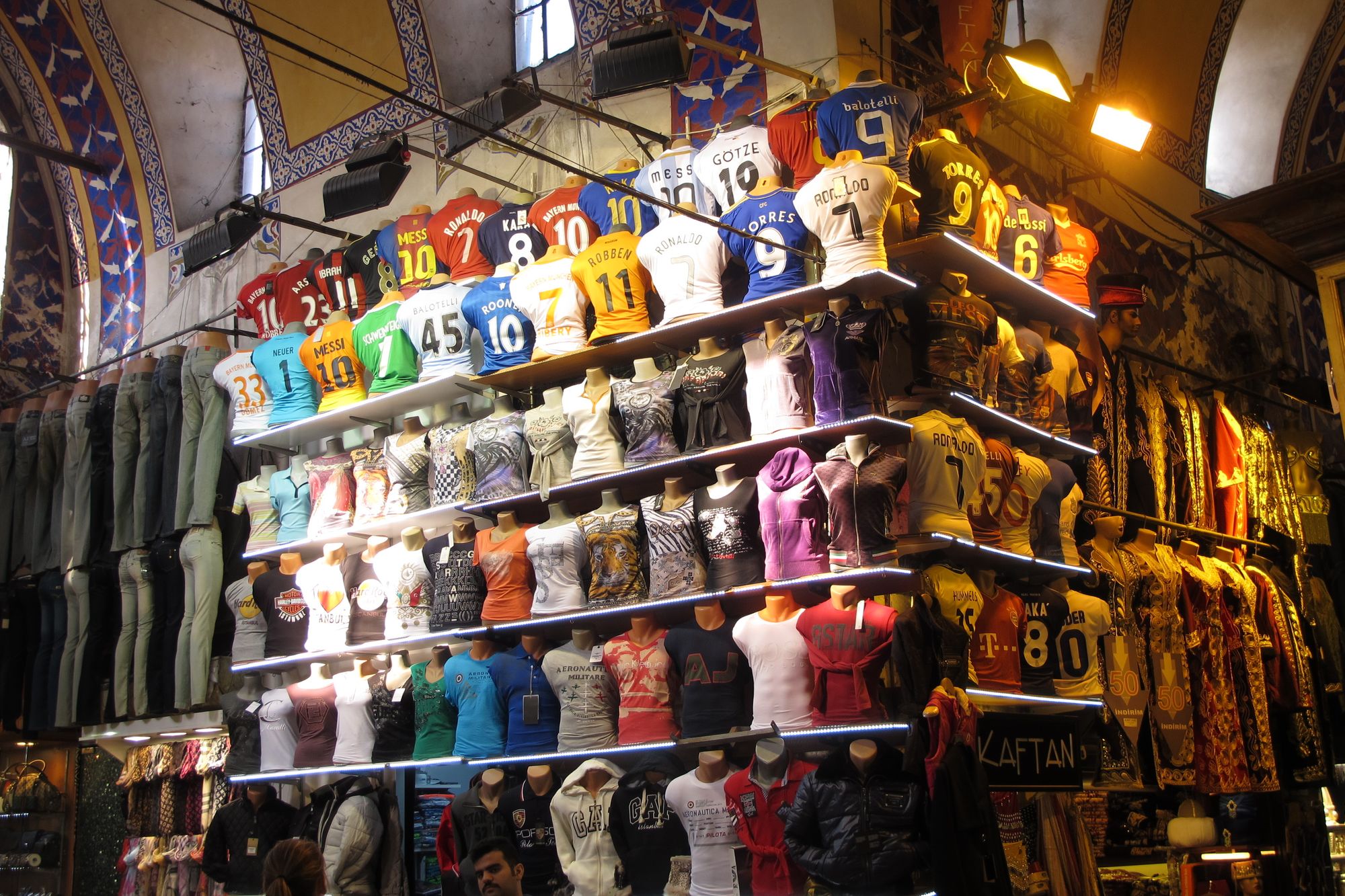
The Grand Bazaar and surrounding area in Istanbul is comprised of some of the world's greatest streets—both indoors and out
Balboa Park, San Diego's Exposure to the World
El Prado
El Prado is a central promenade that runs east to west, creating the central thoroughfare of Balboa Park. It is a long, wide boulevard that connects with various plazas and leads visitors to countless cultural institutions. To add to its unique character, most of the buildings lining the Prado are in the Spanish Colonial Revival architecture style, a richly ornamented mixture of European Spanish architecture and the Spanish Colonial architecture of New Spain-Mexico.
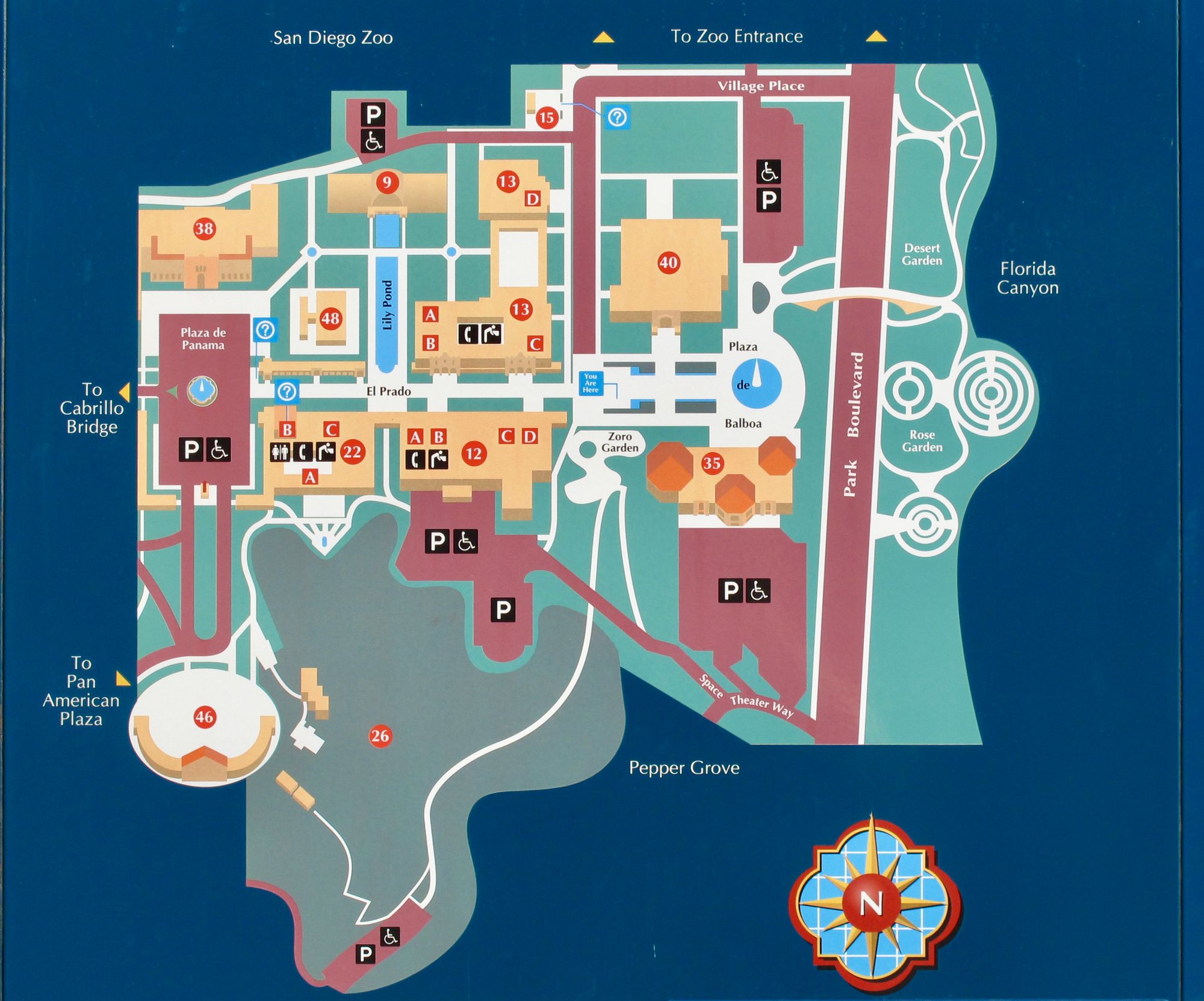
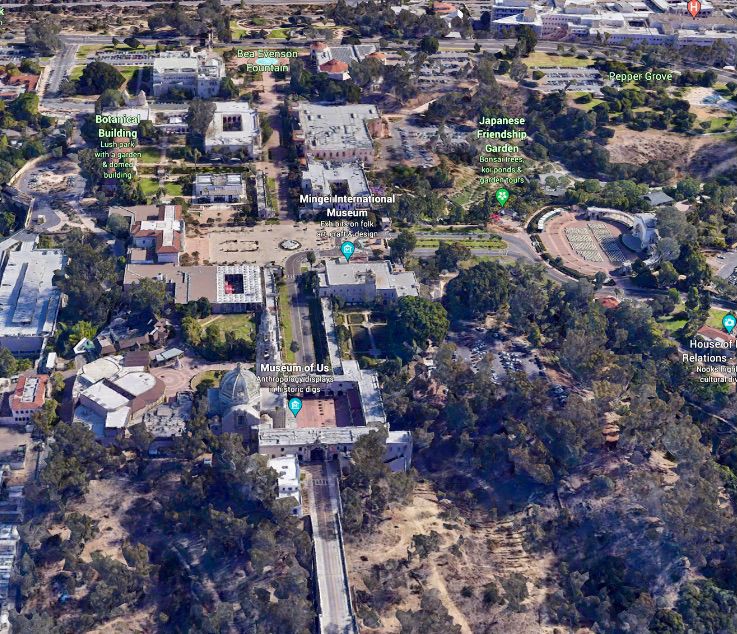
The two main attractions, the Prado and the SanDiego Zoo were built in 1915 as the Panama - California Exposition
Along this boulevard and its main plazas are many of the park's museums and cultural attractions, including the Museum of Us, the San Diego Museum of Art, the Mingei Museum, the Museum of Photographic Arts, and many others that center on natural history, art, and science. Other features along El Prado include the Reflection Pond, the latticed Botanical Building, and the Bea Evenson Fountain. Separate from these (but still within Balboa Park) are other attractions like the Pan American Plaza and the Spanish Village Arts Center.
This is all to say that it would be quite difficult to have a boring moment along the Prado – it is the ultimate people place, attracting visitors of all ages and walks of life...
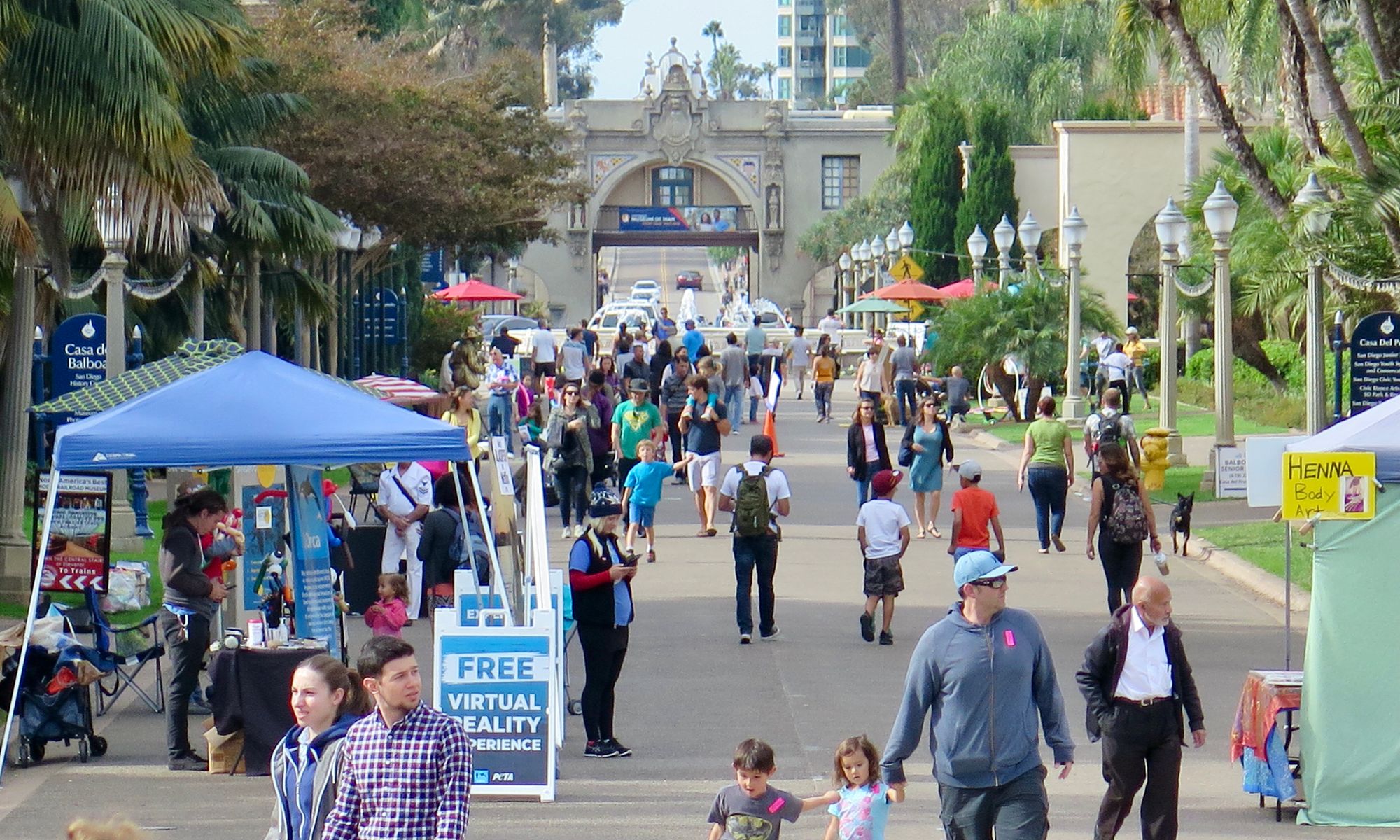
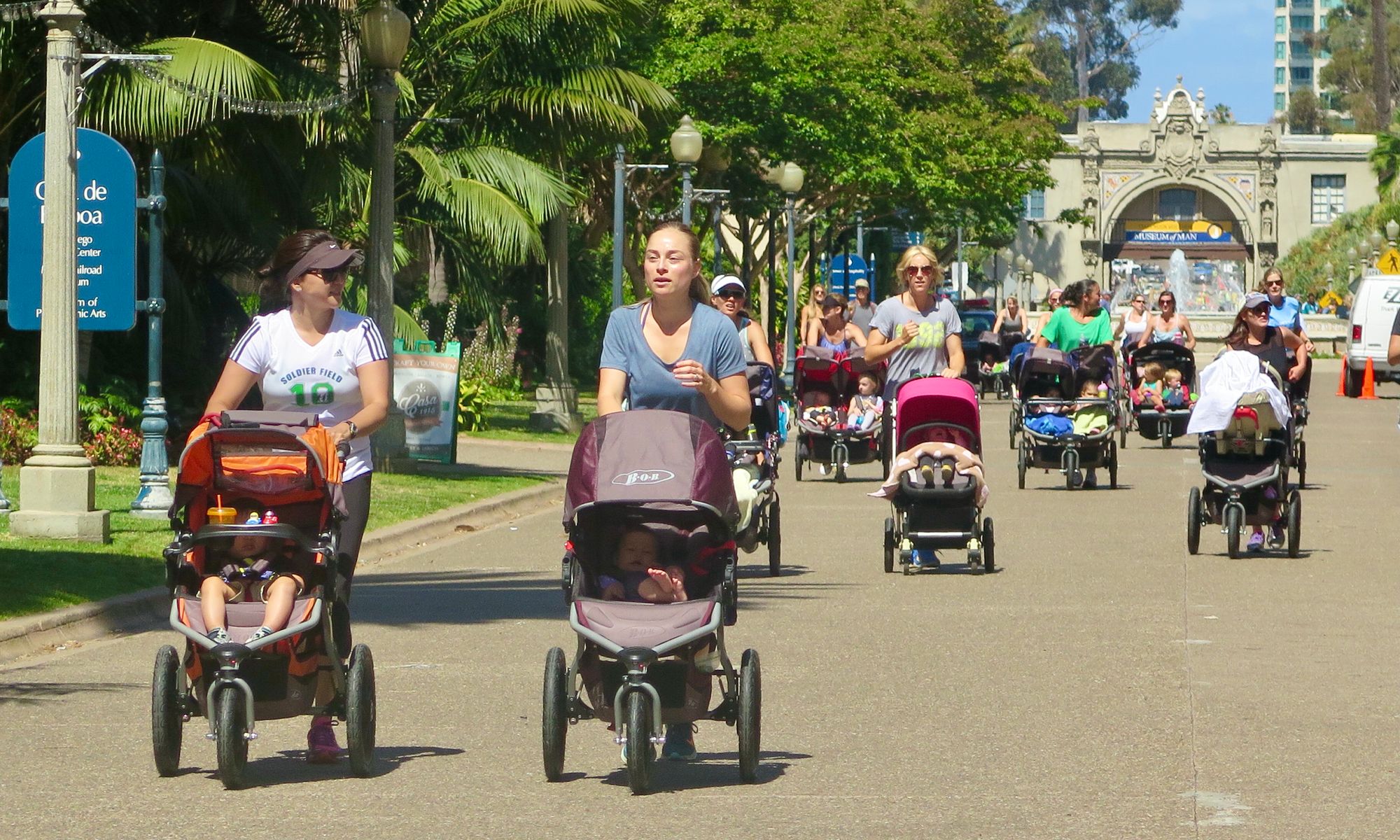
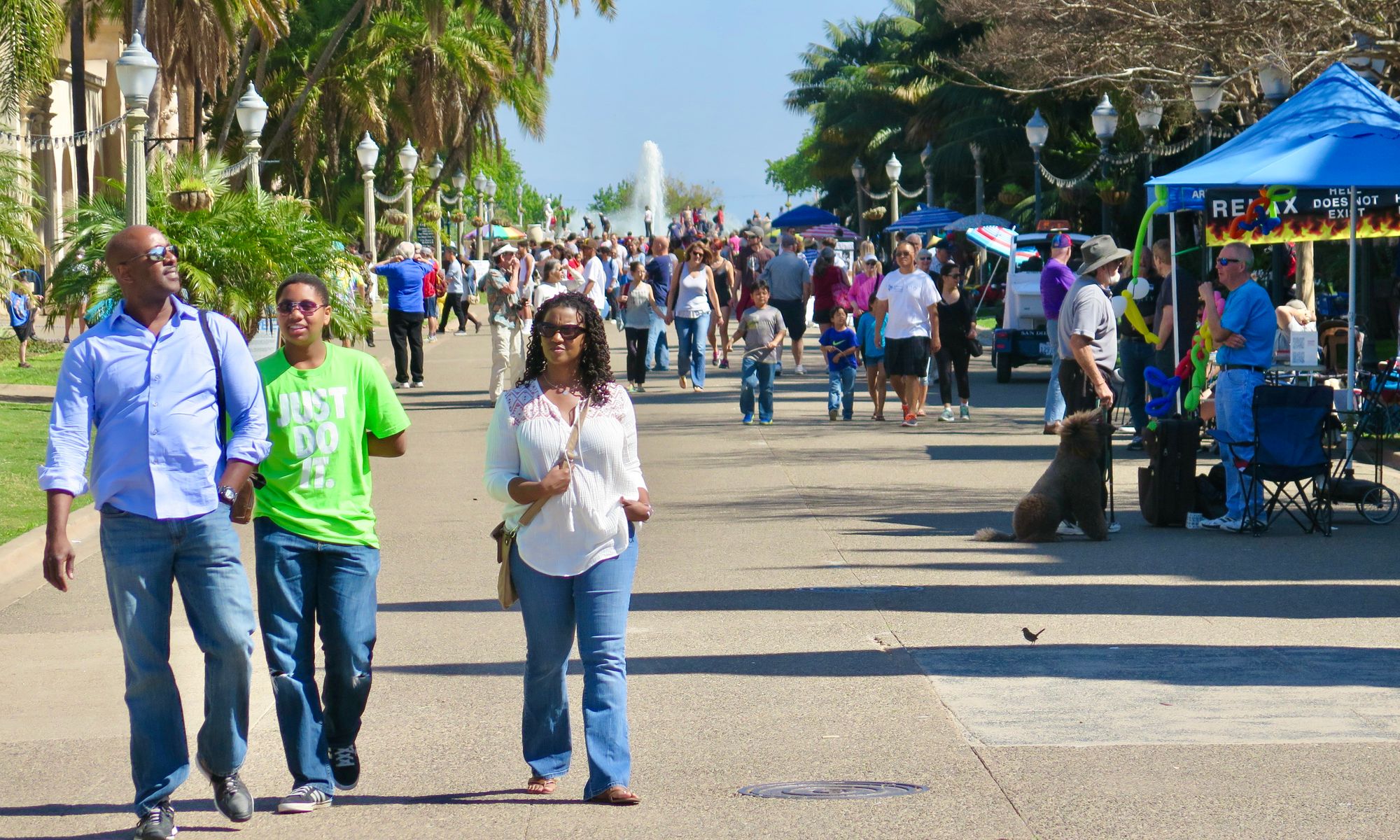
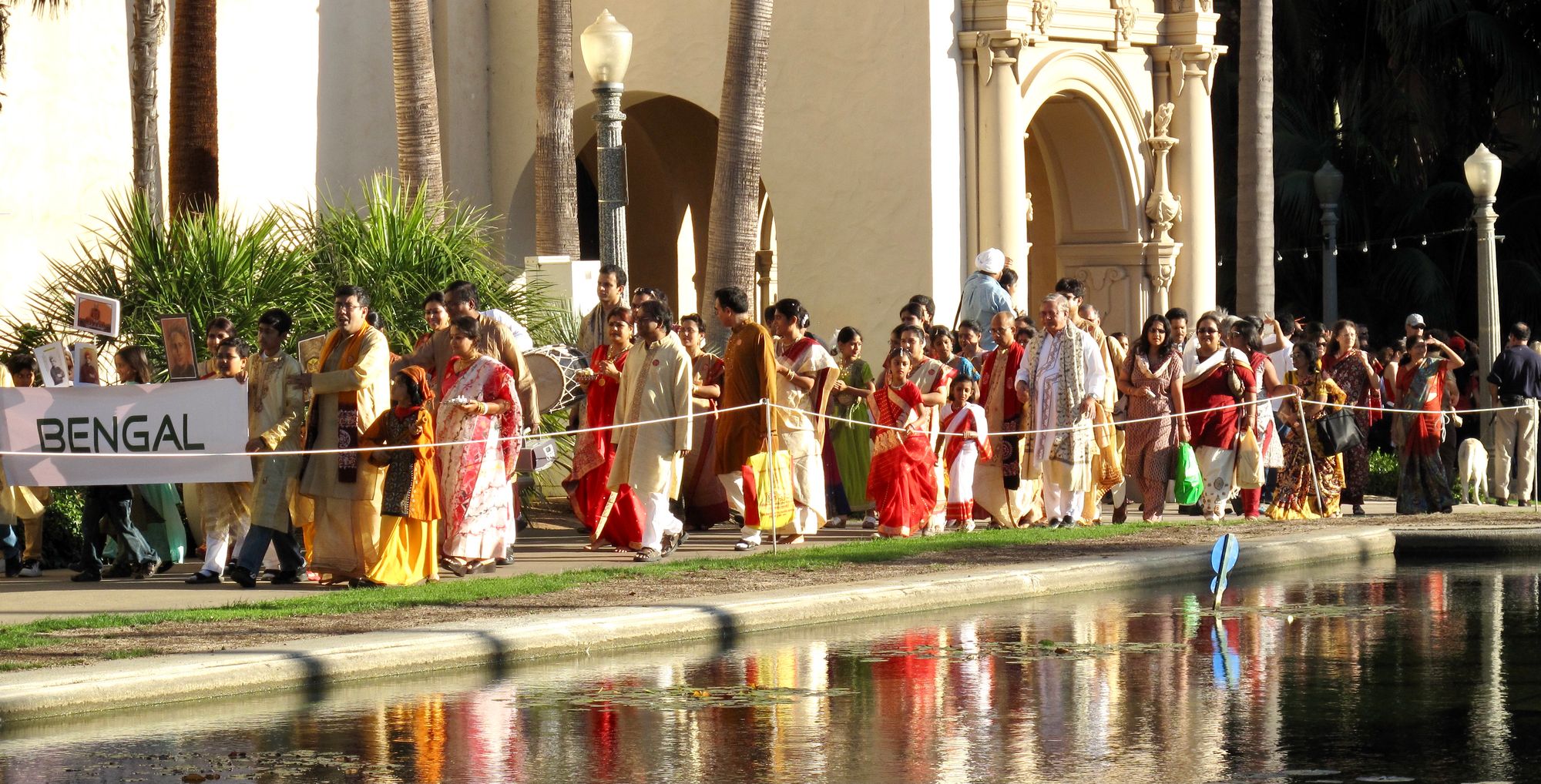
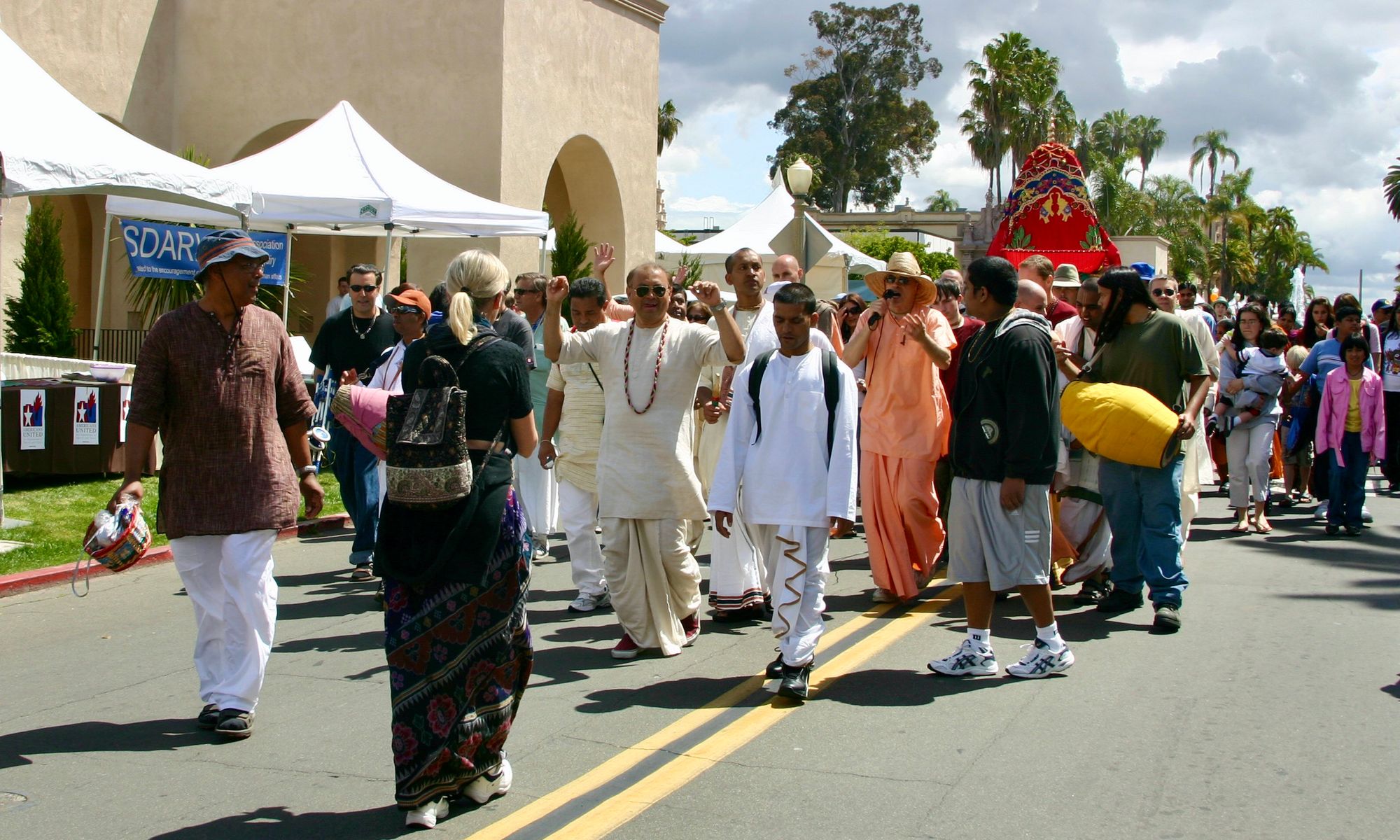
El Prado also connects many of the park's best-loved gathering places:
Plaza de Panama
The Plaza de Panama is located in the heart of Balboa Park, anchoring the west end. This central focal point was once a traffic circle, and since then has gradually become the main feature within the core of Balboa Park. While this is a big improvement, the fountain and the edges of the Plaza are still not at the level they could be. Some improvements could ensure that it is the main gathering point in all of Balboa Park.
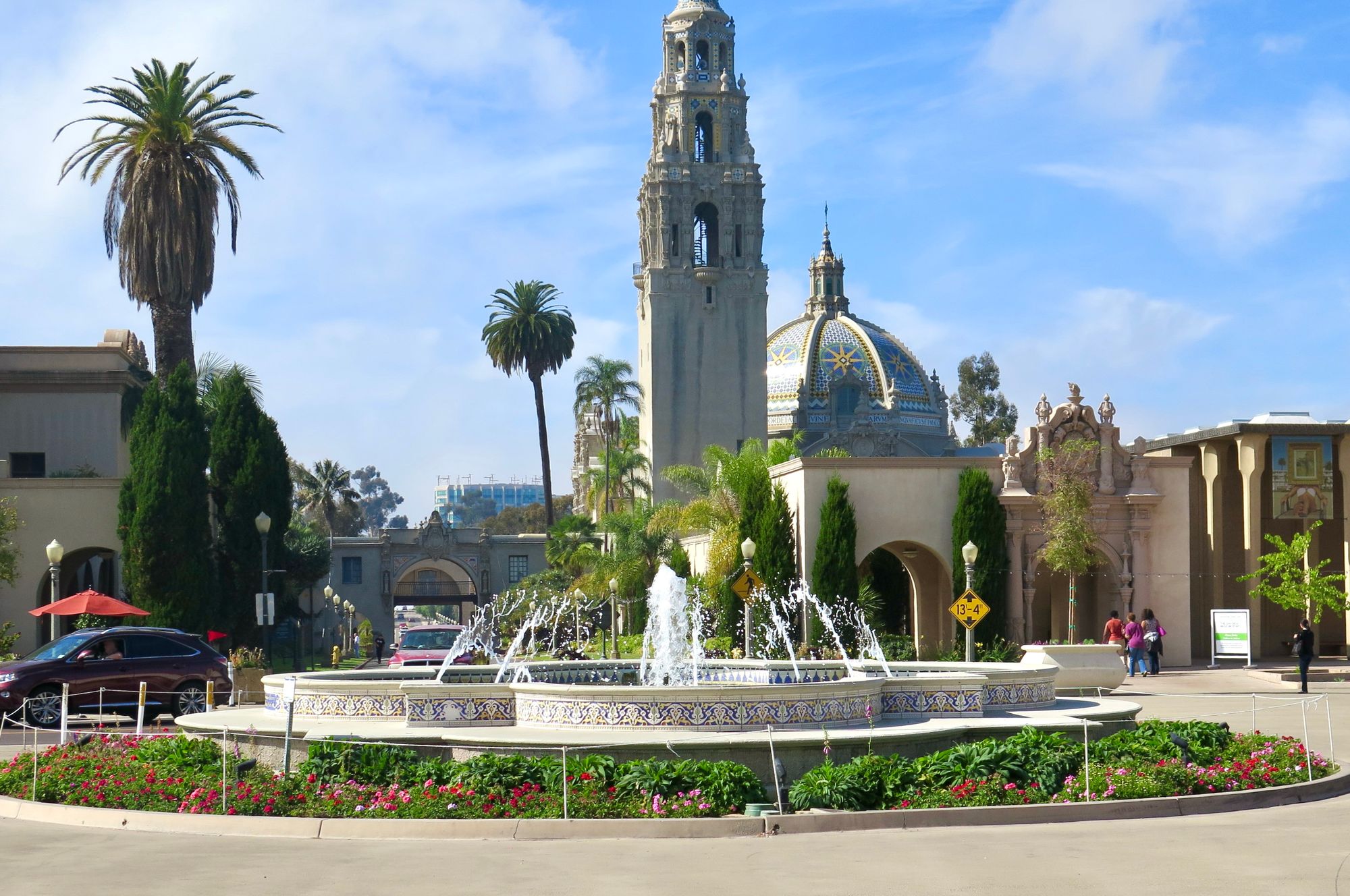
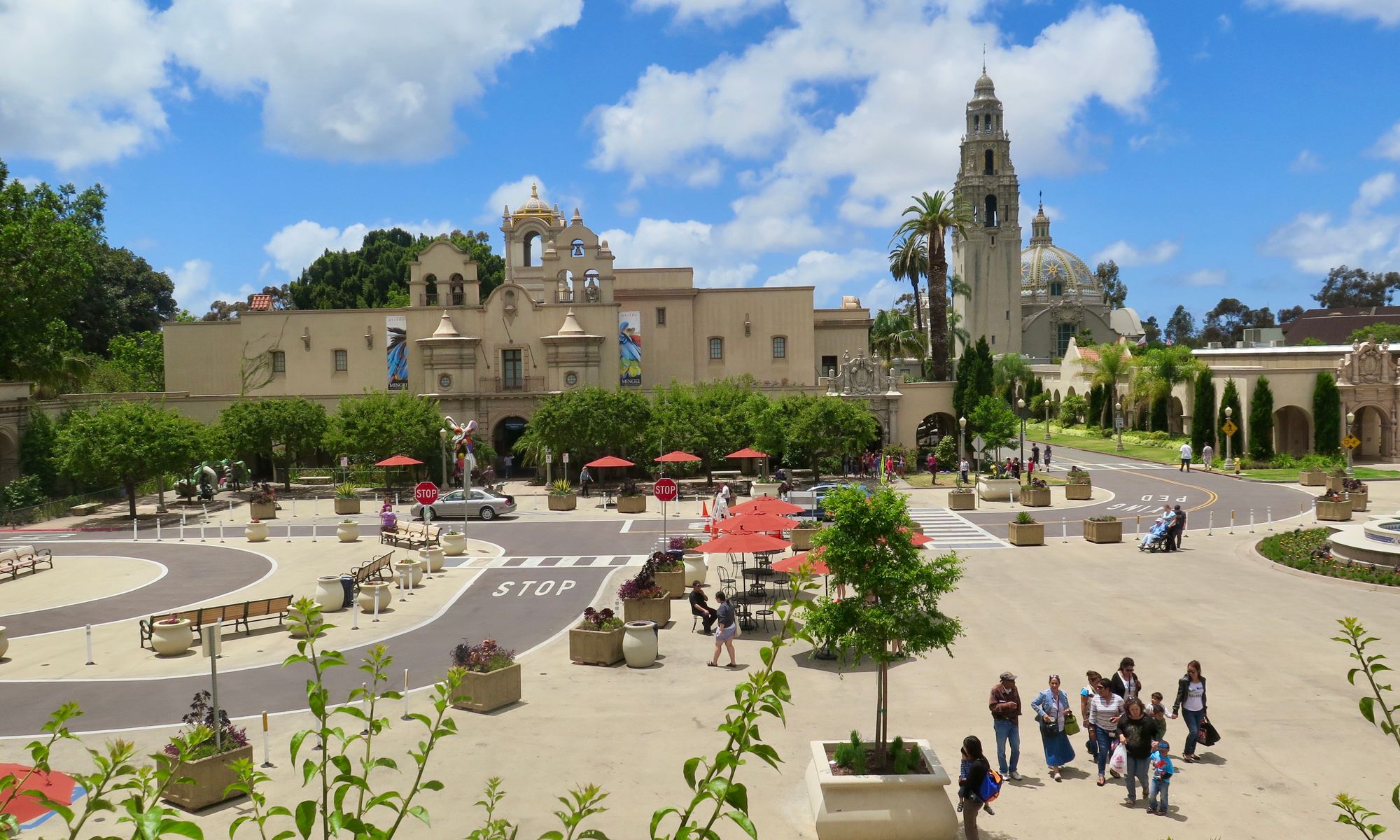
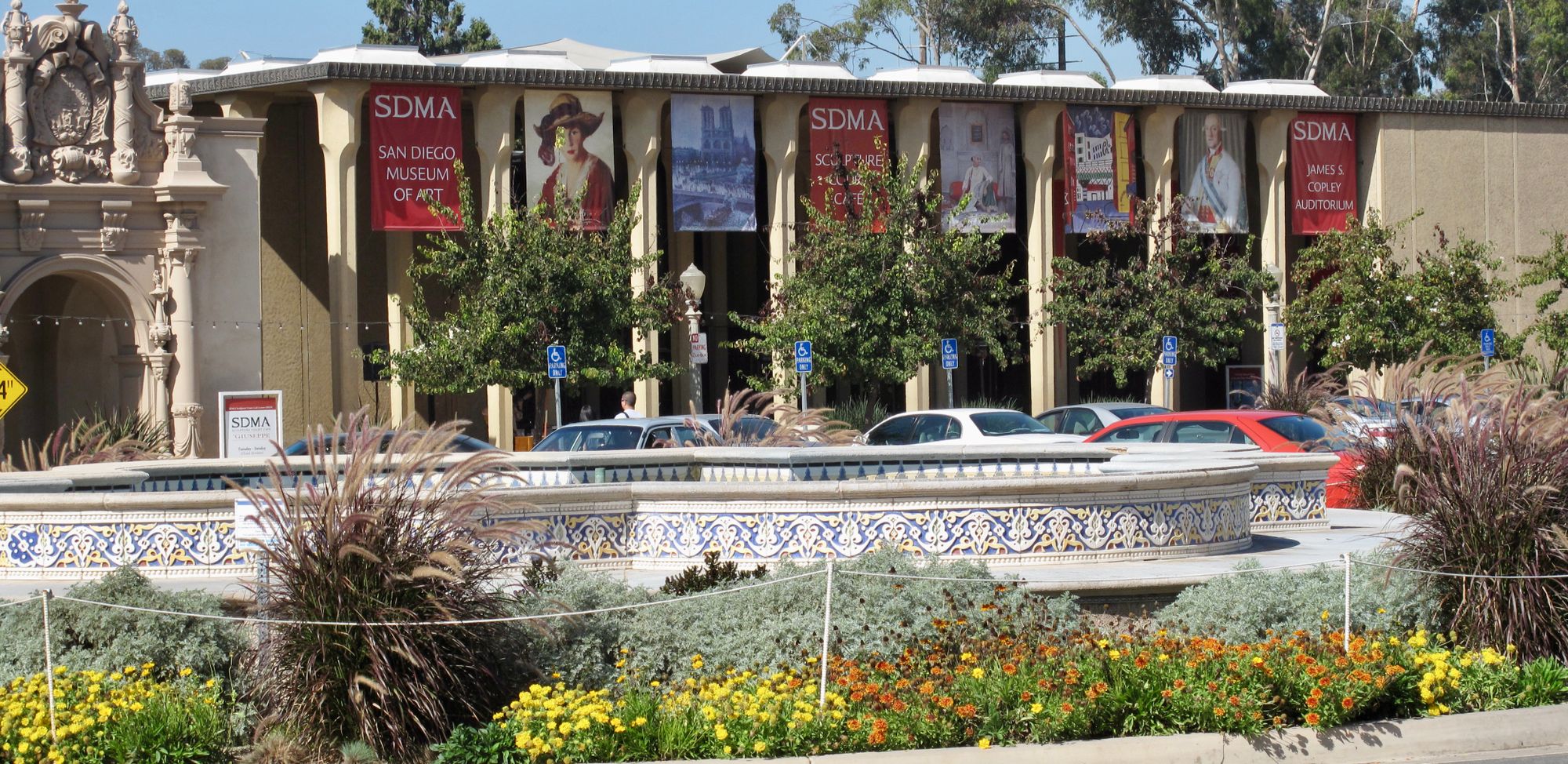
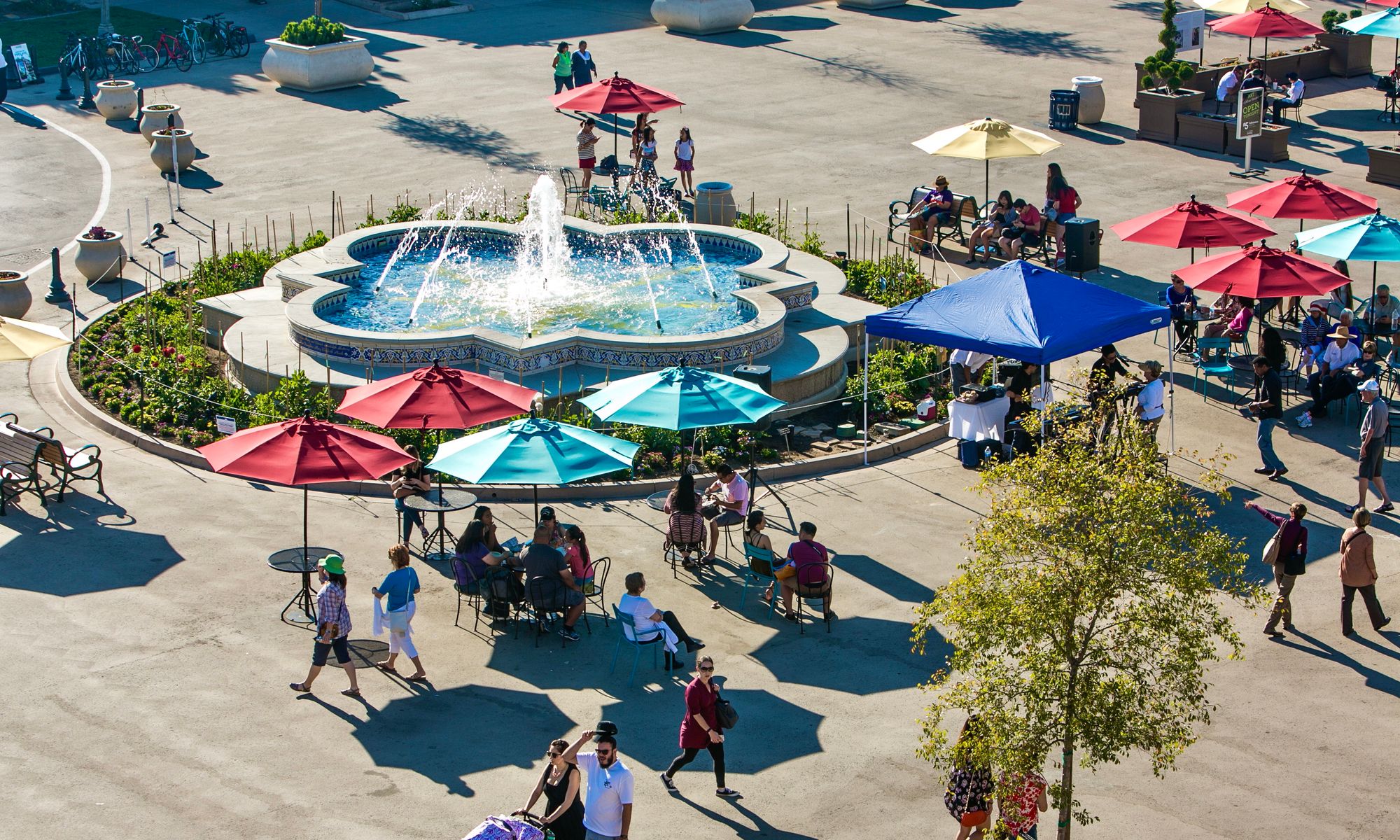
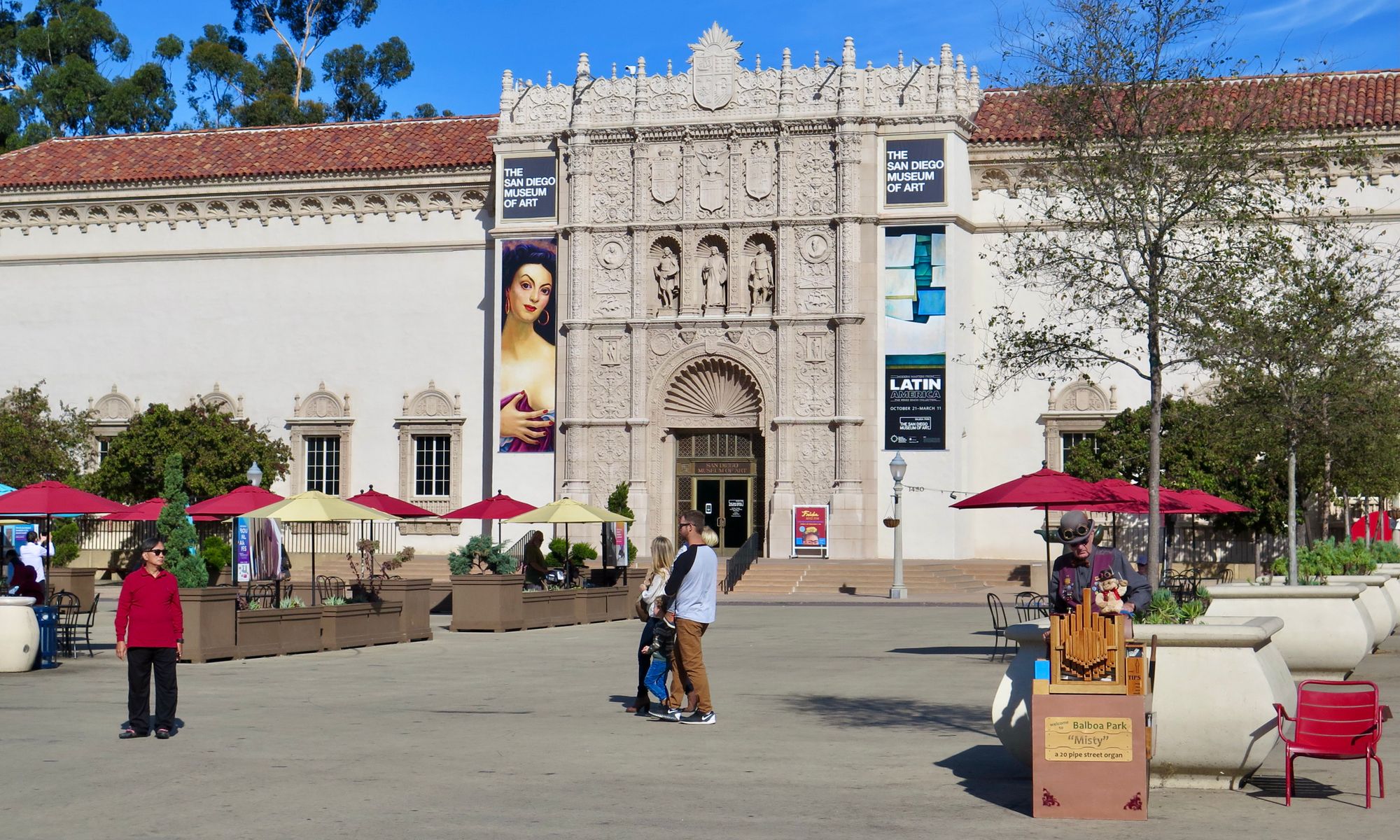
Plaza de Balboa
This plaza anchors the east end of Balboa Park, and centers on a water feature and some (limited) places to sit. It could really benefit from some small changes that would help it to be a main anchor for the park and the Prado: The Plaza's large pond draws people in, but it still needs a focal point and better seating to become a more energetic space.
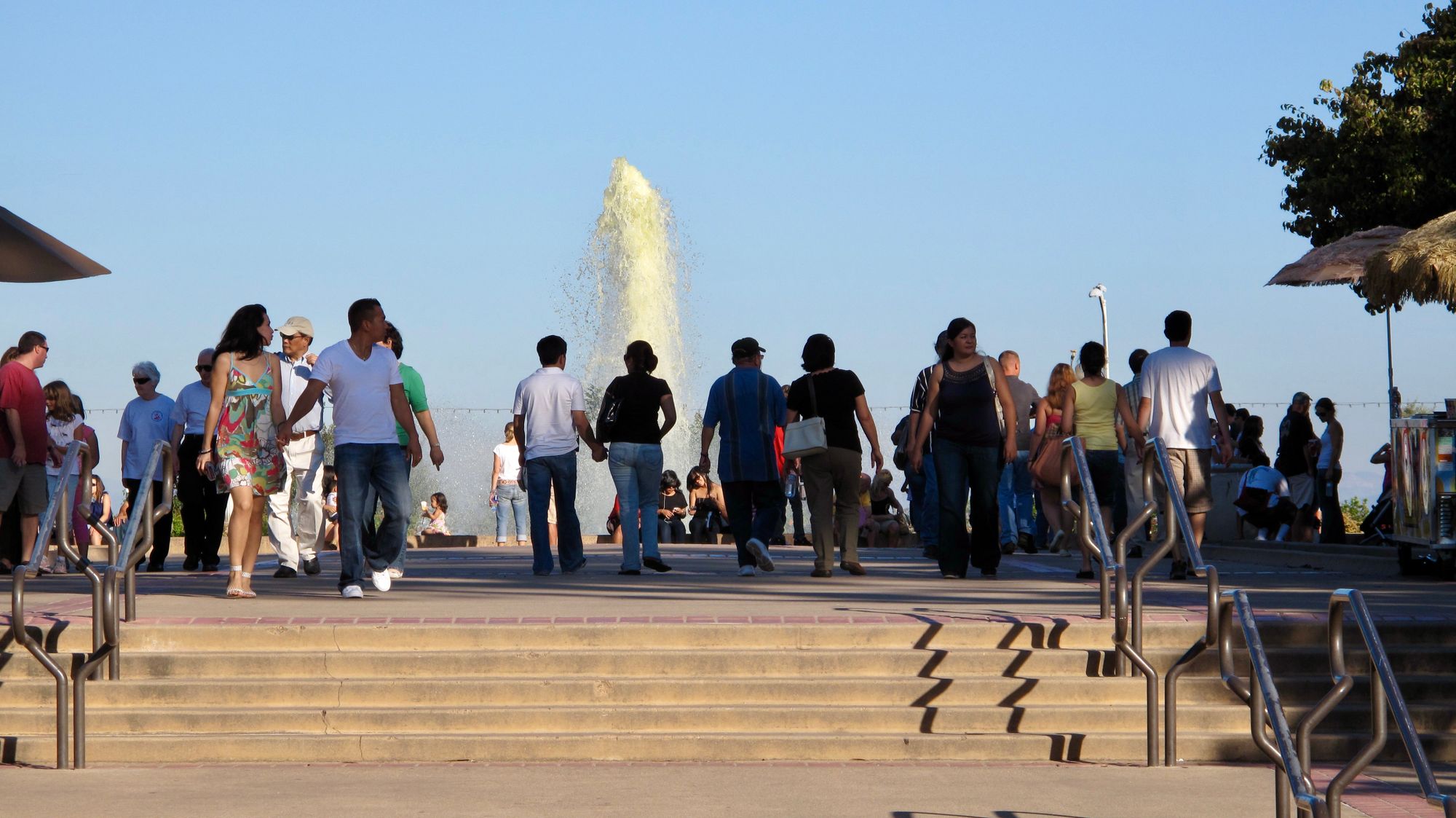
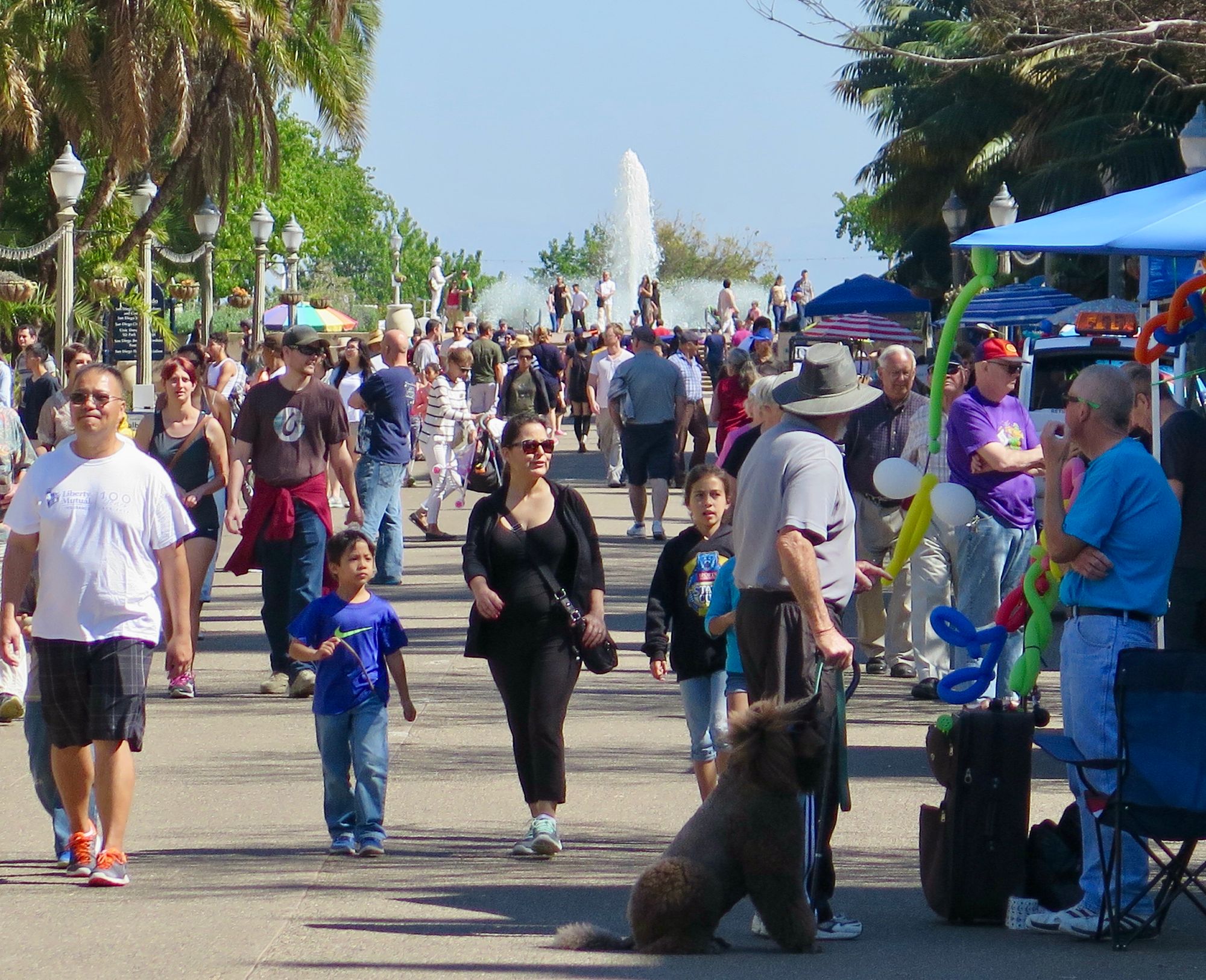
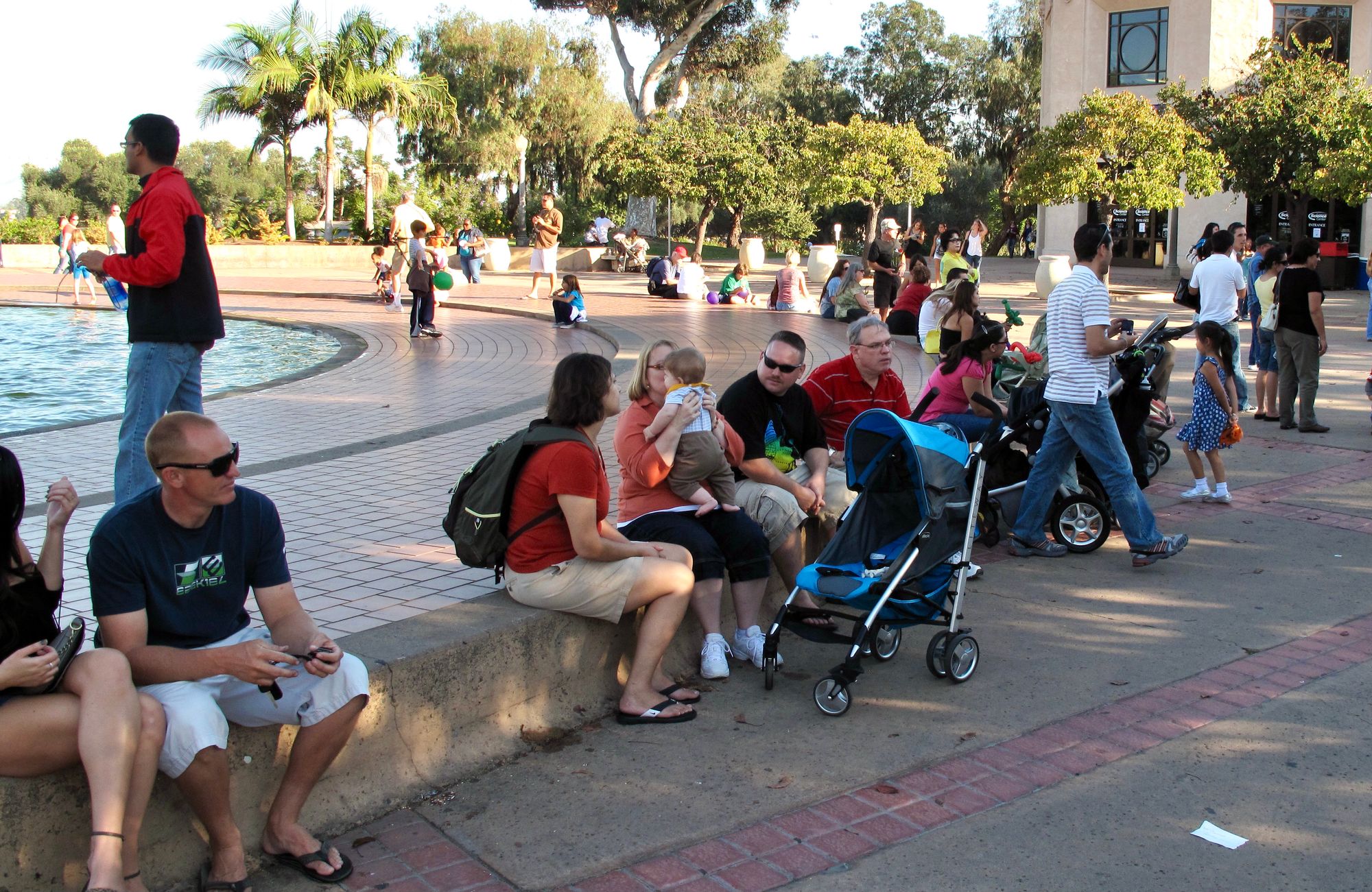

For more on Balboa Park:
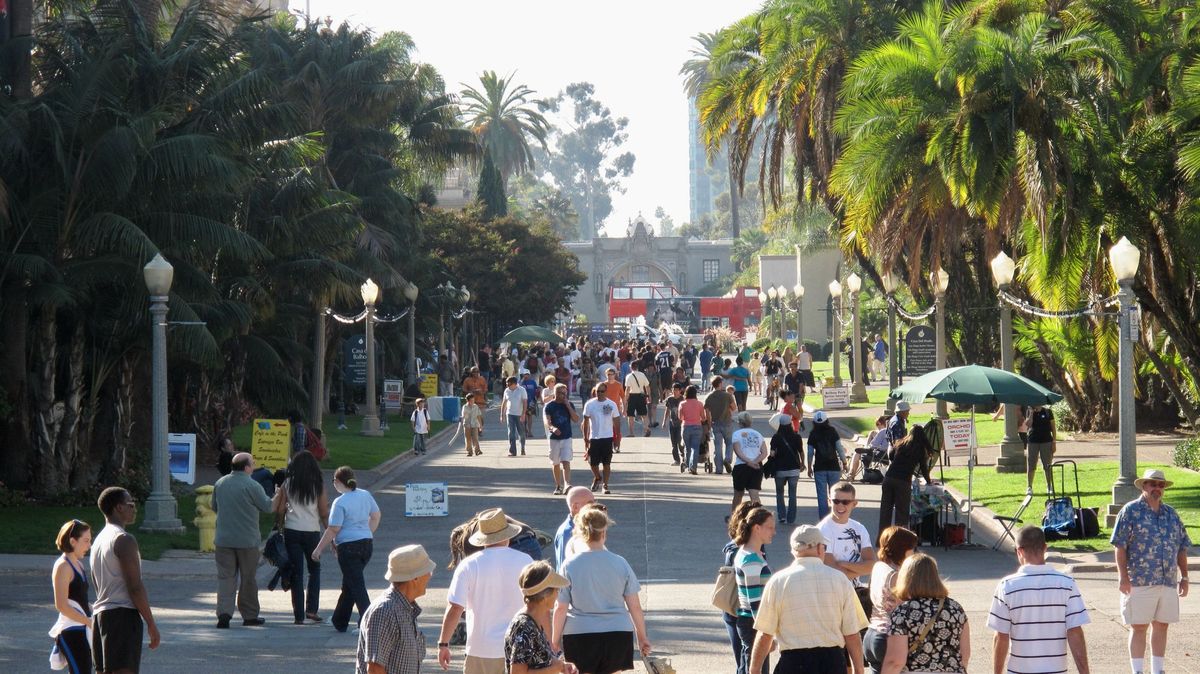
5 Key Takeaways from World-Class Streets
Here are some ingredients shared by many of the great streets in these four cities:
1) Narrow Roadways— The small streets have just one—or no—vehicle lanes. Many streets have no curbs, which sends a message to pedestrians that the streets are theirs. Some use bollards as props or for leaning or carrying on a conversation.
2) Storefronts Turned Inside-out - Storefronts feature big windows or fully open fronts showing their wares, with merchandise/food displays often spilling out directly onto the sidewalk.
3) Mix of Uses—There is a variety of stores and businesses, which is key to the social success of a street, particularly ones open at different times (weekdays, weekends, seasonally) to ensure things are lively from morning to midnight.
4) Human Scale—The buildings are generally two to six stories with housing or offices upstairs. Ground-floor cafes, markets, shops and other businesses that welcome the general public become an extension of the street life. When the base of a building has blank walls, it deadens the feel of an entire block. Even windows without much to see, such as those found in many bank lobbies or pharmacies, can feel like visual blight.
5) Distinctive Signs and Lighting—This helps highlight the unique identity of the neighborhood.
The Enduring Appeal of Great Streets
All these examples show streets that have nourished social life for at least a century. Although the four cities evolved under very different circumstances, they are all defined by streets that serve as a gathering spot for people of all ages and cultures.
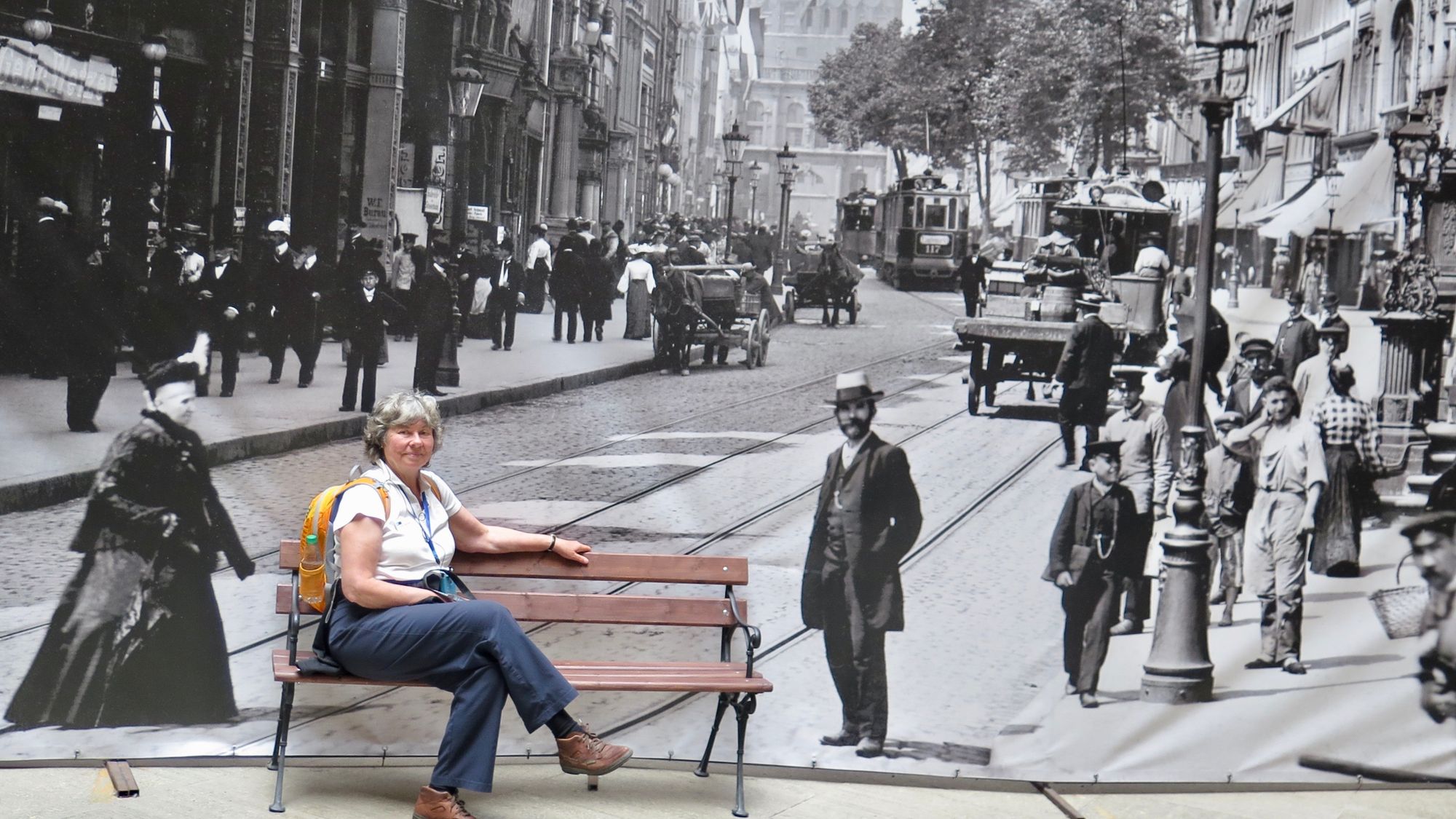
The Street
By John B. Keane
Here within a little street,
Is everything that is,
Of pomp and blessed poverty made sweet
And all that is of love
Of man and god above.
Of happiness and sorrow and conceit,
Of tragedy and death and bitter-sweet,
Of hope, despair, illusion and defeat
Related Articles
